Quick filters:
1798 ireland Stock Photos and Images
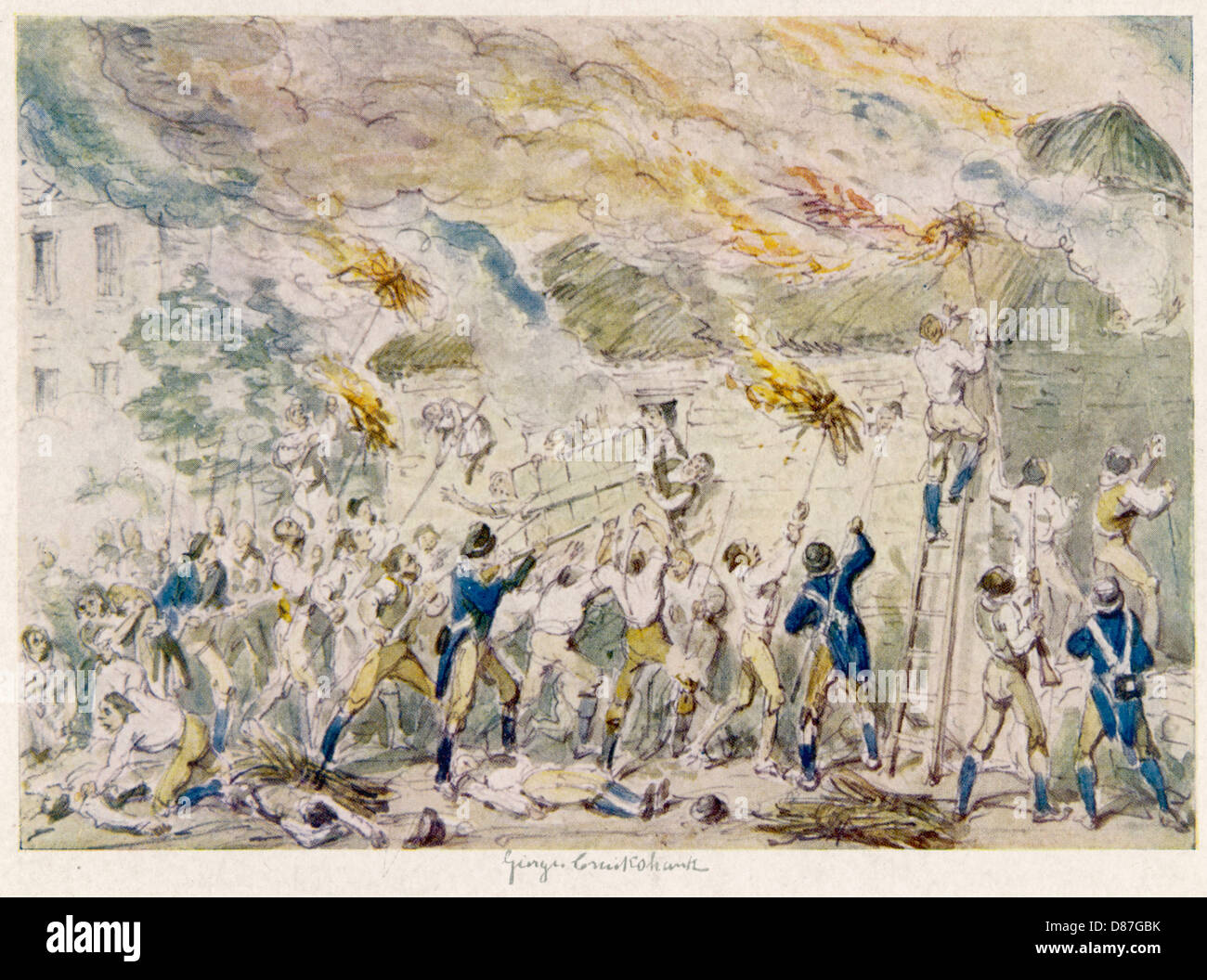 EVENTS/IRELAND 1798 Stock Photohttps://www.alamy.com/image-license-details/?v=1https://www.alamy.com/stock-photo-eventsireland-1798-56714887.html
EVENTS/IRELAND 1798 Stock Photohttps://www.alamy.com/image-license-details/?v=1https://www.alamy.com/stock-photo-eventsireland-1798-56714887.htmlRMD87GBK–EVENTS/IRELAND 1798
 IRELAND Battle of Vinegar Hill 1798. Catholic rebels being driven off the hill watched by the British commander General Lake Stock Photohttps://www.alamy.com/image-license-details/?v=1https://www.alamy.com/stock-photo-ireland-battle-of-vinegar-hill-1798-catholic-rebels-being-driven-off-25098393.html
IRELAND Battle of Vinegar Hill 1798. Catholic rebels being driven off the hill watched by the British commander General Lake Stock Photohttps://www.alamy.com/image-license-details/?v=1https://www.alamy.com/stock-photo-ireland-battle-of-vinegar-hill-1798-catholic-rebels-being-driven-off-25098393.htmlRMBCR975–IRELAND Battle of Vinegar Hill 1798. Catholic rebels being driven off the hill watched by the British commander General Lake
 Theobald Wolfe Tone, aka Wolfe Tone, 1763 – 1798. Irish revolutionary figure, leader of the 1798 Irish Rebellion, one of the founding members of the United Irishmen he is regarded as the father of Irish republicanism. From Hutchinson's History of the Nations, published 1915. Stock Photohttps://www.alamy.com/image-license-details/?v=1https://www.alamy.com/stock-photo-theobald-wolfe-tone-aka-wolfe-tone-1763-1798-irish-revolutionary-figure-145163862.html
Theobald Wolfe Tone, aka Wolfe Tone, 1763 – 1798. Irish revolutionary figure, leader of the 1798 Irish Rebellion, one of the founding members of the United Irishmen he is regarded as the father of Irish republicanism. From Hutchinson's History of the Nations, published 1915. Stock Photohttps://www.alamy.com/image-license-details/?v=1https://www.alamy.com/stock-photo-theobald-wolfe-tone-aka-wolfe-tone-1763-1798-irish-revolutionary-figure-145163862.htmlRMJC4NYJ–Theobald Wolfe Tone, aka Wolfe Tone, 1763 – 1798. Irish revolutionary figure, leader of the 1798 Irish Rebellion, one of the founding members of the United Irishmen he is regarded as the father of Irish republicanism. From Hutchinson's History of the Nations, published 1915.
 Bust of Martha Baker Swinburne, c. 1778, Christopher Hewetson, Irish, c.1739—1798, Ireland, Bronze, H. 49.5 cm (19 1/2 in.), 62.2 x 33 cm (24 1/2 x 13 in. ) (including base Stock Photohttps://www.alamy.com/image-license-details/?v=1https://www.alamy.com/bust-of-martha-baker-swinburne-c-1778-christopher-hewetson-irish-c17391798-ireland-bronze-h-495-cm-19-12-in-622-x-33-cm-24-12-x-13-in-including-base-image328645262.html
Bust of Martha Baker Swinburne, c. 1778, Christopher Hewetson, Irish, c.1739—1798, Ireland, Bronze, H. 49.5 cm (19 1/2 in.), 62.2 x 33 cm (24 1/2 x 13 in. ) (including base Stock Photohttps://www.alamy.com/image-license-details/?v=1https://www.alamy.com/bust-of-martha-baker-swinburne-c-1778-christopher-hewetson-irish-c17391798-ireland-bronze-h-495-cm-19-12-in-622-x-33-cm-24-12-x-13-in-including-base-image328645262.htmlRM2A2K2AP–Bust of Martha Baker Swinburne, c. 1778, Christopher Hewetson, Irish, c.1739—1798, Ireland, Bronze, H. 49.5 cm (19 1/2 in.), 62.2 x 33 cm (24 1/2 x 13 in. ) (including base
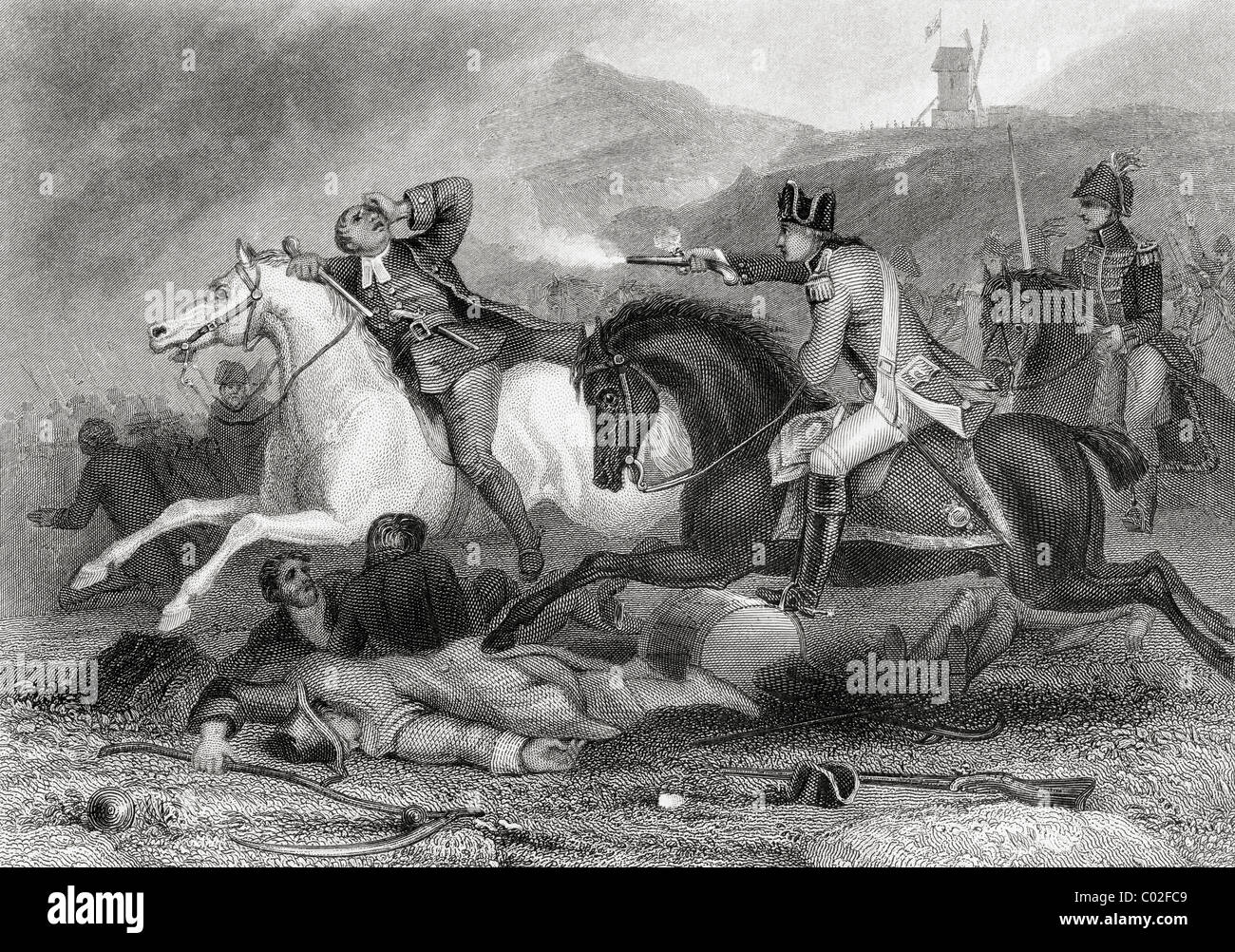 Rebel leader Father Peter Clinch being shot at the Battle of Vinegar Hill, Enniscorthy, County Wexford, Ireland in 1798. Stock Photohttps://www.alamy.com/image-license-details/?v=1https://www.alamy.com/stock-photo-rebel-leader-father-peter-clinch-being-shot-at-the-battle-of-vinegar-34476745.html
Rebel leader Father Peter Clinch being shot at the Battle of Vinegar Hill, Enniscorthy, County Wexford, Ireland in 1798. Stock Photohttps://www.alamy.com/image-license-details/?v=1https://www.alamy.com/stock-photo-rebel-leader-father-peter-clinch-being-shot-at-the-battle-of-vinegar-34476745.htmlRMC02FC9–Rebel leader Father Peter Clinch being shot at the Battle of Vinegar Hill, Enniscorthy, County Wexford, Ireland in 1798.
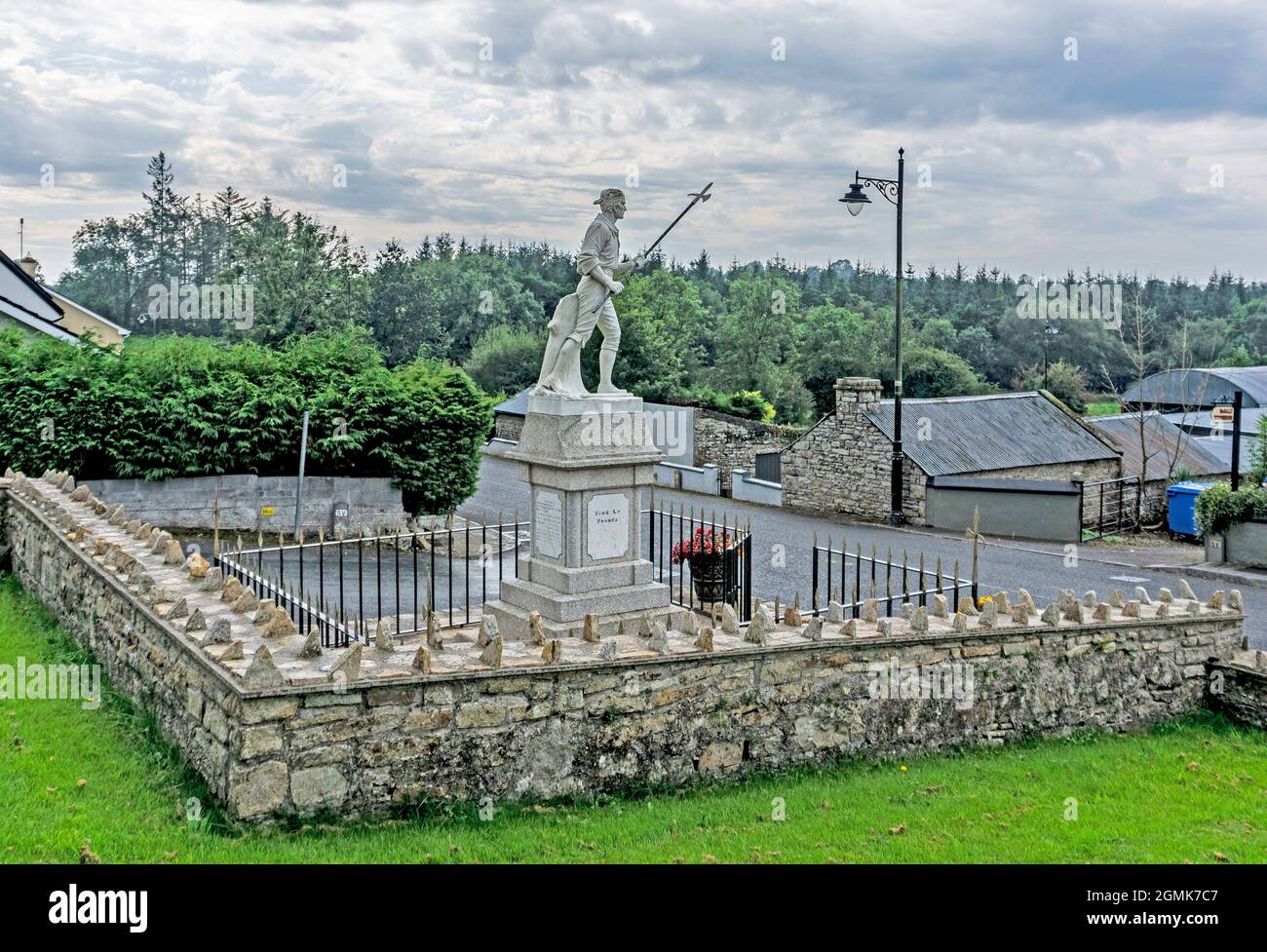 The statue an Irish rebel armed with a pike, in Ballinamuck, Longford, Ireland. in 1798, France invaded Ireland to assist an Irish rebellion. Stock Photohttps://www.alamy.com/image-license-details/?v=1https://www.alamy.com/the-statue-an-irish-rebel-armed-with-a-pike-in-ballinamuck-longford-ireland-in-1798-france-invaded-ireland-to-assist-an-irish-rebellion-image442975239.html
The statue an Irish rebel armed with a pike, in Ballinamuck, Longford, Ireland. in 1798, France invaded Ireland to assist an Irish rebellion. Stock Photohttps://www.alamy.com/image-license-details/?v=1https://www.alamy.com/the-statue-an-irish-rebel-armed-with-a-pike-in-ballinamuck-longford-ireland-in-1798-france-invaded-ireland-to-assist-an-irish-rebellion-image442975239.htmlRF2GMK7C7–The statue an Irish rebel armed with a pike, in Ballinamuck, Longford, Ireland. in 1798, France invaded Ireland to assist an Irish rebellion.
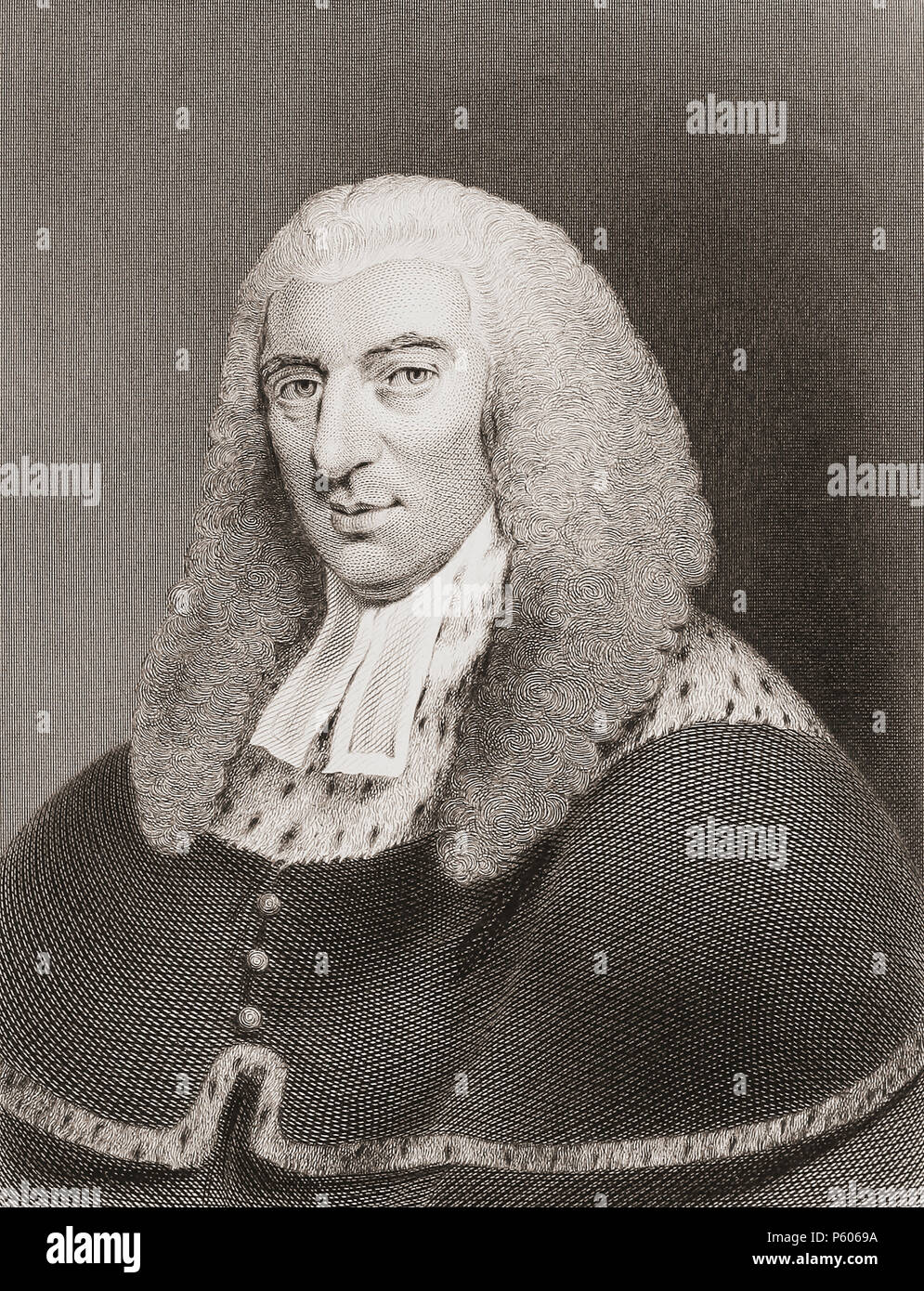 Arthur Wolfe, 1st Viscount Kilwarden, 1739-1803. Irish peer, politician and judge. Lord Chief Justice of Ireland. From History of the Irish Rebellion in 1798; with Memoirs of the Union, and Emmett’s Insurrection in 1803 by W.H. Maxwell. Published in London 1854. Stock Photohttps://www.alamy.com/image-license-details/?v=1https://www.alamy.com/arthur-wolfe-1st-viscount-kilwarden-1739-1803-irish-peer-politician-and-judge-lord-chief-justice-of-ireland-from-history-of-the-irish-rebellion-in-1798-with-memoirs-of-the-union-and-emmetts-insurrection-in-1803-by-wh-maxwell-published-in-london-1854-image210217318.html
Arthur Wolfe, 1st Viscount Kilwarden, 1739-1803. Irish peer, politician and judge. Lord Chief Justice of Ireland. From History of the Irish Rebellion in 1798; with Memoirs of the Union, and Emmett’s Insurrection in 1803 by W.H. Maxwell. Published in London 1854. Stock Photohttps://www.alamy.com/image-license-details/?v=1https://www.alamy.com/arthur-wolfe-1st-viscount-kilwarden-1739-1803-irish-peer-politician-and-judge-lord-chief-justice-of-ireland-from-history-of-the-irish-rebellion-in-1798-with-memoirs-of-the-union-and-emmetts-insurrection-in-1803-by-wh-maxwell-published-in-london-1854-image210217318.htmlRMP6069A–Arthur Wolfe, 1st Viscount Kilwarden, 1739-1803. Irish peer, politician and judge. Lord Chief Justice of Ireland. From History of the Irish Rebellion in 1798; with Memoirs of the Union, and Emmett’s Insurrection in 1803 by W.H. Maxwell. Published in London 1854.
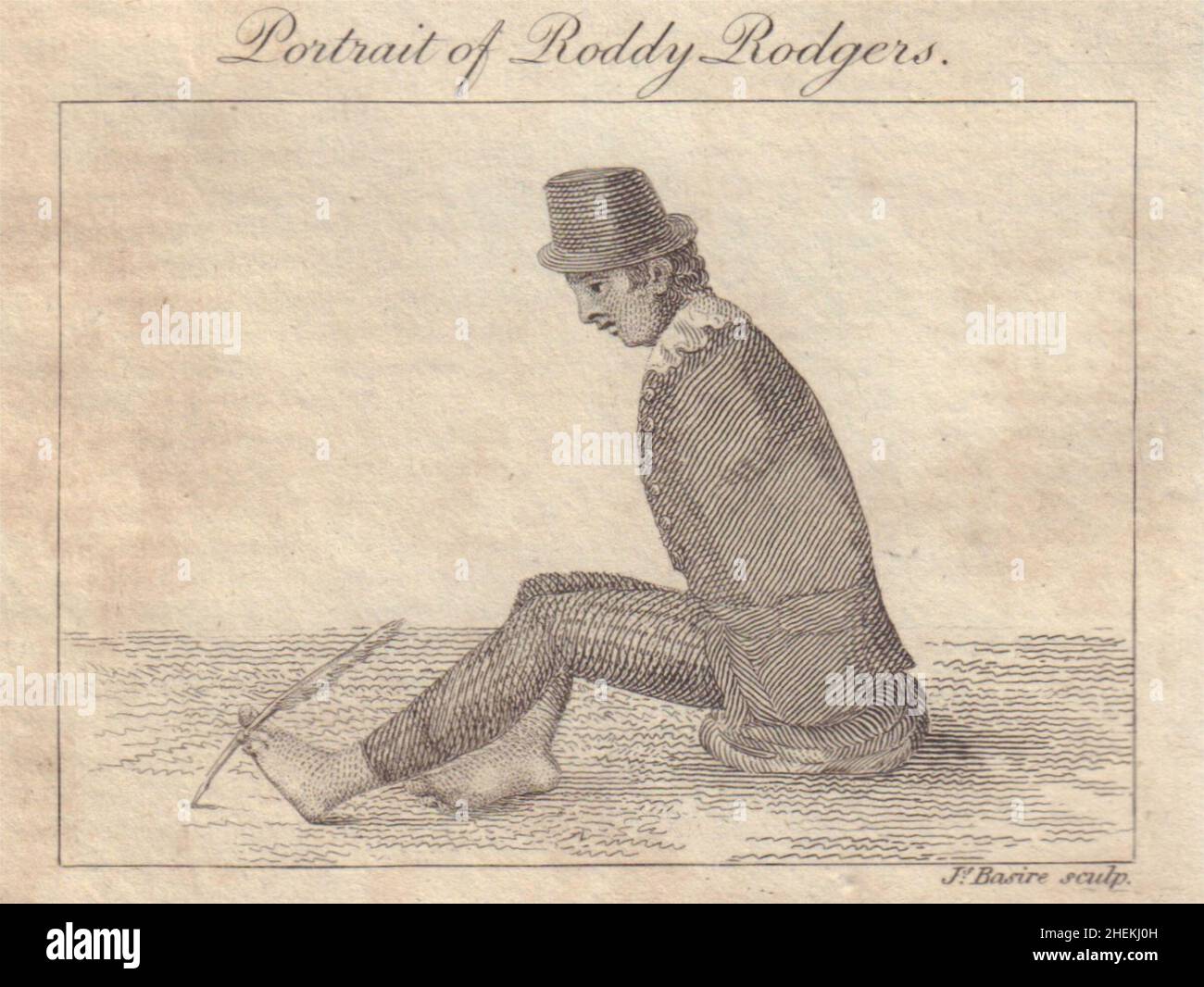 Roddy Rogers writing with his foot, born 1798 at Carnmoney, Ireland. SMALL 1811 Stock Photohttps://www.alamy.com/image-license-details/?v=1https://www.alamy.com/roddy-rogers-writing-with-his-foot-born-1798-at-carnmoney-ireland-small-1811-image456505969.html
Roddy Rogers writing with his foot, born 1798 at Carnmoney, Ireland. SMALL 1811 Stock Photohttps://www.alamy.com/image-license-details/?v=1https://www.alamy.com/roddy-rogers-writing-with-his-foot-born-1798-at-carnmoney-ireland-small-1811-image456505969.htmlRF2HEKJ0H–Roddy Rogers writing with his foot, born 1798 at Carnmoney, Ireland. SMALL 1811
 View of Enniscorthy from the Vinegar Hill Memorial to the 1798 Rebellion, Co Wexford, Ireland. Stock Photohttps://www.alamy.com/image-license-details/?v=1https://www.alamy.com/stock-photo-view-of-enniscorthy-from-the-vinegar-hill-memorial-to-the-1798-rebellion-138301874.html
View of Enniscorthy from the Vinegar Hill Memorial to the 1798 Rebellion, Co Wexford, Ireland. Stock Photohttps://www.alamy.com/image-license-details/?v=1https://www.alamy.com/stock-photo-view-of-enniscorthy-from-the-vinegar-hill-memorial-to-the-1798-rebellion-138301874.htmlRMJ105CJ–View of Enniscorthy from the Vinegar Hill Memorial to the 1798 Rebellion, Co Wexford, Ireland.
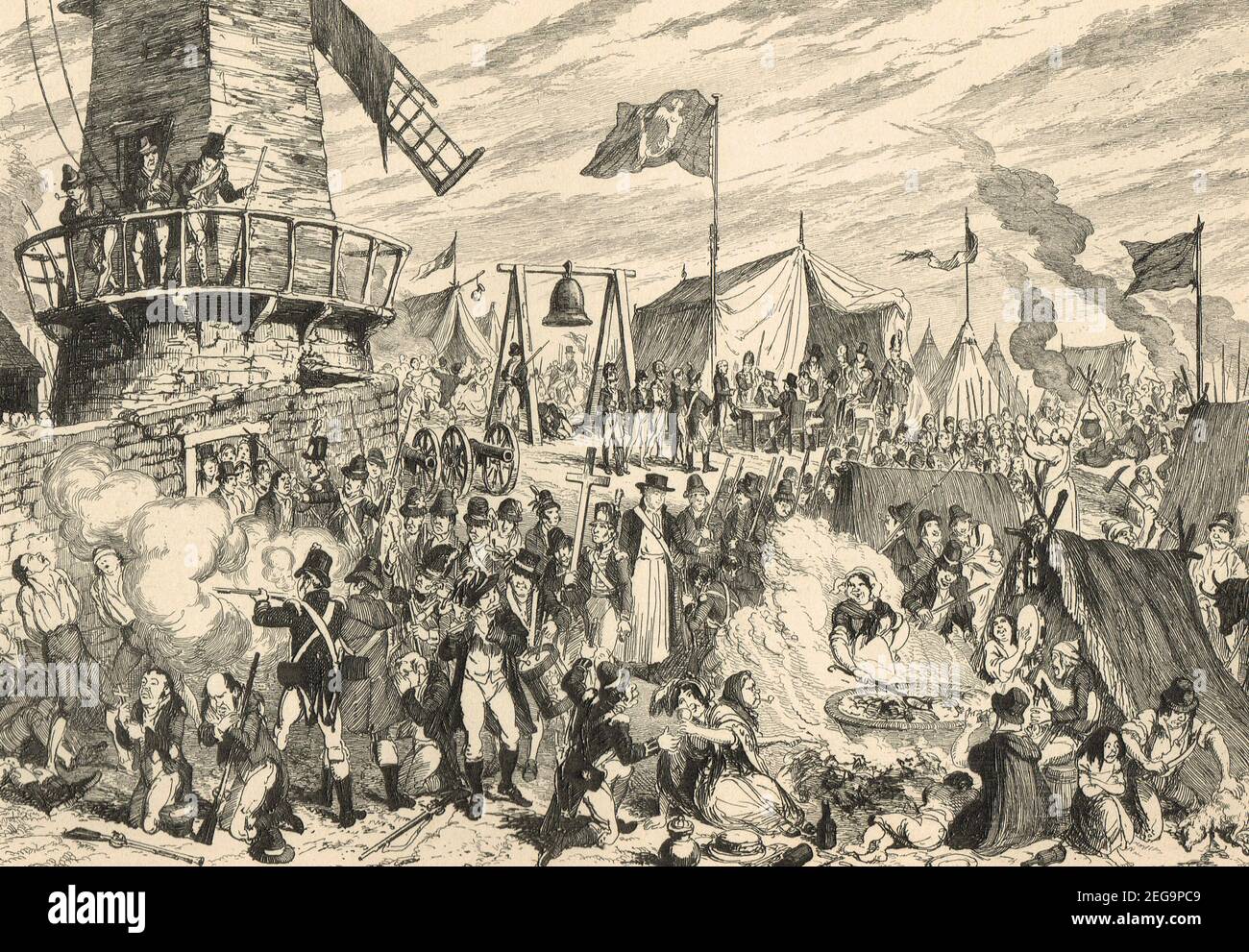 The rebel camp at The Battle of Vinegar Hill on 21 June 1798. An engagement during the Irish Rebellion of 1798 Stock Photohttps://www.alamy.com/image-license-details/?v=1https://www.alamy.com/the-rebel-camp-at-the-battle-of-vinegar-hill-on-21-june-1798-an-engagement-during-the-irish-rebellion-of-1798-image405888121.html
The rebel camp at The Battle of Vinegar Hill on 21 June 1798. An engagement during the Irish Rebellion of 1798 Stock Photohttps://www.alamy.com/image-license-details/?v=1https://www.alamy.com/the-rebel-camp-at-the-battle-of-vinegar-hill-on-21-june-1798-an-engagement-during-the-irish-rebellion-of-1798-image405888121.htmlRM2EG9PC9–The rebel camp at The Battle of Vinegar Hill on 21 June 1798. An engagement during the Irish Rebellion of 1798
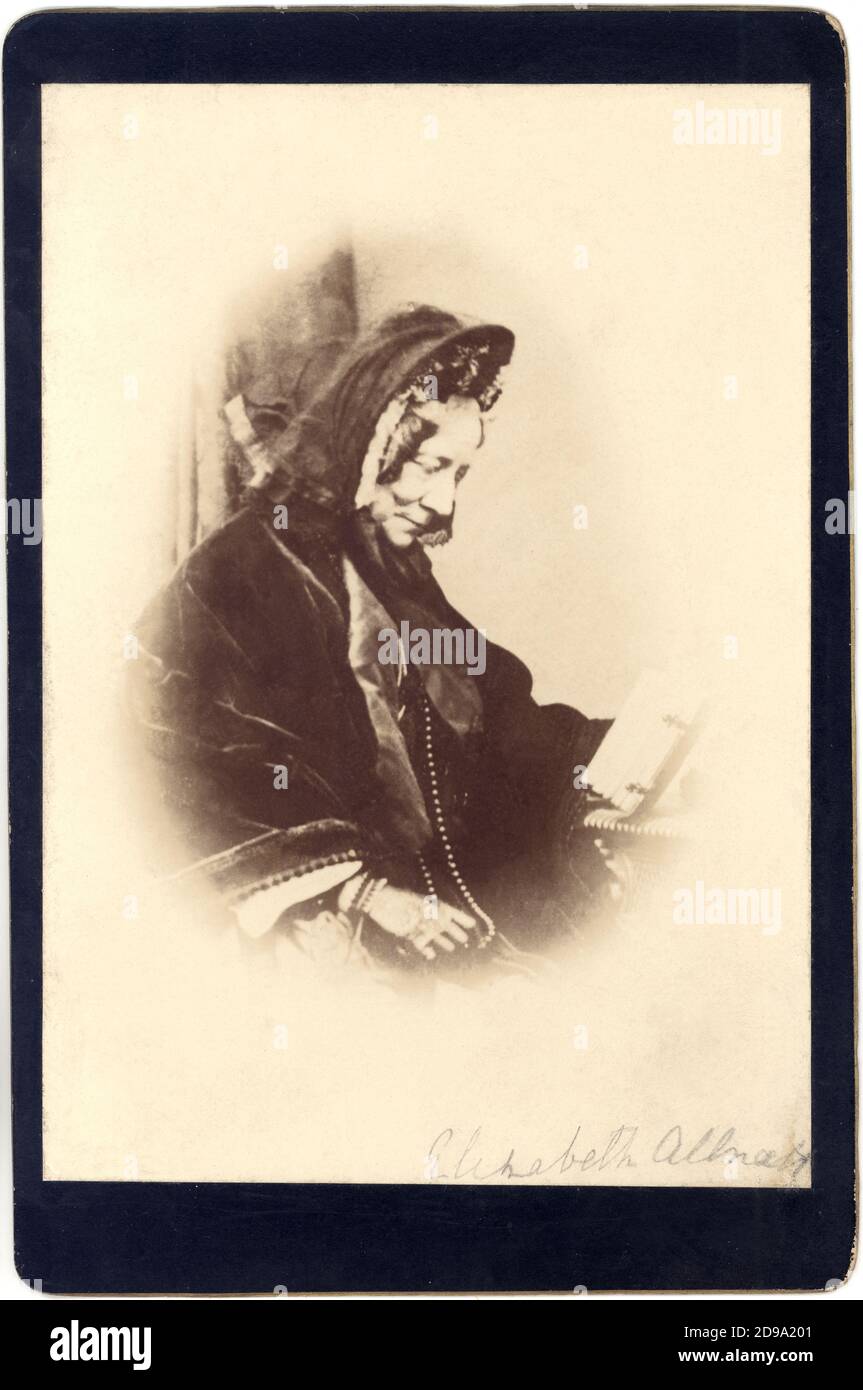 1870 ca , Cheltenham , GREAT BRITAIN : The british woman writer ELIZABETH Sophia ALLNATT ( 1798 Ireland - 1871 Cheltenham , UK), born MOLLER , married in 1818 in Wem , Shropshire , with Charles Blake Allnatt ( 1792 - 1862 ), the couple have 6 sons. The first daughter Ellen Matilda Allmatt ( 1824 - 1906 ) married Thomas Henry Salt ( 1825 - 1907 ) and have a son, HENRY Stephens SALT ( 1851 - 1939 ), the celebrated writer , pacifist , friend of Mahatma GANDHI and fouder of british Vegetarian Society - LETTERATO - SCRITTORE - LETTERATURA - Literature - SCRITTRICE - portrait - ritratto - cuffia Stock Photohttps://www.alamy.com/image-license-details/?v=1https://www.alamy.com/1870-ca-cheltenham-great-britain-the-british-woman-writer-elizabeth-sophia-allnatt-1798-ireland-1871-cheltenham-uk-born-moller-married-in-1818-in-wem-shropshire-with-charles-blake-allnatt-1792-1862-the-couple-have-6-sons-the-first-daughter-ellen-matilda-allmatt-1824-1906-married-thomas-henry-salt-1825-1907-and-have-a-son-henry-stephens-salt-1851-1939-the-celebrated-writer-pacifist-friend-of-mahatma-gandhi-and-fouder-of-british-vegetarian-society-letterato-scrittore-letteratura-literature-scrittrice-portrait-ritratto-cuffia-image384381089.html
1870 ca , Cheltenham , GREAT BRITAIN : The british woman writer ELIZABETH Sophia ALLNATT ( 1798 Ireland - 1871 Cheltenham , UK), born MOLLER , married in 1818 in Wem , Shropshire , with Charles Blake Allnatt ( 1792 - 1862 ), the couple have 6 sons. The first daughter Ellen Matilda Allmatt ( 1824 - 1906 ) married Thomas Henry Salt ( 1825 - 1907 ) and have a son, HENRY Stephens SALT ( 1851 - 1939 ), the celebrated writer , pacifist , friend of Mahatma GANDHI and fouder of british Vegetarian Society - LETTERATO - SCRITTORE - LETTERATURA - Literature - SCRITTRICE - portrait - ritratto - cuffia Stock Photohttps://www.alamy.com/image-license-details/?v=1https://www.alamy.com/1870-ca-cheltenham-great-britain-the-british-woman-writer-elizabeth-sophia-allnatt-1798-ireland-1871-cheltenham-uk-born-moller-married-in-1818-in-wem-shropshire-with-charles-blake-allnatt-1792-1862-the-couple-have-6-sons-the-first-daughter-ellen-matilda-allmatt-1824-1906-married-thomas-henry-salt-1825-1907-and-have-a-son-henry-stephens-salt-1851-1939-the-celebrated-writer-pacifist-friend-of-mahatma-gandhi-and-fouder-of-british-vegetarian-society-letterato-scrittore-letteratura-literature-scrittrice-portrait-ritratto-cuffia-image384381089.htmlRM2D9A201–1870 ca , Cheltenham , GREAT BRITAIN : The british woman writer ELIZABETH Sophia ALLNATT ( 1798 Ireland - 1871 Cheltenham , UK), born MOLLER , married in 1818 in Wem , Shropshire , with Charles Blake Allnatt ( 1792 - 1862 ), the couple have 6 sons. The first daughter Ellen Matilda Allmatt ( 1824 - 1906 ) married Thomas Henry Salt ( 1825 - 1907 ) and have a son, HENRY Stephens SALT ( 1851 - 1939 ), the celebrated writer , pacifist , friend of Mahatma GANDHI and fouder of british Vegetarian Society - LETTERATO - SCRITTORE - LETTERATURA - Literature - SCRITTRICE - portrait - ritratto - cuffia
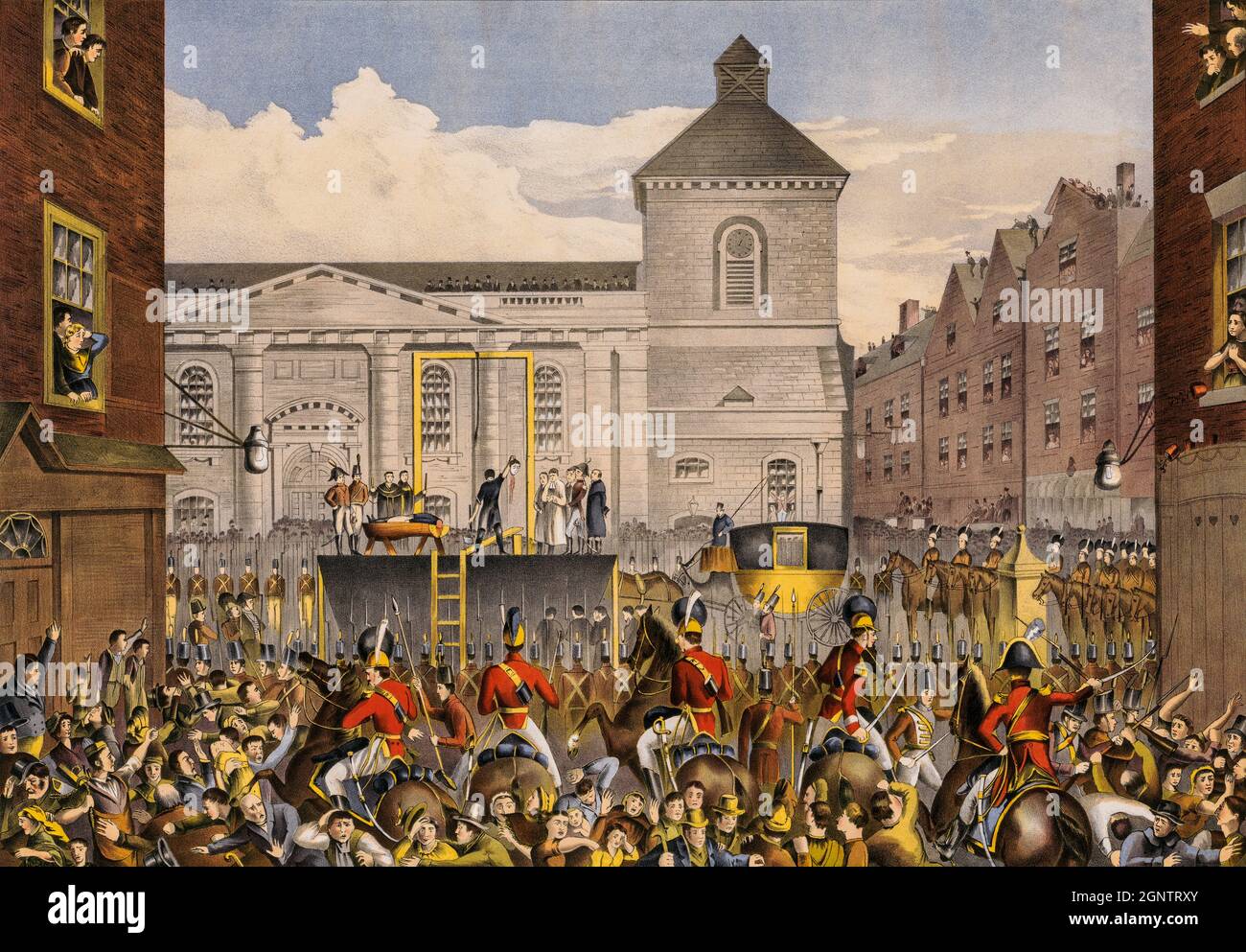 Robert Emmet (1778-1803) was an Irish Republican, orator and rebel leader. Following the suppression of the United Irish uprising in 1798, he sought to organise a renewed attempt to overthrow the British Crown and Protestant Ascendancy in Ireland. With hopes of French assistance and radical militants in Great Britain, many of the surviving veterans of '98 hesitated to lend their support, and his 1803 rising in Dublin proved abortive. He was captured in August, convicted of treason and executed on the 20 September in Thomas Street in front of St. Catherine's Church, Dublin City. Stock Photohttps://www.alamy.com/image-license-details/?v=1https://www.alamy.com/robert-emmet-1778-1803-was-an-irish-republican-orator-and-rebel-leader-following-the-suppression-of-the-united-irish-uprising-in-1798-he-sought-to-organise-a-renewed-attempt-to-overthrow-the-british-crown-and-protestant-ascendancy-in-ireland-with-hopes-of-french-assistance-and-radical-militants-in-great-britain-many-of-the-surviving-veterans-of-98-hesitated-to-lend-their-support-and-his-1803-rising-in-dublin-proved-abortive-he-was-captured-in-august-convicted-of-treason-and-executed-on-the-20-september-in-thomas-street-in-front-of-st-catherines-church-dublin-city-image443712611.html
Robert Emmet (1778-1803) was an Irish Republican, orator and rebel leader. Following the suppression of the United Irish uprising in 1798, he sought to organise a renewed attempt to overthrow the British Crown and Protestant Ascendancy in Ireland. With hopes of French assistance and radical militants in Great Britain, many of the surviving veterans of '98 hesitated to lend their support, and his 1803 rising in Dublin proved abortive. He was captured in August, convicted of treason and executed on the 20 September in Thomas Street in front of St. Catherine's Church, Dublin City. Stock Photohttps://www.alamy.com/image-license-details/?v=1https://www.alamy.com/robert-emmet-1778-1803-was-an-irish-republican-orator-and-rebel-leader-following-the-suppression-of-the-united-irish-uprising-in-1798-he-sought-to-organise-a-renewed-attempt-to-overthrow-the-british-crown-and-protestant-ascendancy-in-ireland-with-hopes-of-french-assistance-and-radical-militants-in-great-britain-many-of-the-surviving-veterans-of-98-hesitated-to-lend-their-support-and-his-1803-rising-in-dublin-proved-abortive-he-was-captured-in-august-convicted-of-treason-and-executed-on-the-20-september-in-thomas-street-in-front-of-st-catherines-church-dublin-city-image443712611.htmlRM2GNTRXY–Robert Emmet (1778-1803) was an Irish Republican, orator and rebel leader. Following the suppression of the United Irish uprising in 1798, he sought to organise a renewed attempt to overthrow the British Crown and Protestant Ascendancy in Ireland. With hopes of French assistance and radical militants in Great Britain, many of the surviving veterans of '98 hesitated to lend their support, and his 1803 rising in Dublin proved abortive. He was captured in August, convicted of treason and executed on the 20 September in Thomas Street in front of St. Catherine's Church, Dublin City.
 The Croppy Boy memorial to the 1798 Rising at corner of Quay St and North St in the town of New Ross, County Wexford, Ireland. Stock Photohttps://www.alamy.com/image-license-details/?v=1https://www.alamy.com/stock-image-the-croppy-boy-memorial-to-the-1798-rising-at-corner-of-quay-st-and-167414180.html
The Croppy Boy memorial to the 1798 Rising at corner of Quay St and North St in the town of New Ross, County Wexford, Ireland. Stock Photohttps://www.alamy.com/image-license-details/?v=1https://www.alamy.com/stock-image-the-croppy-boy-memorial-to-the-1798-rising-at-corner-of-quay-st-and-167414180.htmlRMKMAADT–The Croppy Boy memorial to the 1798 Rising at corner of Quay St and North St in the town of New Ross, County Wexford, Ireland.
 A late 19th century photograph of St. Catherine's Church, on Thomas Street, in Dublin, Ireland, was originally built in 1185. It was rebuilt in the Palladian style in the 18th century by John Smyth (or Smith), originally a spire was intended, but it wasn't completed due to lack of funds. In 1803 the church was the site of Robert Emmet's execution, an Irish Republican, orator and rebel leader he sought to organise a renewed attempt to overthrow the British Crown and Protestant Ascendancy in Ireland, following the suppression of the United Irish uprising in 1798. Stock Photohttps://www.alamy.com/image-license-details/?v=1https://www.alamy.com/a-late-19th-century-photograph-of-st-catherines-church-on-thomas-street-in-dublin-ireland-was-originally-built-in-1185-it-was-rebuilt-in-the-palladian-style-in-the-18th-century-by-john-smyth-or-smith-originally-a-spire-was-intended-but-it-wasnt-completed-due-to-lack-of-funds-in-1803-the-church-was-the-site-of-robert-emmets-execution-an-irish-republican-orator-and-rebel-leader-he-sought-to-organise-a-renewed-attempt-to-overthrow-the-british-crown-and-protestant-ascendancy-in-ireland-following-the-suppression-of-the-united-irish-uprising-in-1798-image547748977.html
A late 19th century photograph of St. Catherine's Church, on Thomas Street, in Dublin, Ireland, was originally built in 1185. It was rebuilt in the Palladian style in the 18th century by John Smyth (or Smith), originally a spire was intended, but it wasn't completed due to lack of funds. In 1803 the church was the site of Robert Emmet's execution, an Irish Republican, orator and rebel leader he sought to organise a renewed attempt to overthrow the British Crown and Protestant Ascendancy in Ireland, following the suppression of the United Irish uprising in 1798. Stock Photohttps://www.alamy.com/image-license-details/?v=1https://www.alamy.com/a-late-19th-century-photograph-of-st-catherines-church-on-thomas-street-in-dublin-ireland-was-originally-built-in-1185-it-was-rebuilt-in-the-palladian-style-in-the-18th-century-by-john-smyth-or-smith-originally-a-spire-was-intended-but-it-wasnt-completed-due-to-lack-of-funds-in-1803-the-church-was-the-site-of-robert-emmets-execution-an-irish-republican-orator-and-rebel-leader-he-sought-to-organise-a-renewed-attempt-to-overthrow-the-british-crown-and-protestant-ascendancy-in-ireland-following-the-suppression-of-the-united-irish-uprising-in-1798-image547748977.htmlRM2PR43BD–A late 19th century photograph of St. Catherine's Church, on Thomas Street, in Dublin, Ireland, was originally built in 1185. It was rebuilt in the Palladian style in the 18th century by John Smyth (or Smith), originally a spire was intended, but it wasn't completed due to lack of funds. In 1803 the church was the site of Robert Emmet's execution, an Irish Republican, orator and rebel leader he sought to organise a renewed attempt to overthrow the British Crown and Protestant Ascendancy in Ireland, following the suppression of the United Irish uprising in 1798.
 George I (1660-1727) king of Great Britain and Ireland from 1714, Elector of Hanover from 1798. First Hanoverian monarch of the United Kingdom. Wood engraving c1900. Stock Photohttps://www.alamy.com/image-license-details/?v=1https://www.alamy.com/stock-photo-george-i-1660-1727-king-of-great-britain-and-ireland-from-1714-elector-57288489.html
George I (1660-1727) king of Great Britain and Ireland from 1714, Elector of Hanover from 1798. First Hanoverian monarch of the United Kingdom. Wood engraving c1900. Stock Photohttps://www.alamy.com/image-license-details/?v=1https://www.alamy.com/stock-photo-george-i-1660-1727-king-of-great-britain-and-ireland-from-1714-elector-57288489.htmlRMD95M1D–George I (1660-1727) king of Great Britain and Ireland from 1714, Elector of Hanover from 1798. First Hanoverian monarch of the United Kingdom. Wood engraving c1900.
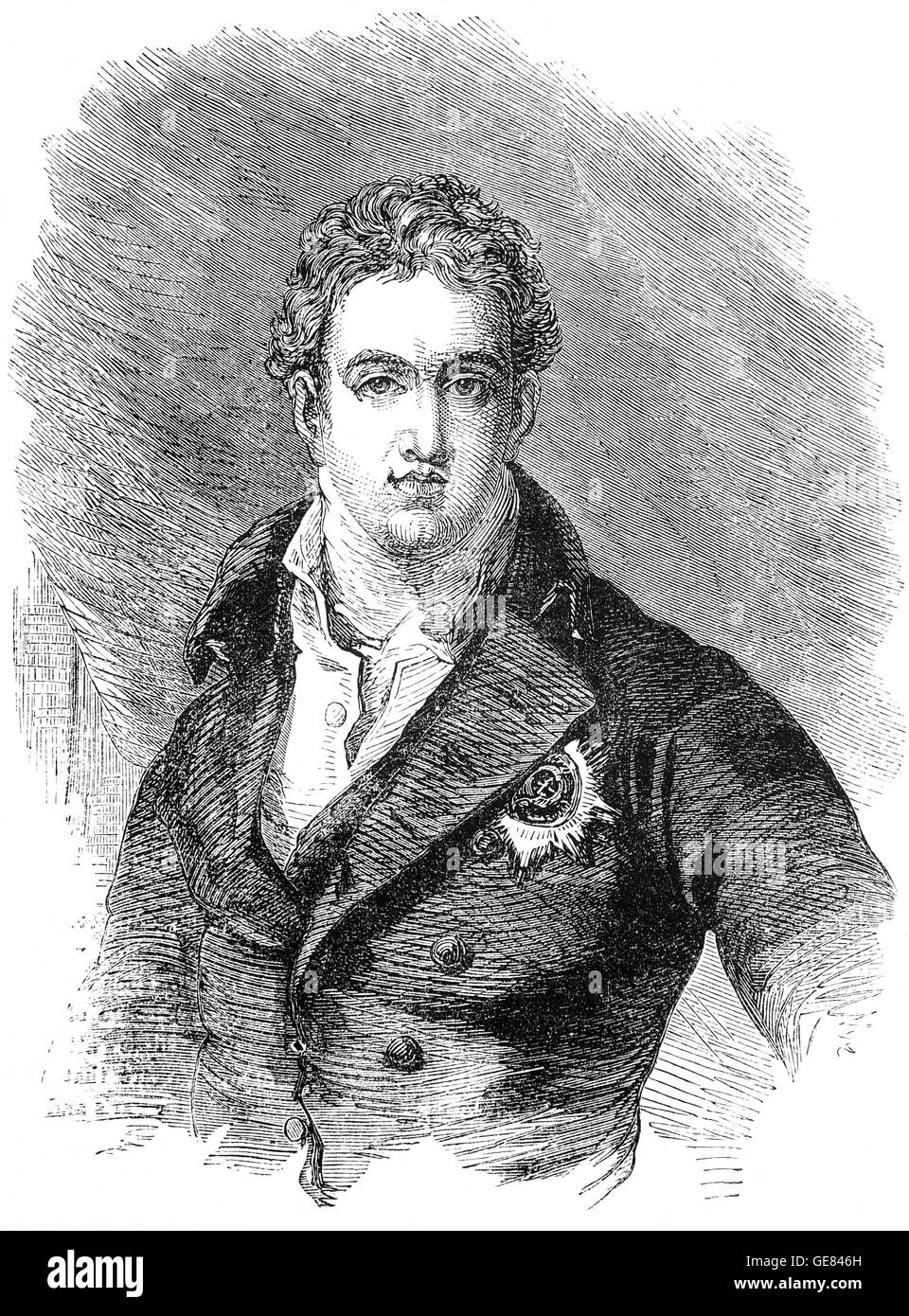 Robert Stewart, 2nd Marquess of Londonderry, (1769 – 1822), usually known as Lord Castlereagh, an Anglo-Irish statesman. As Chief Secretary for Ireland, he was involved in putting down the Irish Rebellion of 1798 and was instrumental in securing the passage of the Irish Act of Union of 1800. From 1812, he became British Foreign Secretary, and was central to the management of the coalition that defeated Napoleon Stock Photohttps://www.alamy.com/image-license-details/?v=1https://www.alamy.com/stock-photo-robert-stewart-2nd-marquess-of-londonderry-1769-1822-usually-known-112046329.html
Robert Stewart, 2nd Marquess of Londonderry, (1769 – 1822), usually known as Lord Castlereagh, an Anglo-Irish statesman. As Chief Secretary for Ireland, he was involved in putting down the Irish Rebellion of 1798 and was instrumental in securing the passage of the Irish Act of Union of 1800. From 1812, he became British Foreign Secretary, and was central to the management of the coalition that defeated Napoleon Stock Photohttps://www.alamy.com/image-license-details/?v=1https://www.alamy.com/stock-photo-robert-stewart-2nd-marquess-of-londonderry-1769-1822-usually-known-112046329.htmlRMGE846H–Robert Stewart, 2nd Marquess of Londonderry, (1769 – 1822), usually known as Lord Castlereagh, an Anglo-Irish statesman. As Chief Secretary for Ireland, he was involved in putting down the Irish Rebellion of 1798 and was instrumental in securing the passage of the Irish Act of Union of 1800. From 1812, he became British Foreign Secretary, and was central to the management of the coalition that defeated Napoleon
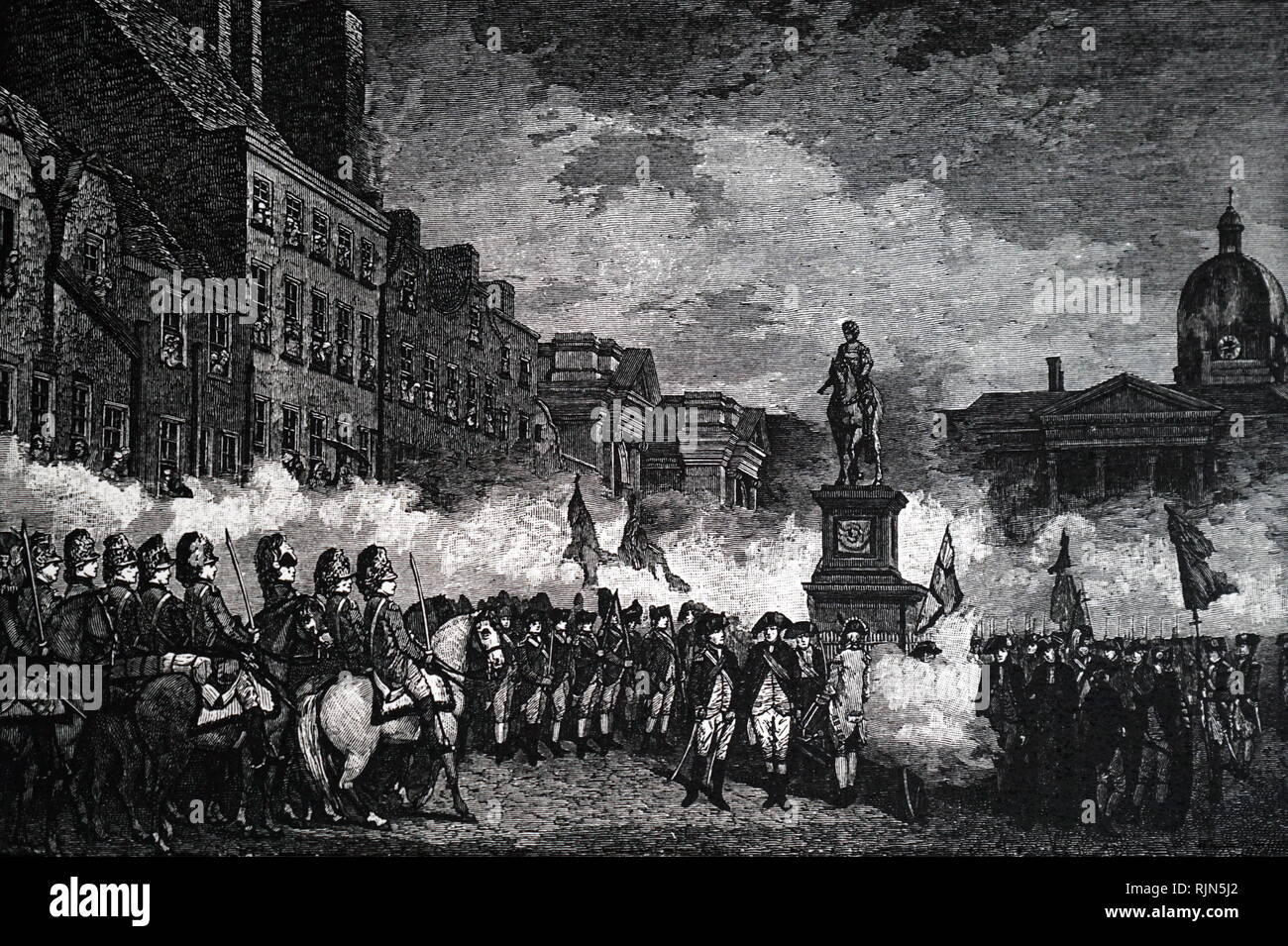 Illustration showing the Irish Rebellion of 1798, against British rule in Ireland from May to September 1798. The United Irishmen, a republican revolutionary group influenced by the ideas of the American and French revolutions, were the main organising force behind the rebellion. It was led by Presbyterians angry at being shut out of power by the Anglican establishment, joined by Catholics, who made up the majority of the population. Stock Photohttps://www.alamy.com/image-license-details/?v=1https://www.alamy.com/illustration-showing-the-irish-rebellion-of-1798-against-british-rule-in-ireland-from-may-to-september-1798-the-united-irishmen-a-republican-revolutionary-group-influenced-by-the-ideas-of-the-american-and-french-revolutions-were-the-main-organising-force-behind-the-rebellion-it-was-led-by-presbyterians-angry-at-being-shut-out-of-power-by-the-anglican-establishment-joined-by-catholics-who-made-up-the-majority-of-the-population-image235264010.html
Illustration showing the Irish Rebellion of 1798, against British rule in Ireland from May to September 1798. The United Irishmen, a republican revolutionary group influenced by the ideas of the American and French revolutions, were the main organising force behind the rebellion. It was led by Presbyterians angry at being shut out of power by the Anglican establishment, joined by Catholics, who made up the majority of the population. Stock Photohttps://www.alamy.com/image-license-details/?v=1https://www.alamy.com/illustration-showing-the-irish-rebellion-of-1798-against-british-rule-in-ireland-from-may-to-september-1798-the-united-irishmen-a-republican-revolutionary-group-influenced-by-the-ideas-of-the-american-and-french-revolutions-were-the-main-organising-force-behind-the-rebellion-it-was-led-by-presbyterians-angry-at-being-shut-out-of-power-by-the-anglican-establishment-joined-by-catholics-who-made-up-the-majority-of-the-population-image235264010.htmlRMRJN5J2–Illustration showing the Irish Rebellion of 1798, against British rule in Ireland from May to September 1798. The United Irishmen, a republican revolutionary group influenced by the ideas of the American and French revolutions, were the main organising force behind the rebellion. It was led by Presbyterians angry at being shut out of power by the Anglican establishment, joined by Catholics, who made up the majority of the population.
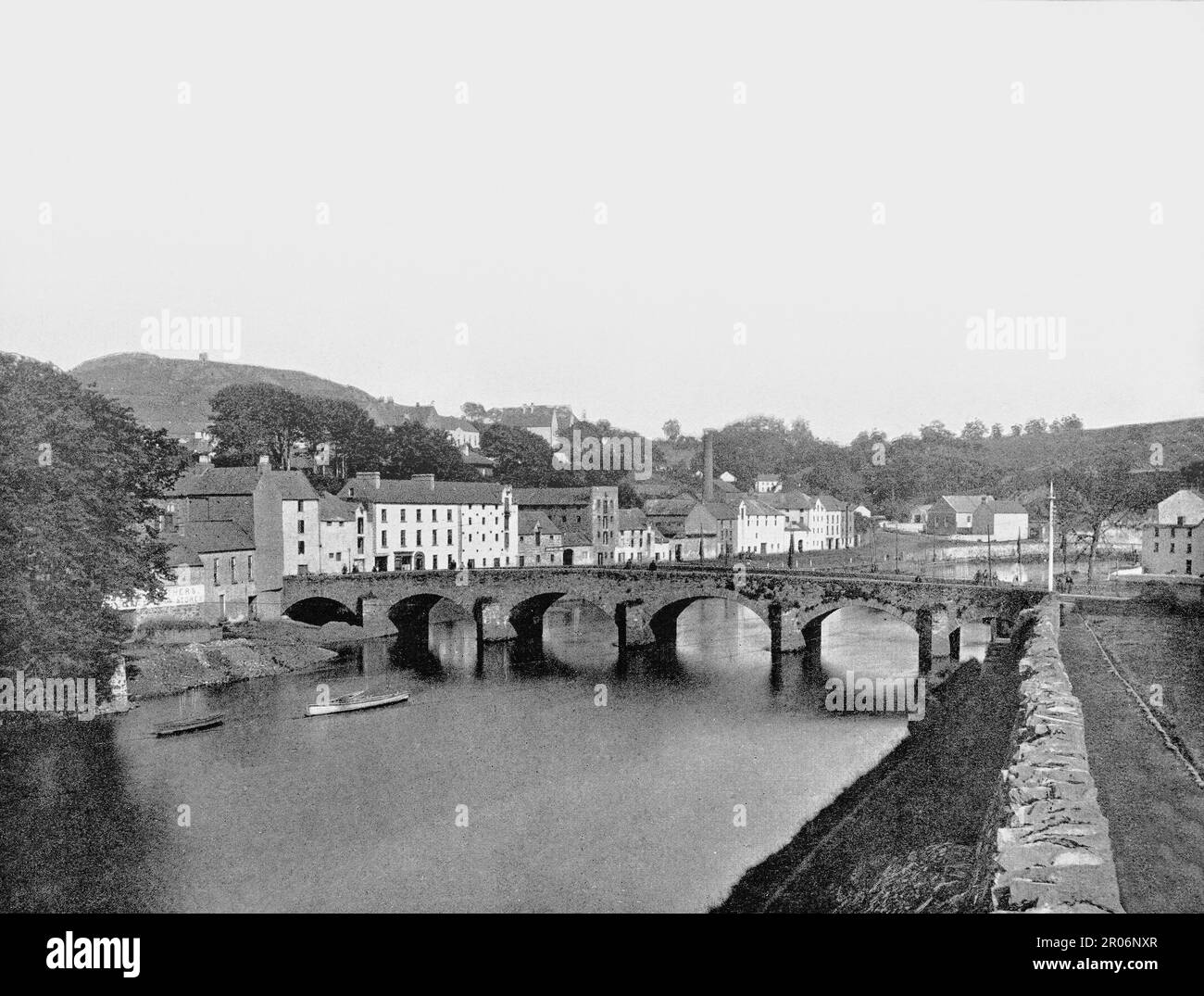 A late 19th century view of Enniscorthy located on the picturesque River Slaney in County Wexford, Ireland. The tower on Vinegar Hill hill (left background) overlooking the town, was the largest camp and headquarters of the rebels of 1798 who controlled County Wexford for thirty days against vastly superior forces, before their defeat on 21 June. Stock Photohttps://www.alamy.com/image-license-details/?v=1https://www.alamy.com/a-late-19th-century-view-of-enniscorthy-located-on-the-picturesque-river-slaney-in-county-wexford-ireland-the-tower-on-vinegar-hill-hill-left-background-overlooking-the-town-was-the-largest-camp-and-headquarters-of-the-rebels-of-1798-who-controlled-county-wexford-for-thirty-days-against-vastly-superior-forces-before-their-defeat-on-21-june-image550880703.html
A late 19th century view of Enniscorthy located on the picturesque River Slaney in County Wexford, Ireland. The tower on Vinegar Hill hill (left background) overlooking the town, was the largest camp and headquarters of the rebels of 1798 who controlled County Wexford for thirty days against vastly superior forces, before their defeat on 21 June. Stock Photohttps://www.alamy.com/image-license-details/?v=1https://www.alamy.com/a-late-19th-century-view-of-enniscorthy-located-on-the-picturesque-river-slaney-in-county-wexford-ireland-the-tower-on-vinegar-hill-hill-left-background-overlooking-the-town-was-the-largest-camp-and-headquarters-of-the-rebels-of-1798-who-controlled-county-wexford-for-thirty-days-against-vastly-superior-forces-before-their-defeat-on-21-june-image550880703.htmlRM2R06NXR–A late 19th century view of Enniscorthy located on the picturesque River Slaney in County Wexford, Ireland. The tower on Vinegar Hill hill (left background) overlooking the town, was the largest camp and headquarters of the rebels of 1798 who controlled County Wexford for thirty days against vastly superior forces, before their defeat on 21 June.
 Tulach a’ tSolais memorial to the 1798 Irish rebellion at Oulart Hill in Wexford Ireland Stock Photohttps://www.alamy.com/image-license-details/?v=1https://www.alamy.com/tulach-a-tsolais-memorial-to-the-1798-irish-rebellion-at-oulart-hill-in-wexford-ireland-image367260414.html
Tulach a’ tSolais memorial to the 1798 Irish rebellion at Oulart Hill in Wexford Ireland Stock Photohttps://www.alamy.com/image-license-details/?v=1https://www.alamy.com/tulach-a-tsolais-memorial-to-the-1798-irish-rebellion-at-oulart-hill-in-wexford-ireland-image367260414.htmlRM2C9E4BA–Tulach a’ tSolais memorial to the 1798 Irish rebellion at Oulart Hill in Wexford Ireland
 BATTLE OF ROSS 1798 Stock Photohttps://www.alamy.com/image-license-details/?v=1https://www.alamy.com/stock-photo-battle-of-ross-1798-56714879.html
BATTLE OF ROSS 1798 Stock Photohttps://www.alamy.com/image-license-details/?v=1https://www.alamy.com/stock-photo-battle-of-ross-1798-56714879.htmlRMD87GBB–BATTLE OF ROSS 1798
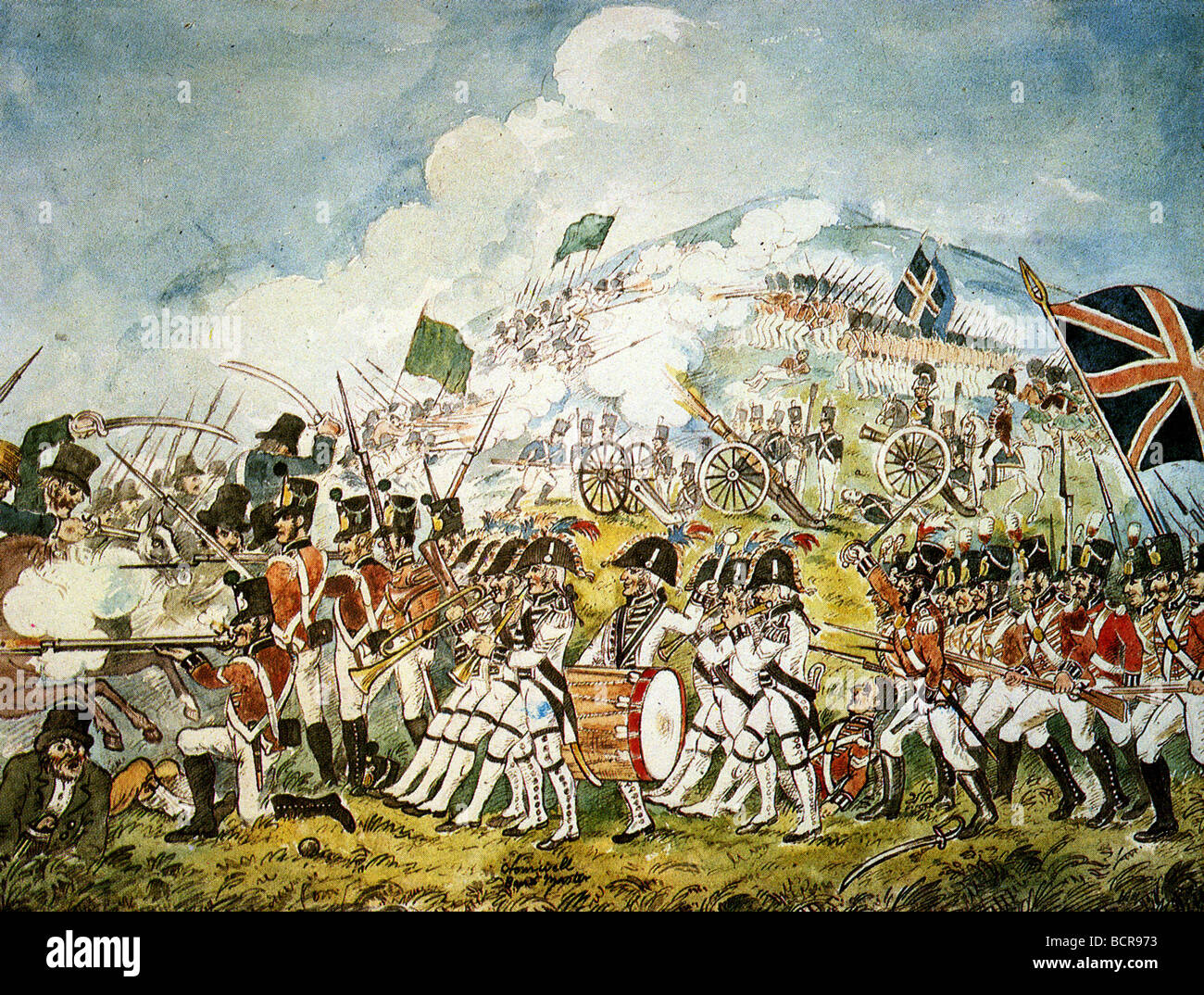 IRELAND : BATTLE OF VINEGAR HILL 1798. British troops crush Irish rebels Stock Photohttps://www.alamy.com/image-license-details/?v=1https://www.alamy.com/stock-photo-ireland-battle-of-vinegar-hill-1798-british-troops-crush-irish-rebels-25098391.html
IRELAND : BATTLE OF VINEGAR HILL 1798. British troops crush Irish rebels Stock Photohttps://www.alamy.com/image-license-details/?v=1https://www.alamy.com/stock-photo-ireland-battle-of-vinegar-hill-1798-british-troops-crush-irish-rebels-25098391.htmlRMBCR973–IRELAND : BATTLE OF VINEGAR HILL 1798. British troops crush Irish rebels
 'An Abortive Invasion of Ireland', c1799. Artist: James Fittler. Stock Photohttps://www.alamy.com/image-license-details/?v=1https://www.alamy.com/stock-photo-an-abortive-invasion-of-ireland-c1799-artist-james-fittler-135280308.html
'An Abortive Invasion of Ireland', c1799. Artist: James Fittler. Stock Photohttps://www.alamy.com/image-license-details/?v=1https://www.alamy.com/stock-photo-an-abortive-invasion-of-ireland-c1799-artist-james-fittler-135280308.htmlRMHT2FBG–'An Abortive Invasion of Ireland', c1799. Artist: James Fittler.
 BATTLE OF VINEGAR HILL 21 June 1798 showing the charge of the 5th Dragoon Guards in an engraving by Irish artist William Sadler II Stock Photohttps://www.alamy.com/image-license-details/?v=1https://www.alamy.com/battle-of-vinegar-hill-21-june-1798-showing-the-charge-of-the-5th-dragoon-guards-in-an-engraving-by-irish-artist-william-sadler-ii-image341298428.html
BATTLE OF VINEGAR HILL 21 June 1798 showing the charge of the 5th Dragoon Guards in an engraving by Irish artist William Sadler II Stock Photohttps://www.alamy.com/image-license-details/?v=1https://www.alamy.com/battle-of-vinegar-hill-21-june-1798-showing-the-charge-of-the-5th-dragoon-guards-in-an-engraving-by-irish-artist-william-sadler-ii-image341298428.htmlRM2AR7DHG–BATTLE OF VINEGAR HILL 21 June 1798 showing the charge of the 5th Dragoon Guards in an engraving by Irish artist William Sadler II
 Monument to the men of '98 (1798 Irish rebellion), in front of Clonmel Town Hall, County Tipperary, Ireland (Eire). Stock Photohttps://www.alamy.com/image-license-details/?v=1https://www.alamy.com/stock-photo-monument-to-the-men-of-98-1798-irish-rebellion-in-front-of-clonmel-33546048.html
Monument to the men of '98 (1798 Irish rebellion), in front of Clonmel Town Hall, County Tipperary, Ireland (Eire). Stock Photohttps://www.alamy.com/image-license-details/?v=1https://www.alamy.com/stock-photo-monument-to-the-men-of-98-1798-irish-rebellion-in-front-of-clonmel-33546048.htmlRMBXG494–Monument to the men of '98 (1798 Irish rebellion), in front of Clonmel Town Hall, County Tipperary, Ireland (Eire).
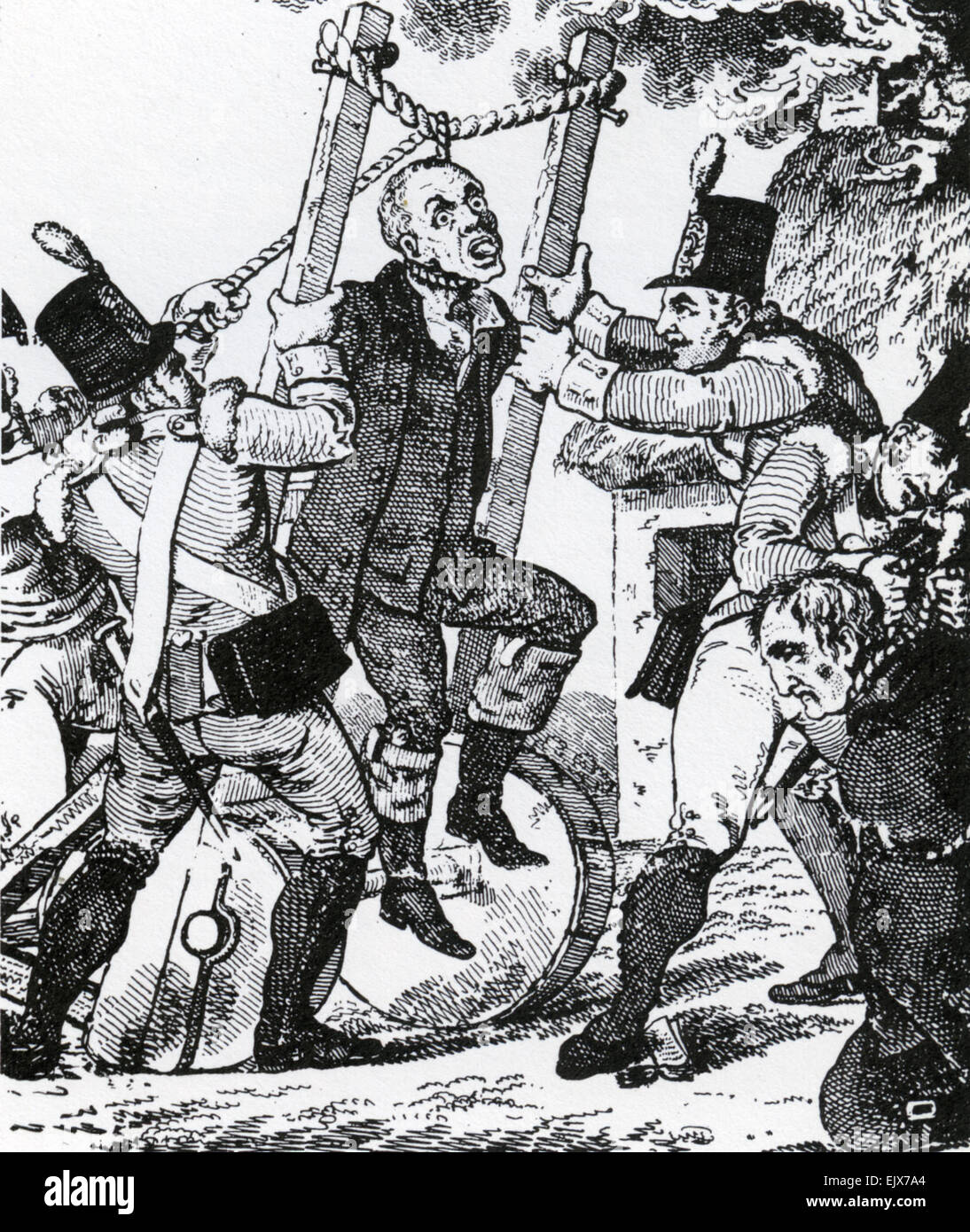 1798 IRISH REBELLION Portable gallows according to Walter Cox's Irish Monthly Magazine in 1810. Possibly fictional. Stock Photohttps://www.alamy.com/image-license-details/?v=1https://www.alamy.com/stock-photo-1798-irish-rebellion-portable-gallows-according-to-walter-coxs-irish-80481804.html
1798 IRISH REBELLION Portable gallows according to Walter Cox's Irish Monthly Magazine in 1810. Possibly fictional. Stock Photohttps://www.alamy.com/image-license-details/?v=1https://www.alamy.com/stock-photo-1798-irish-rebellion-portable-gallows-according-to-walter-coxs-irish-80481804.htmlRMEJX7A4–1798 IRISH REBELLION Portable gallows according to Walter Cox's Irish Monthly Magazine in 1810. Possibly fictional.
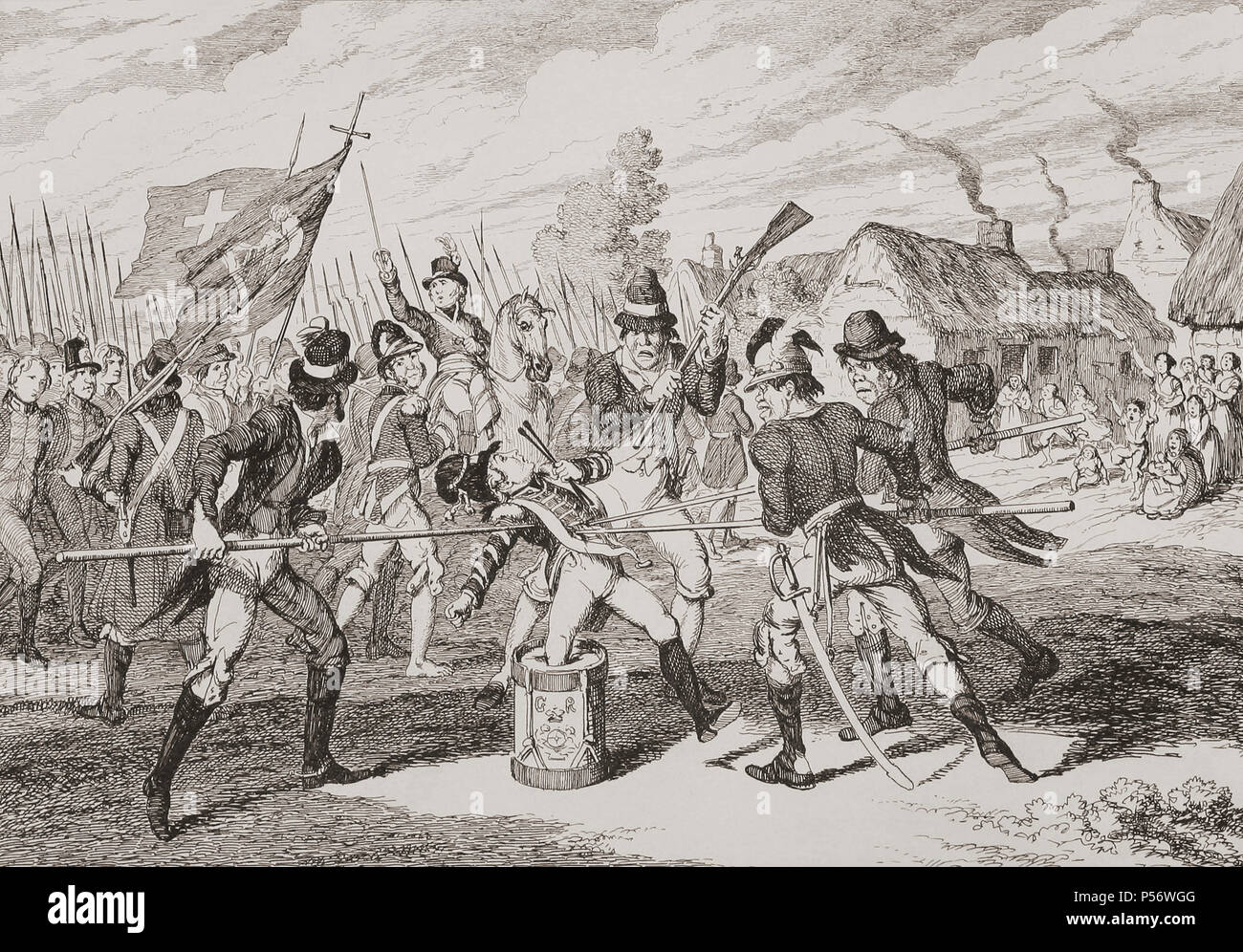 “The Loyal Little Drummer”. Illustration by George Cruikshank. During the 1798 Irish Rebellion a captured 12 years old British drummer boy was ordered by insurgents to beat his drum for them. He refused and was murdered. From History of the Irish Rebellion in 1798; with Memoirs of the Union, and Emmett’s Insurrection in 1803 by W.H. Maxwell. Published in London 1854. Stock Photohttps://www.alamy.com/image-license-details/?v=1https://www.alamy.com/the-loyal-little-drummer-illustration-by-george-cruikshank-during-the-1798-irish-rebellion-a-captured-12-years-old-british-drummer-boy-was-ordered-by-insurgents-to-beat-his-drum-for-them-he-refused-and-was-murdered-from-history-of-the-irish-rebellion-in-1798-with-memoirs-of-the-union-and-emmetts-insurrection-in-1803-by-wh-maxwell-published-in-london-1854-image209749472.html
“The Loyal Little Drummer”. Illustration by George Cruikshank. During the 1798 Irish Rebellion a captured 12 years old British drummer boy was ordered by insurgents to beat his drum for them. He refused and was murdered. From History of the Irish Rebellion in 1798; with Memoirs of the Union, and Emmett’s Insurrection in 1803 by W.H. Maxwell. Published in London 1854. Stock Photohttps://www.alamy.com/image-license-details/?v=1https://www.alamy.com/the-loyal-little-drummer-illustration-by-george-cruikshank-during-the-1798-irish-rebellion-a-captured-12-years-old-british-drummer-boy-was-ordered-by-insurgents-to-beat-his-drum-for-them-he-refused-and-was-murdered-from-history-of-the-irish-rebellion-in-1798-with-memoirs-of-the-union-and-emmetts-insurrection-in-1803-by-wh-maxwell-published-in-london-1854-image209749472.htmlRMP56WGG–“The Loyal Little Drummer”. Illustration by George Cruikshank. During the 1798 Irish Rebellion a captured 12 years old British drummer boy was ordered by insurgents to beat his drum for them. He refused and was murdered. From History of the Irish Rebellion in 1798; with Memoirs of the Union, and Emmett’s Insurrection in 1803 by W.H. Maxwell. Published in London 1854.
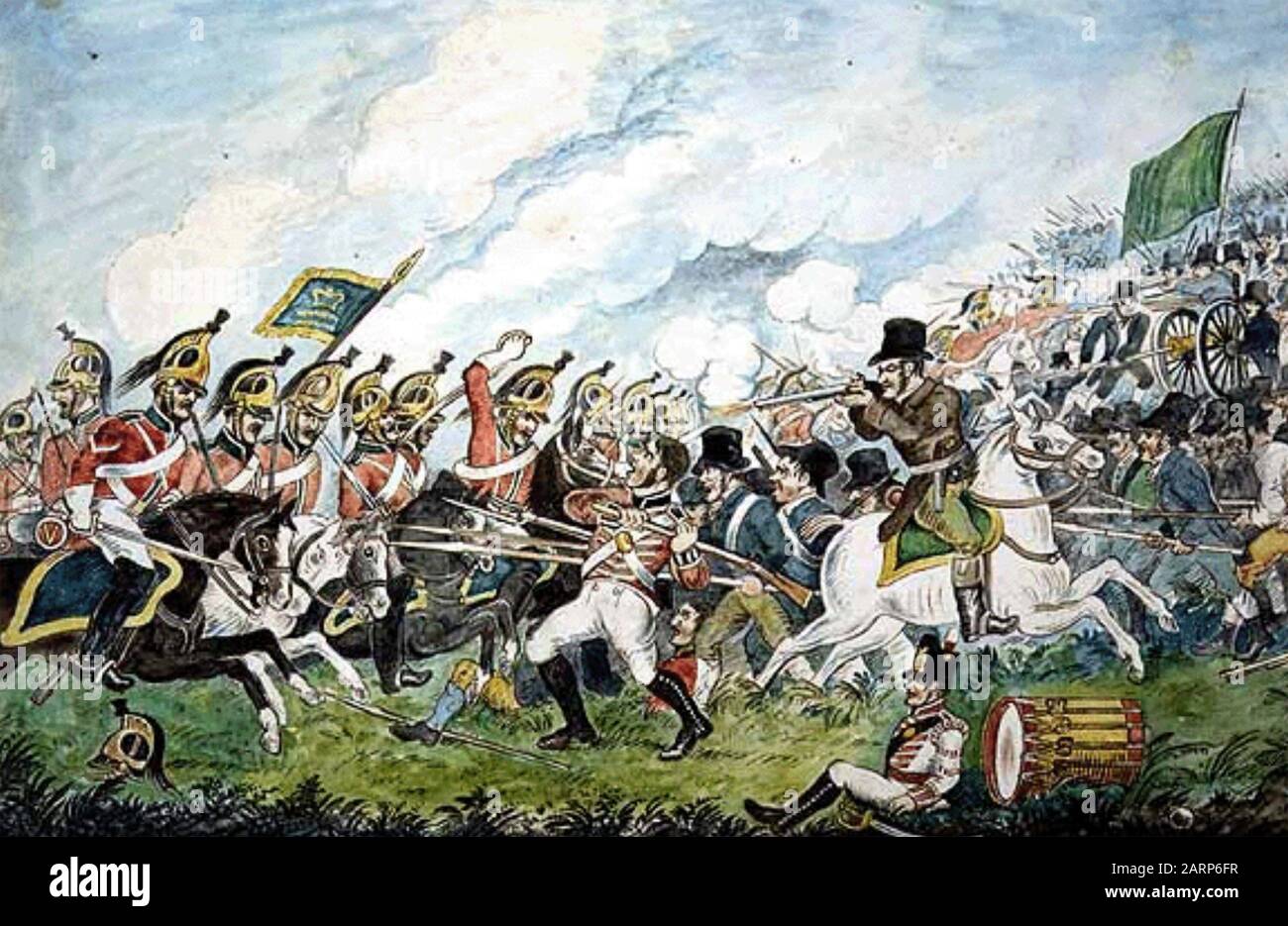 BATTLE OF VINEGAR HILL 21 June 1798 during the Irish Rebellion of that year. Contemporary print showing the charge of the 5th Dragoon Guards with a guards deserter being cut down. Stock Photohttps://www.alamy.com/image-license-details/?v=1https://www.alamy.com/battle-of-vinegar-hill-21-june-1798-during-the-irish-rebellion-of-that-year-contemporary-print-showing-the-charge-of-the-5th-dragoon-guards-with-a-guards-deserter-being-cut-down-image341622171.html
BATTLE OF VINEGAR HILL 21 June 1798 during the Irish Rebellion of that year. Contemporary print showing the charge of the 5th Dragoon Guards with a guards deserter being cut down. Stock Photohttps://www.alamy.com/image-license-details/?v=1https://www.alamy.com/battle-of-vinegar-hill-21-june-1798-during-the-irish-rebellion-of-that-year-contemporary-print-showing-the-charge-of-the-5th-dragoon-guards-with-a-guards-deserter-being-cut-down-image341622171.htmlRM2ARP6FR–BATTLE OF VINEGAR HILL 21 June 1798 during the Irish Rebellion of that year. Contemporary print showing the charge of the 5th Dragoon Guards with a guards deserter being cut down.
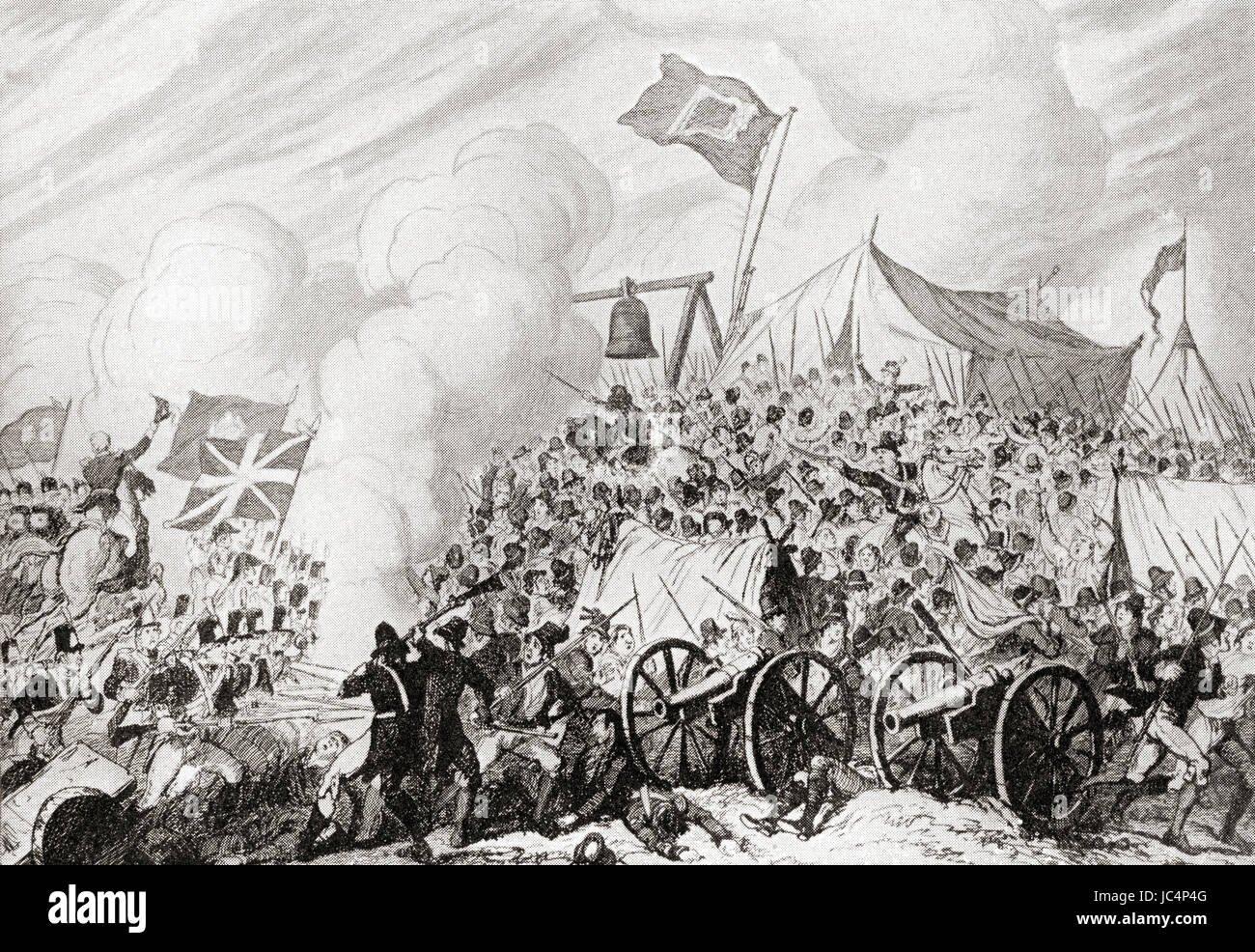 The Battle of Vinegar Hill, Enniscorthy, County Wexford, Ireland during the Irish Rebellion of 1798. After the drawing by Cruikshank. From Hutchinson's History of the Nations, published 1915. Stock Photohttps://www.alamy.com/image-license-details/?v=1https://www.alamy.com/stock-photo-the-battle-of-vinegar-hill-enniscorthy-county-wexford-ireland-during-145164000.html
The Battle of Vinegar Hill, Enniscorthy, County Wexford, Ireland during the Irish Rebellion of 1798. After the drawing by Cruikshank. From Hutchinson's History of the Nations, published 1915. Stock Photohttps://www.alamy.com/image-license-details/?v=1https://www.alamy.com/stock-photo-the-battle-of-vinegar-hill-enniscorthy-county-wexford-ireland-during-145164000.htmlRMJC4P4G–The Battle of Vinegar Hill, Enniscorthy, County Wexford, Ireland during the Irish Rebellion of 1798. After the drawing by Cruikshank. From Hutchinson's History of the Nations, published 1915.
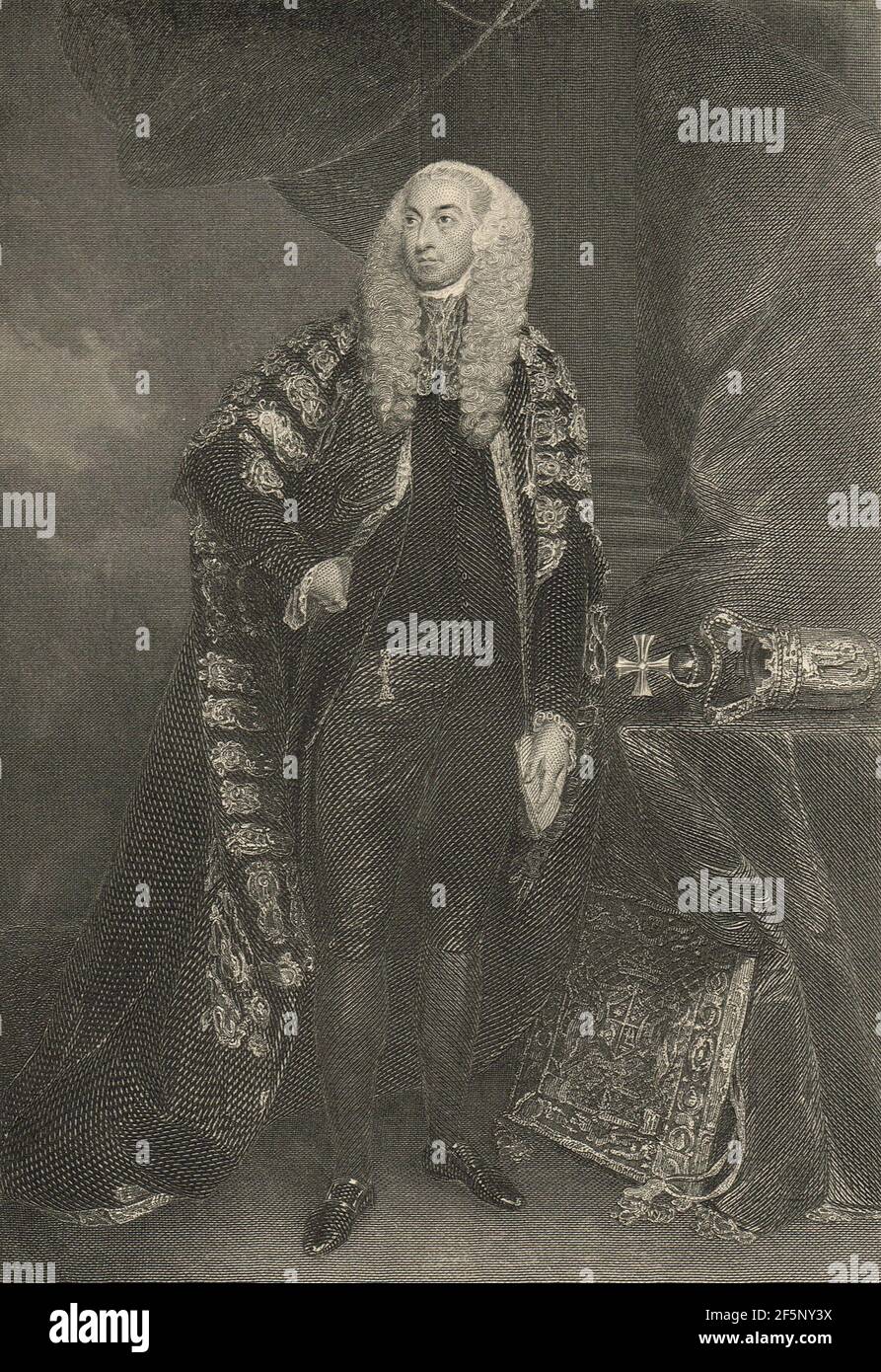 John FitzGibbon, 1st Earl of Clare, Lord Chancellor of Ireland during the Irish Rebellion of 1798 Stock Photohttps://www.alamy.com/image-license-details/?v=1https://www.alamy.com/john-fitzgibbon-1st-earl-of-clare-lord-chancellor-of-ireland-during-the-irish-rebellion-of-1798-image416604382.html
John FitzGibbon, 1st Earl of Clare, Lord Chancellor of Ireland during the Irish Rebellion of 1798 Stock Photohttps://www.alamy.com/image-license-details/?v=1https://www.alamy.com/john-fitzgibbon-1st-earl-of-clare-lord-chancellor-of-ireland-during-the-irish-rebellion-of-1798-image416604382.htmlRM2F5NY3X–John FitzGibbon, 1st Earl of Clare, Lord Chancellor of Ireland during the Irish Rebellion of 1798
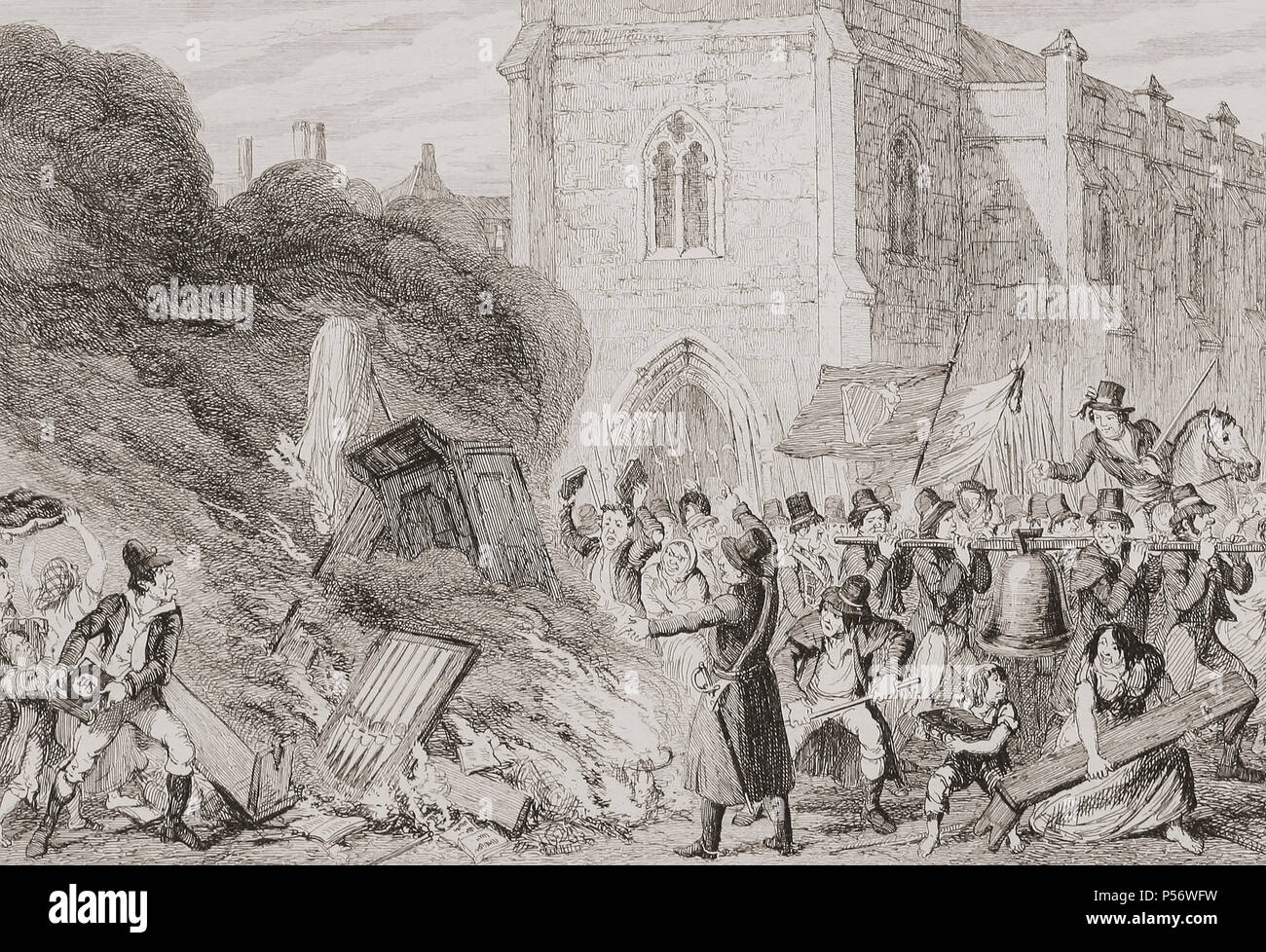 “Destruction of the Church at Enniscorthy”. Illustration by George Cruikshank. An incident during the Irish Rebellion of 1798. From History of the Irish Rebellion in 1798; with Memoirs of the Union, and Emmett’s Insurrection in 1803 by W.H. Maxwell. Published in London 1854. Stock Photohttps://www.alamy.com/image-license-details/?v=1https://www.alamy.com/destruction-of-the-church-at-enniscorthy-illustration-by-george-cruikshank-an-incident-during-the-irish-rebellion-of-1798-from-history-of-the-irish-rebellion-in-1798-with-memoirs-of-the-union-and-emmetts-insurrection-in-1803-by-wh-maxwell-published-in-london-1854-image209749453.html
“Destruction of the Church at Enniscorthy”. Illustration by George Cruikshank. An incident during the Irish Rebellion of 1798. From History of the Irish Rebellion in 1798; with Memoirs of the Union, and Emmett’s Insurrection in 1803 by W.H. Maxwell. Published in London 1854. Stock Photohttps://www.alamy.com/image-license-details/?v=1https://www.alamy.com/destruction-of-the-church-at-enniscorthy-illustration-by-george-cruikshank-an-incident-during-the-irish-rebellion-of-1798-from-history-of-the-irish-rebellion-in-1798-with-memoirs-of-the-union-and-emmetts-insurrection-in-1803-by-wh-maxwell-published-in-london-1854-image209749453.htmlRMP56WFW–“Destruction of the Church at Enniscorthy”. Illustration by George Cruikshank. An incident during the Irish Rebellion of 1798. From History of the Irish Rebellion in 1798; with Memoirs of the Union, and Emmett’s Insurrection in 1803 by W.H. Maxwell. Published in London 1854.
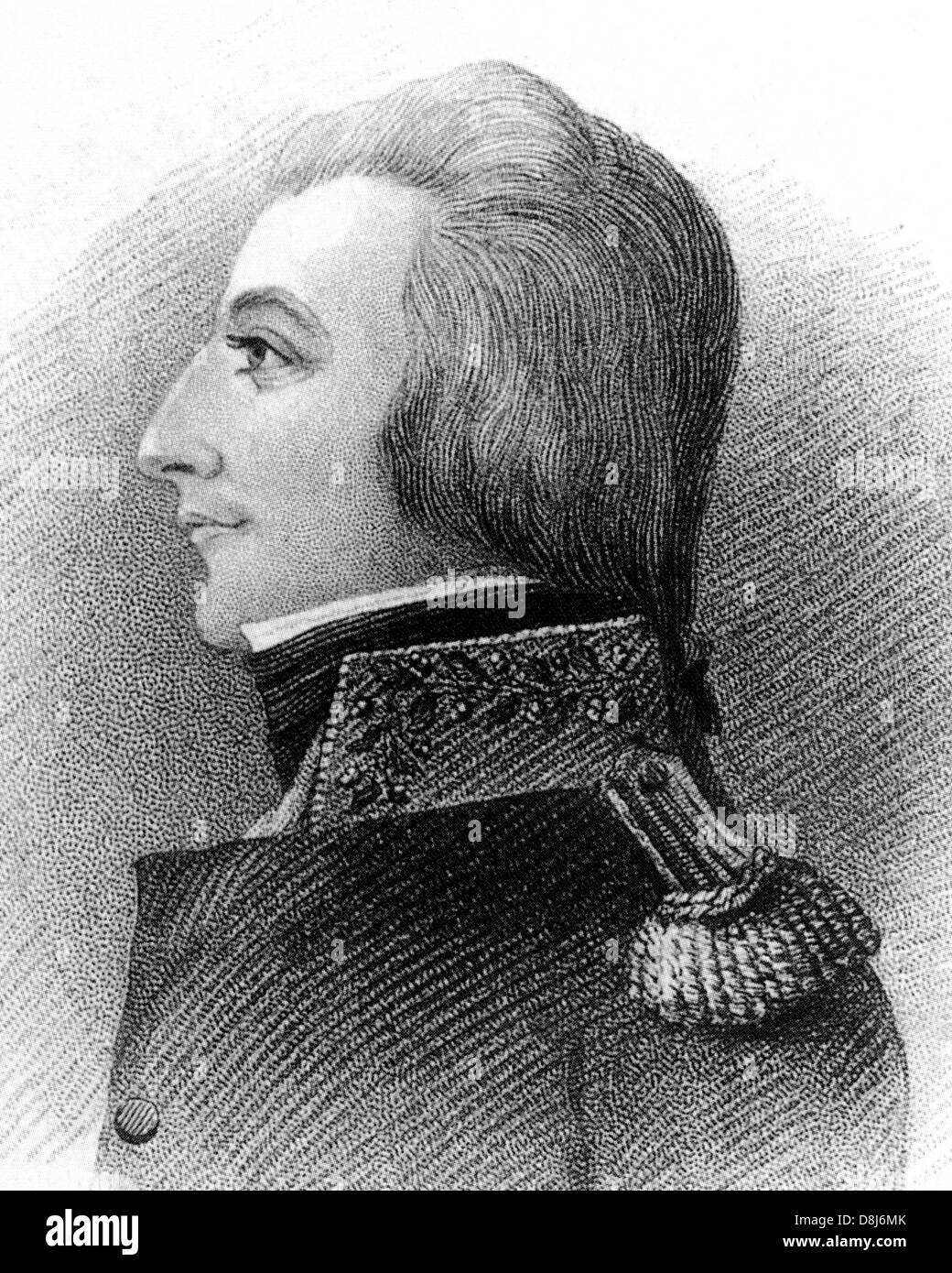 JEAN JOSEPH HUMBERT (1767-1823) French soldier who led a failed invasion of ireland in 1798 Stock Photohttps://www.alamy.com/image-license-details/?v=1https://www.alamy.com/stock-photo-jean-joseph-humbert-1767-1823-french-soldier-who-led-a-failed-invasion-56948771.html
JEAN JOSEPH HUMBERT (1767-1823) French soldier who led a failed invasion of ireland in 1798 Stock Photohttps://www.alamy.com/image-license-details/?v=1https://www.alamy.com/stock-photo-jean-joseph-humbert-1767-1823-french-soldier-who-led-a-failed-invasion-56948771.htmlRMD8J6MK–JEAN JOSEPH HUMBERT (1767-1823) French soldier who led a failed invasion of ireland in 1798
 The Ballinamuck Visitors Centre in Longford, Ireland. it commemorates the French Invasion of Ireland and the Irish rebellion of 1798. Stock Photohttps://www.alamy.com/image-license-details/?v=1https://www.alamy.com/the-ballinamuck-visitors-centre-in-longford-ireland-it-commemorates-the-french-invasion-of-ireland-and-the-irish-rebellion-of-1798-image442975237.html
The Ballinamuck Visitors Centre in Longford, Ireland. it commemorates the French Invasion of Ireland and the Irish rebellion of 1798. Stock Photohttps://www.alamy.com/image-license-details/?v=1https://www.alamy.com/the-ballinamuck-visitors-centre-in-longford-ireland-it-commemorates-the-french-invasion-of-ireland-and-the-irish-rebellion-of-1798-image442975237.htmlRF2GMK7C5–The Ballinamuck Visitors Centre in Longford, Ireland. it commemorates the French Invasion of Ireland and the Irish rebellion of 1798.
 Father Clinch at Vinegar Hill. 1798 Irish Rebellion. Wexford Ireland.TALLIS 1853 Stock Photohttps://www.alamy.com/image-license-details/?v=1https://www.alamy.com/stock-photo-father-clinch-at-vinegar-hill-1798-irish-rebellion-wexford-irelandtallis-107809764.html
Father Clinch at Vinegar Hill. 1798 Irish Rebellion. Wexford Ireland.TALLIS 1853 Stock Photohttps://www.alamy.com/image-license-details/?v=1https://www.alamy.com/stock-photo-father-clinch-at-vinegar-hill-1798-irish-rebellion-wexford-irelandtallis-107809764.htmlRFG7B4CM–Father Clinch at Vinegar Hill. 1798 Irish Rebellion. Wexford Ireland.TALLIS 1853
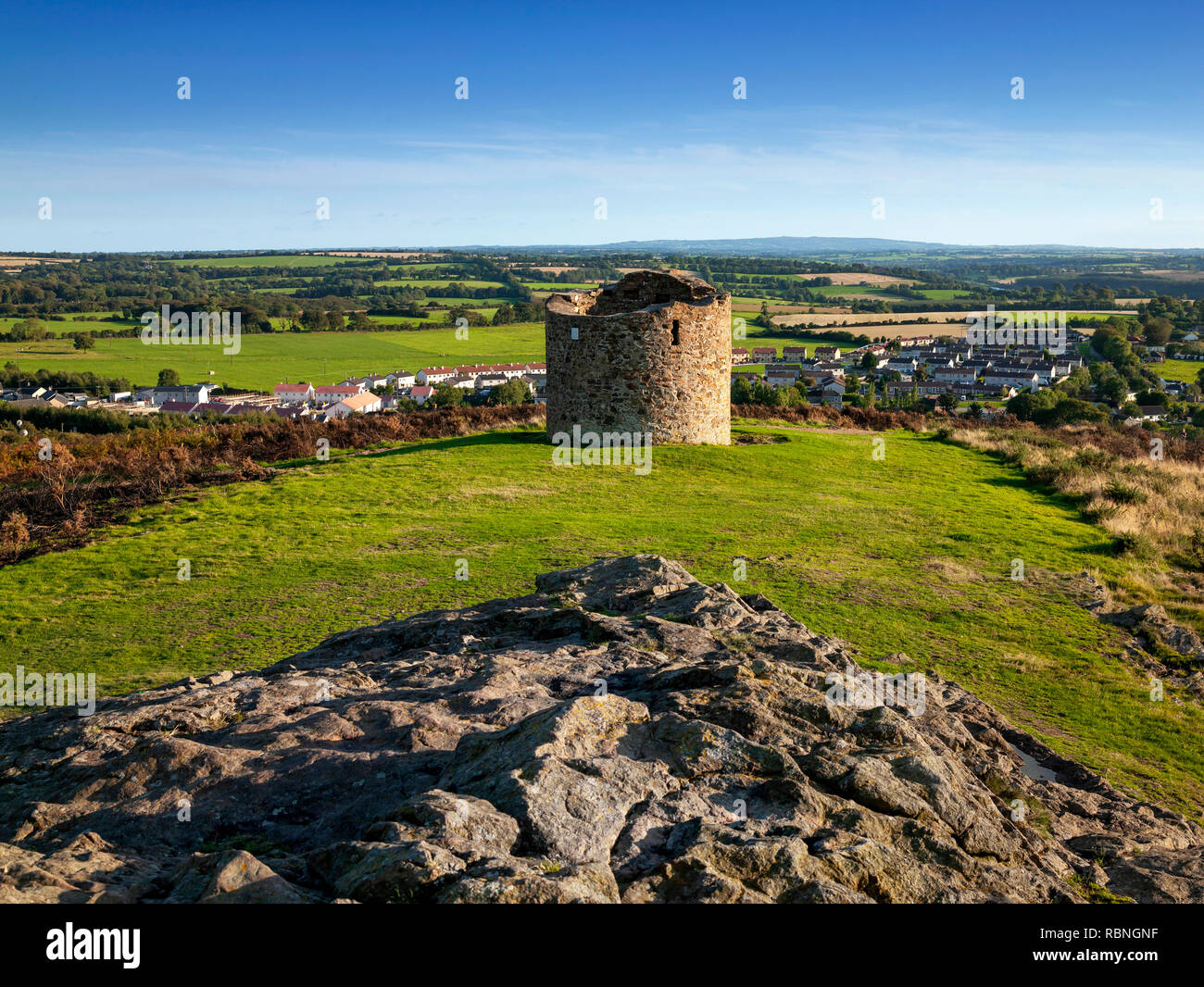 Vinegar Hill outside Enniscorthy, County Wexford, Ireland Stock Photohttps://www.alamy.com/image-license-details/?v=1https://www.alamy.com/vinegar-hill-outside-enniscorthy-county-wexford-ireland-image230970139.html
Vinegar Hill outside Enniscorthy, County Wexford, Ireland Stock Photohttps://www.alamy.com/image-license-details/?v=1https://www.alamy.com/vinegar-hill-outside-enniscorthy-county-wexford-ireland-image230970139.htmlRFRBNGNF–Vinegar Hill outside Enniscorthy, County Wexford, Ireland
 Ireland divided into Provinces and Counties… Great & Cross roads. FADEN 1798 map Stock Photohttps://www.alamy.com/image-license-details/?v=1https://www.alamy.com/ireland-divided-into-provinces-and-counties-great-cross-roads-faden-1798-map-image349783759.html
Ireland divided into Provinces and Counties… Great & Cross roads. FADEN 1798 map Stock Photohttps://www.alamy.com/image-license-details/?v=1https://www.alamy.com/ireland-divided-into-provinces-and-counties-great-cross-roads-faden-1798-map-image349783759.htmlRF2B920N3–Ireland divided into Provinces and Counties… Great & Cross roads. FADEN 1798 map
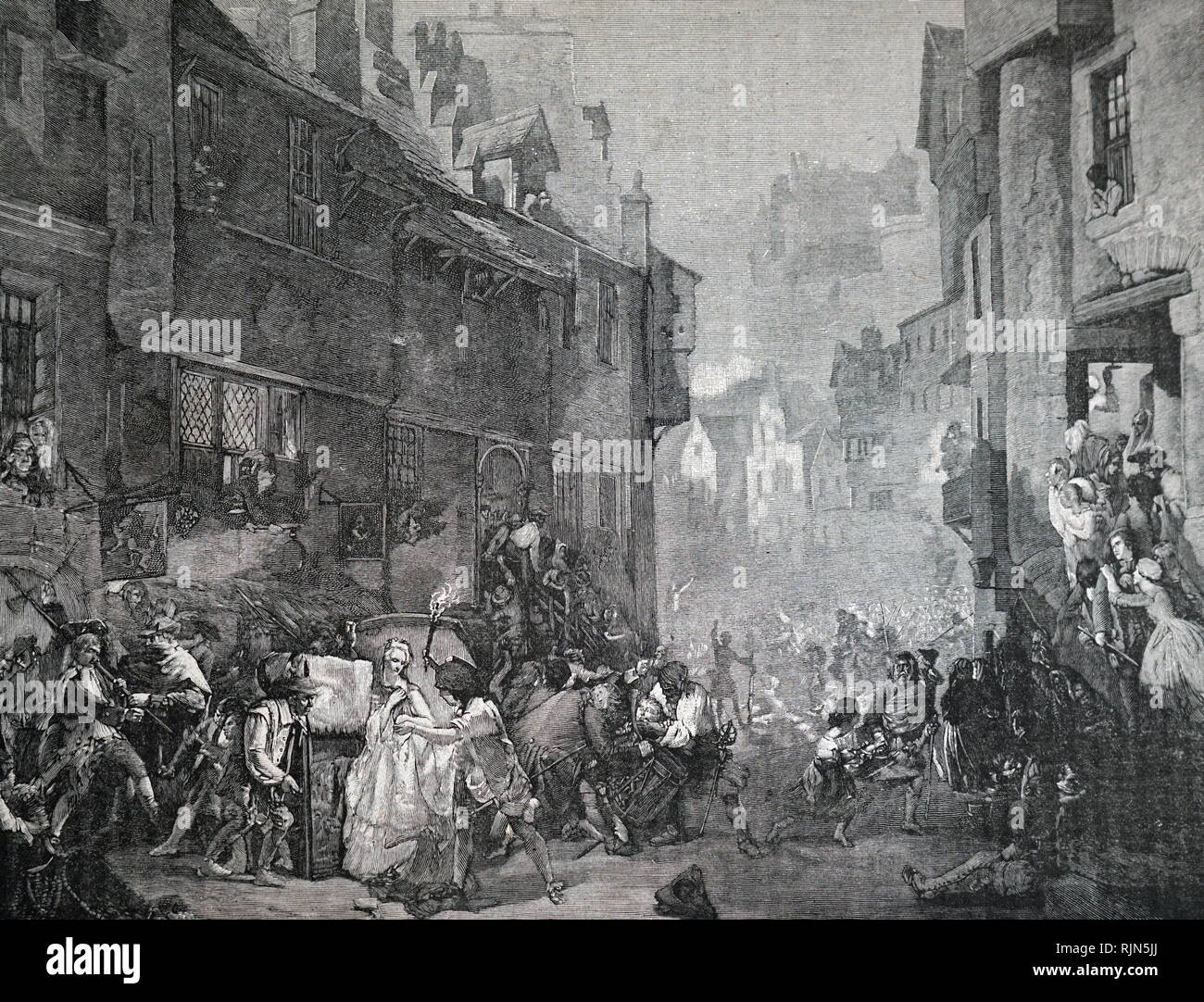 Illustration showing the Irish Rebellion of 1798, against British rule in Ireland from May to September 1798. The United Irishmen, a republican revolutionary group influenced by the ideas of the American and French revolutions, were the main organising force behind the rebellion. It was led by Presbyterians angry at being shut out of power by the Anglican establishment, joined by Catholics, who made up the majority of the population. Stock Photohttps://www.alamy.com/image-license-details/?v=1https://www.alamy.com/illustration-showing-the-irish-rebellion-of-1798-against-british-rule-in-ireland-from-may-to-september-1798-the-united-irishmen-a-republican-revolutionary-group-influenced-by-the-ideas-of-the-american-and-french-revolutions-were-the-main-organising-force-behind-the-rebellion-it-was-led-by-presbyterians-angry-at-being-shut-out-of-power-by-the-anglican-establishment-joined-by-catholics-who-made-up-the-majority-of-the-population-image235264026.html
Illustration showing the Irish Rebellion of 1798, against British rule in Ireland from May to September 1798. The United Irishmen, a republican revolutionary group influenced by the ideas of the American and French revolutions, were the main organising force behind the rebellion. It was led by Presbyterians angry at being shut out of power by the Anglican establishment, joined by Catholics, who made up the majority of the population. Stock Photohttps://www.alamy.com/image-license-details/?v=1https://www.alamy.com/illustration-showing-the-irish-rebellion-of-1798-against-british-rule-in-ireland-from-may-to-september-1798-the-united-irishmen-a-republican-revolutionary-group-influenced-by-the-ideas-of-the-american-and-french-revolutions-were-the-main-organising-force-behind-the-rebellion-it-was-led-by-presbyterians-angry-at-being-shut-out-of-power-by-the-anglican-establishment-joined-by-catholics-who-made-up-the-majority-of-the-population-image235264026.htmlRMRJN5JJ–Illustration showing the Irish Rebellion of 1798, against British rule in Ireland from May to September 1798. The United Irishmen, a republican revolutionary group influenced by the ideas of the American and French revolutions, were the main organising force behind the rebellion. It was led by Presbyterians angry at being shut out of power by the Anglican establishment, joined by Catholics, who made up the majority of the population.
 James Johnson (February 1777 - October 10, 1845) was an Irish physician and writer on diseases of tropical climates. Born in Ireland, at the early age of 15 he became an apprentice to a surgeon-apothecary. In 1798 he moved to London and passed the surgeon's examination. He was appointed surgeons's mate on a naval vessel. In 1800 he took part in an expedition to Egypt and, in 1803, sailed for India. Stock Photohttps://www.alamy.com/image-license-details/?v=1https://www.alamy.com/james-johnson-february-1777-october-10-1845-was-an-irish-physician-and-writer-on-diseases-of-tropical-climates-born-in-ireland-at-the-early-age-of-15-he-became-an-apprentice-to-a-surgeon-apothecary-in-1798-he-moved-to-london-and-passed-the-surgeons-examination-he-was-appointed-surgeonss-mate-on-a-naval-vessel-in-1800-he-took-part-in-an-expedition-to-egypt-and-in-1803-sailed-for-india-image246623379.html
James Johnson (February 1777 - October 10, 1845) was an Irish physician and writer on diseases of tropical climates. Born in Ireland, at the early age of 15 he became an apprentice to a surgeon-apothecary. In 1798 he moved to London and passed the surgeon's examination. He was appointed surgeons's mate on a naval vessel. In 1800 he took part in an expedition to Egypt and, in 1803, sailed for India. Stock Photohttps://www.alamy.com/image-license-details/?v=1https://www.alamy.com/james-johnson-february-1777-october-10-1845-was-an-irish-physician-and-writer-on-diseases-of-tropical-climates-born-in-ireland-at-the-early-age-of-15-he-became-an-apprentice-to-a-surgeon-apothecary-in-1798-he-moved-to-london-and-passed-the-surgeons-examination-he-was-appointed-surgeonss-mate-on-a-naval-vessel-in-1800-he-took-part-in-an-expedition-to-egypt-and-in-1803-sailed-for-india-image246623379.htmlRMT96JHR–James Johnson (February 1777 - October 10, 1845) was an Irish physician and writer on diseases of tropical climates. Born in Ireland, at the early age of 15 he became an apprentice to a surgeon-apothecary. In 1798 he moved to London and passed the surgeon's examination. He was appointed surgeons's mate on a naval vessel. In 1800 he took part in an expedition to Egypt and, in 1803, sailed for India.
 Oulart Hill in Wexford Ireland - location for the Irish uprising of 1798. Stock Photohttps://www.alamy.com/image-license-details/?v=1https://www.alamy.com/oulart-hill-in-wexford-ireland-location-for-the-irish-uprising-of-1798-image367260427.html
Oulart Hill in Wexford Ireland - location for the Irish uprising of 1798. Stock Photohttps://www.alamy.com/image-license-details/?v=1https://www.alamy.com/oulart-hill-in-wexford-ireland-location-for-the-irish-uprising-of-1798-image367260427.htmlRM2C9E4BR–Oulart Hill in Wexford Ireland - location for the Irish uprising of 1798.
 FRENCH IN IRELAND Stock Photohttps://www.alamy.com/image-license-details/?v=1https://www.alamy.com/stock-photo-french-in-ireland-56716826.html
FRENCH IN IRELAND Stock Photohttps://www.alamy.com/image-license-details/?v=1https://www.alamy.com/stock-photo-french-in-ireland-56716826.htmlRMD87JTX–FRENCH IN IRELAND
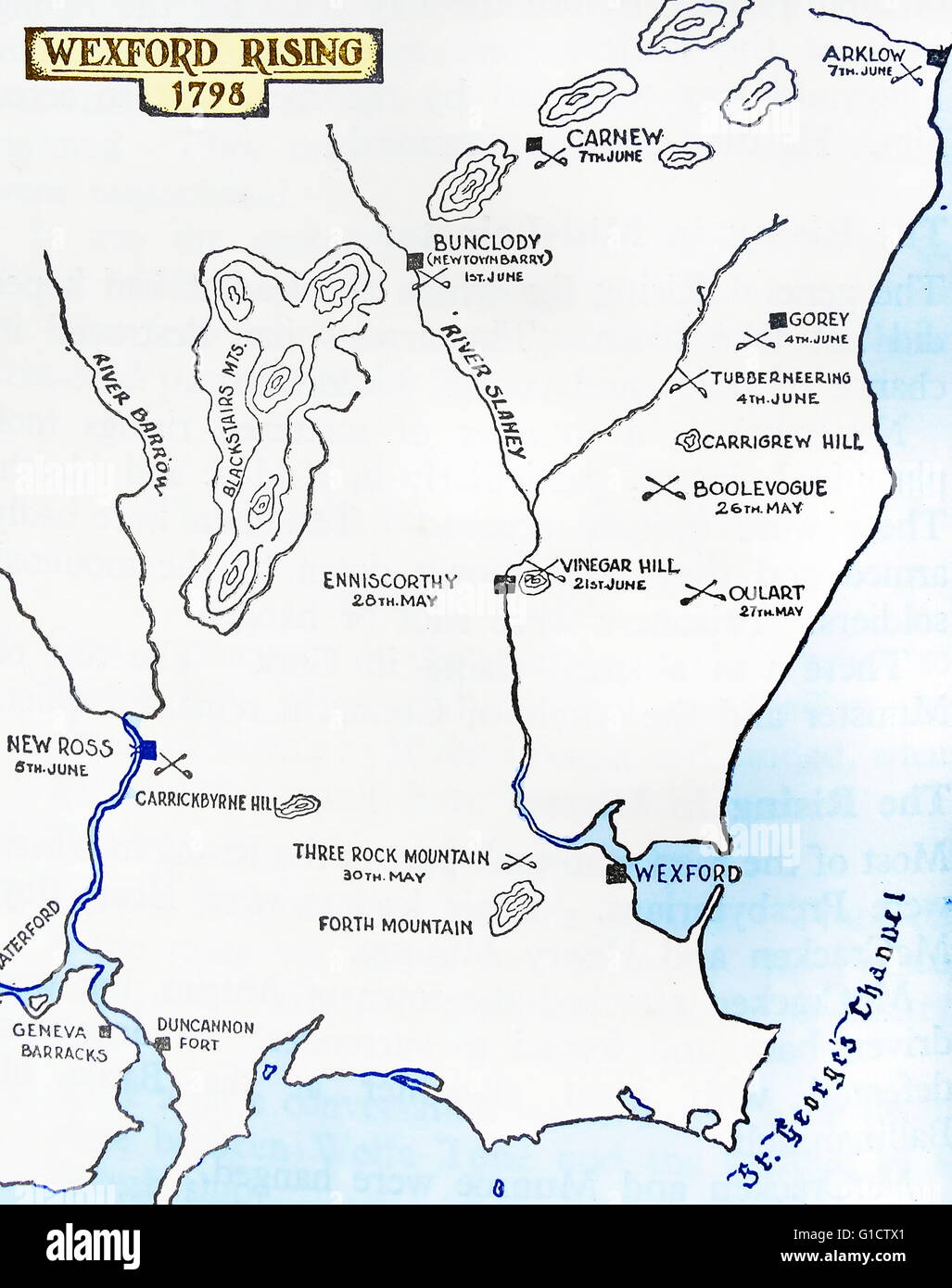 The Wexford Rebellion refers to the outbreak in County Wexford; Ireland in May 1798 of the Society of United Irishmen's Rising against the English domination of Ireland Stock Photohttps://www.alamy.com/image-license-details/?v=1https://www.alamy.com/stock-photo-the-wexford-rebellion-refers-to-the-outbreak-in-county-wexford-ireland-104159833.html
The Wexford Rebellion refers to the outbreak in County Wexford; Ireland in May 1798 of the Society of United Irishmen's Rising against the English domination of Ireland Stock Photohttps://www.alamy.com/image-license-details/?v=1https://www.alamy.com/stock-photo-the-wexford-rebellion-refers-to-the-outbreak-in-county-wexford-ireland-104159833.htmlRMG1CTX1–The Wexford Rebellion refers to the outbreak in County Wexford; Ireland in May 1798 of the Society of United Irishmen's Rising against the English domination of Ireland
 EVENTS/IRELAND 1798 Stock Photohttps://www.alamy.com/image-license-details/?v=1https://www.alamy.com/eventsireland-1798-image222904959.html
EVENTS/IRELAND 1798 Stock Photohttps://www.alamy.com/image-license-details/?v=1https://www.alamy.com/eventsireland-1798-image222904959.htmlRMPXJ5FB–EVENTS/IRELAND 1798
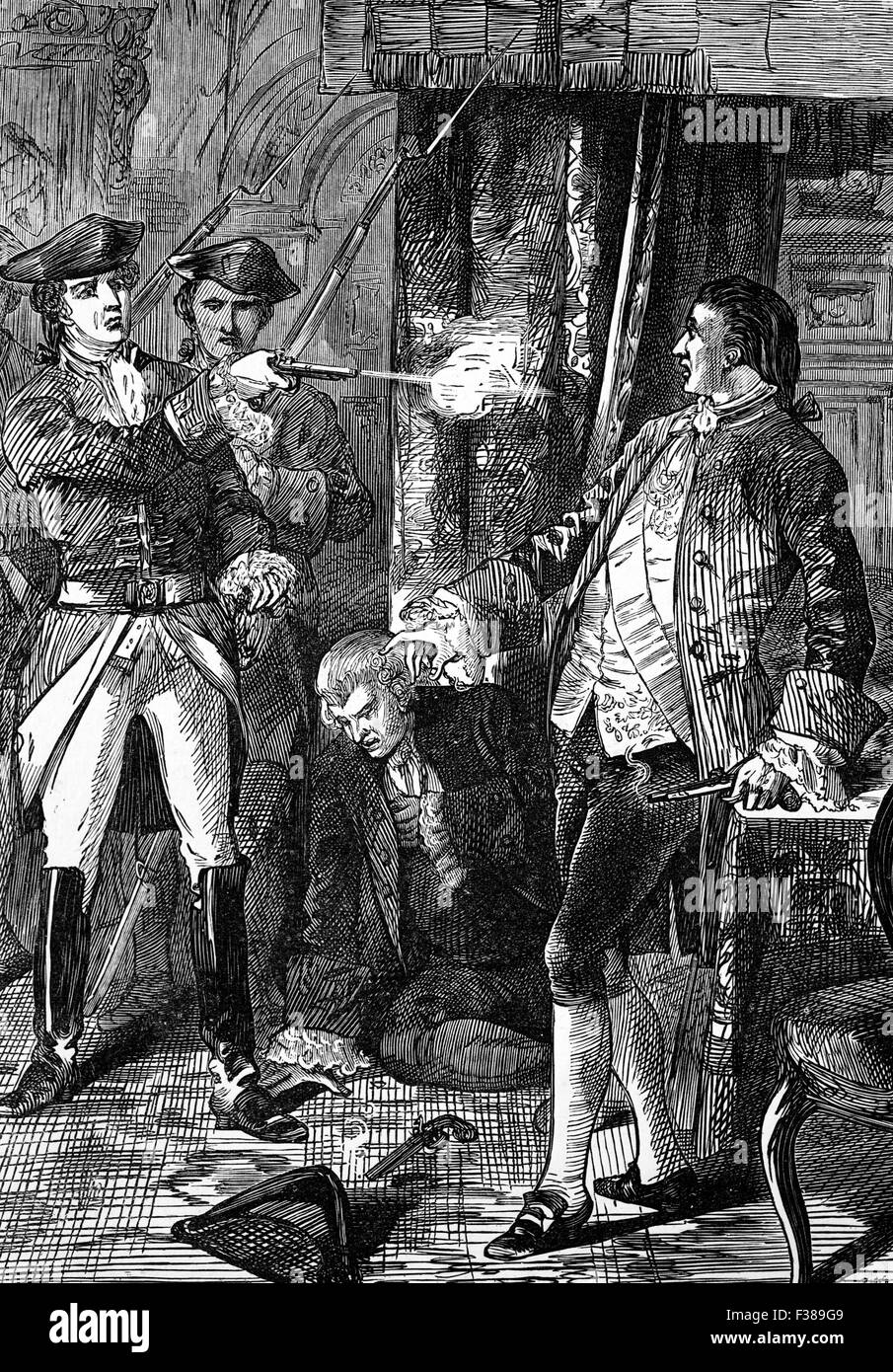 Lord Edward FitzGerald, an Irish aristocrat and revolutionary. who died of wounds resisting arrest on charge of treason for his part in the 1798 Uprising by the United Irishmen. He was buried the next day in the cemetery of St Werburgh's Church, Dublin Stock Photohttps://www.alamy.com/image-license-details/?v=1https://www.alamy.com/stock-photo-lord-edward-fitzgerald-an-irish-aristocrat-and-revolutionary-who-died-88078937.html
Lord Edward FitzGerald, an Irish aristocrat and revolutionary. who died of wounds resisting arrest on charge of treason for his part in the 1798 Uprising by the United Irishmen. He was buried the next day in the cemetery of St Werburgh's Church, Dublin Stock Photohttps://www.alamy.com/image-license-details/?v=1https://www.alamy.com/stock-photo-lord-edward-fitzgerald-an-irish-aristocrat-and-revolutionary-who-died-88078937.htmlRMF389G9–Lord Edward FitzGerald, an Irish aristocrat and revolutionary. who died of wounds resisting arrest on charge of treason for his part in the 1798 Uprising by the United Irishmen. He was buried the next day in the cemetery of St Werburgh's Church, Dublin
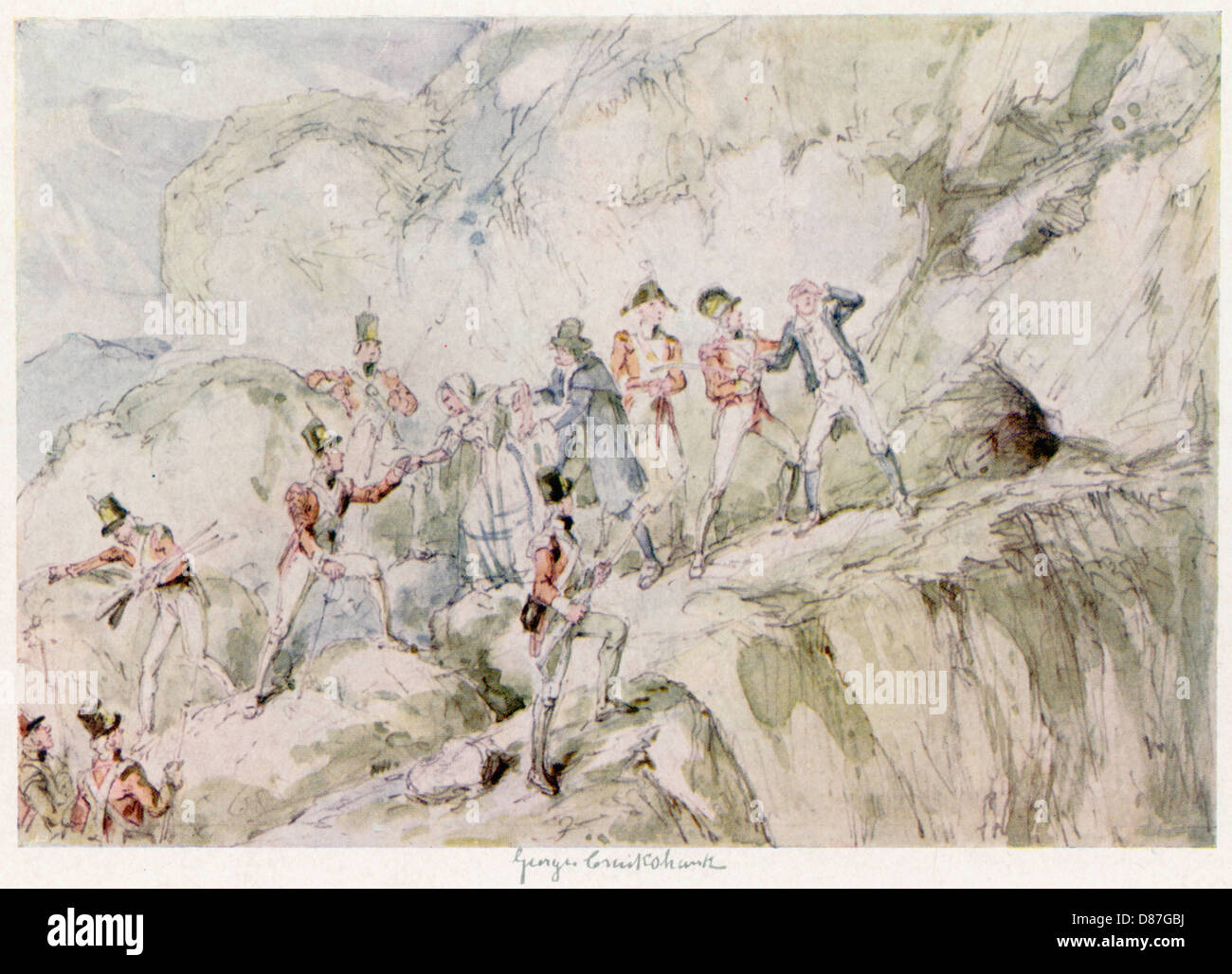 EVENTS/IRELAND 1798 Stock Photohttps://www.alamy.com/image-license-details/?v=1https://www.alamy.com/stock-photo-eventsireland-1798-56714886.html
EVENTS/IRELAND 1798 Stock Photohttps://www.alamy.com/image-license-details/?v=1https://www.alamy.com/stock-photo-eventsireland-1798-56714886.htmlRMD87GBJ–EVENTS/IRELAND 1798
 John Henry Colclough and Bagenal Harvey, leaders of the Irish Rebellion of 1798, took refuge in a cave on the Saltee Islands from whence they planned to escape to republican France. They were betrayed, arrested and brought to Wexford town. There they were hanged on the bridge on 28 June 1798. Stock Photohttps://www.alamy.com/image-license-details/?v=1https://www.alamy.com/stock-photo-john-henry-colclough-and-bagenal-harvey-leaders-of-the-irish-rebellion-131736691.html
John Henry Colclough and Bagenal Harvey, leaders of the Irish Rebellion of 1798, took refuge in a cave on the Saltee Islands from whence they planned to escape to republican France. They were betrayed, arrested and brought to Wexford town. There they were hanged on the bridge on 28 June 1798. Stock Photohttps://www.alamy.com/image-license-details/?v=1https://www.alamy.com/stock-photo-john-henry-colclough-and-bagenal-harvey-leaders-of-the-irish-rebellion-131736691.htmlRMHJ93DR–John Henry Colclough and Bagenal Harvey, leaders of the Irish Rebellion of 1798, took refuge in a cave on the Saltee Islands from whence they planned to escape to republican France. They were betrayed, arrested and brought to Wexford town. There they were hanged on the bridge on 28 June 1798.
 EVENTS/IRELAND 1798 Stock Photohttps://www.alamy.com/image-license-details/?v=1https://www.alamy.com/eventsireland-1798-image222904966.html
EVENTS/IRELAND 1798 Stock Photohttps://www.alamy.com/image-license-details/?v=1https://www.alamy.com/eventsireland-1798-image222904966.htmlRMPXJ5FJ–EVENTS/IRELAND 1798
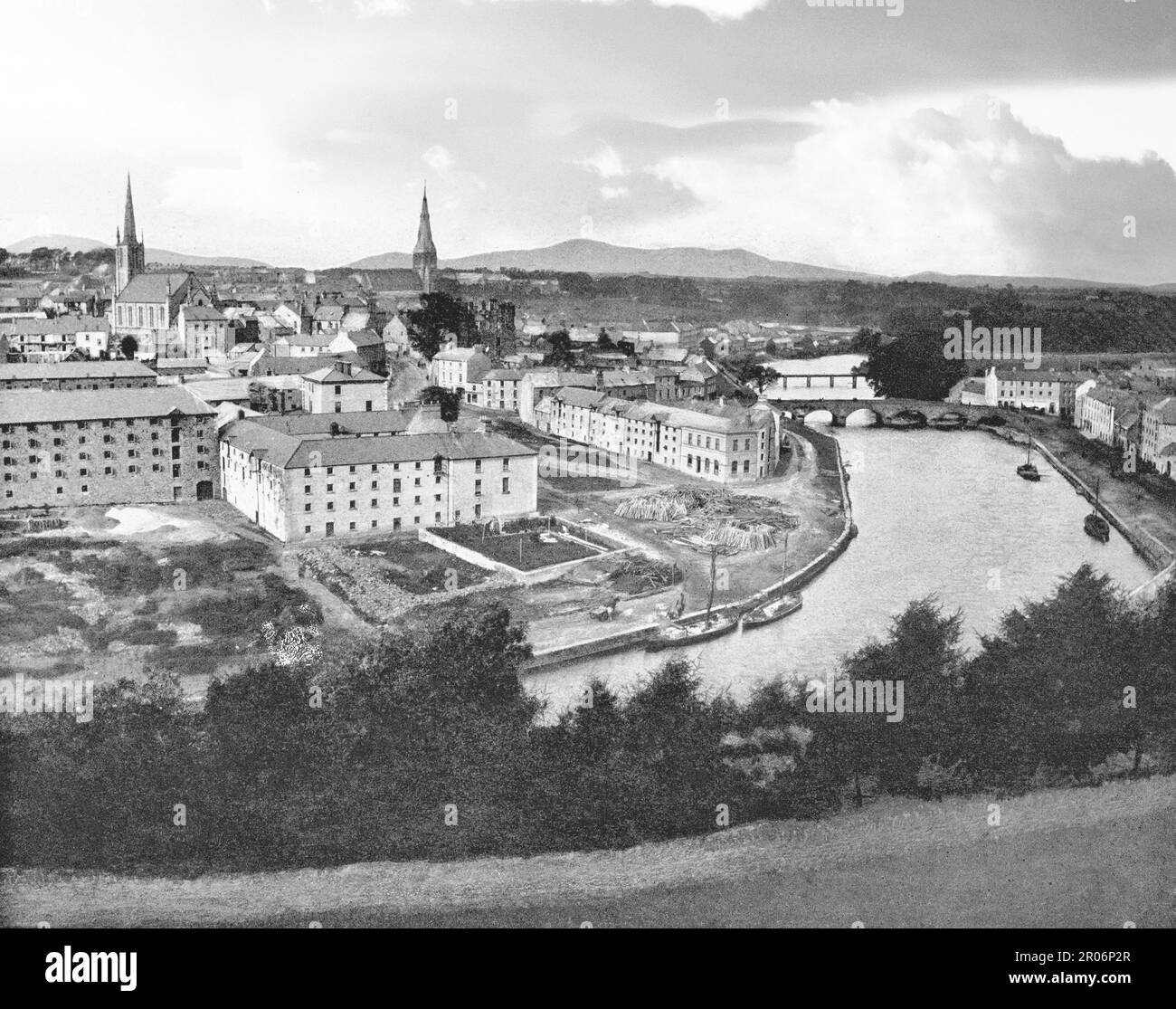 A late 19th century view of Enniscorthy located on the picturesque River Slaney in County Wexford, Ireland. The town, was the largest camp and headquarters of the rebels of 1798 who controlled County Wexford for thirty days against vastly superior forces, before their defeat on 21 June. Stock Photohttps://www.alamy.com/image-license-details/?v=1https://www.alamy.com/a-late-19th-century-view-of-enniscorthy-located-on-the-picturesque-river-slaney-in-county-wexford-ireland-the-town-was-the-largest-camp-and-headquarters-of-the-rebels-of-1798-who-controlled-county-wexford-for-thirty-days-against-vastly-superior-forces-before-their-defeat-on-21-june-image550880815.html
A late 19th century view of Enniscorthy located on the picturesque River Slaney in County Wexford, Ireland. The town, was the largest camp and headquarters of the rebels of 1798 who controlled County Wexford for thirty days against vastly superior forces, before their defeat on 21 June. Stock Photohttps://www.alamy.com/image-license-details/?v=1https://www.alamy.com/a-late-19th-century-view-of-enniscorthy-located-on-the-picturesque-river-slaney-in-county-wexford-ireland-the-town-was-the-largest-camp-and-headquarters-of-the-rebels-of-1798-who-controlled-county-wexford-for-thirty-days-against-vastly-superior-forces-before-their-defeat-on-21-june-image550880815.htmlRM2R06P2R–A late 19th century view of Enniscorthy located on the picturesque River Slaney in County Wexford, Ireland. The town, was the largest camp and headquarters of the rebels of 1798 who controlled County Wexford for thirty days against vastly superior forces, before their defeat on 21 June.
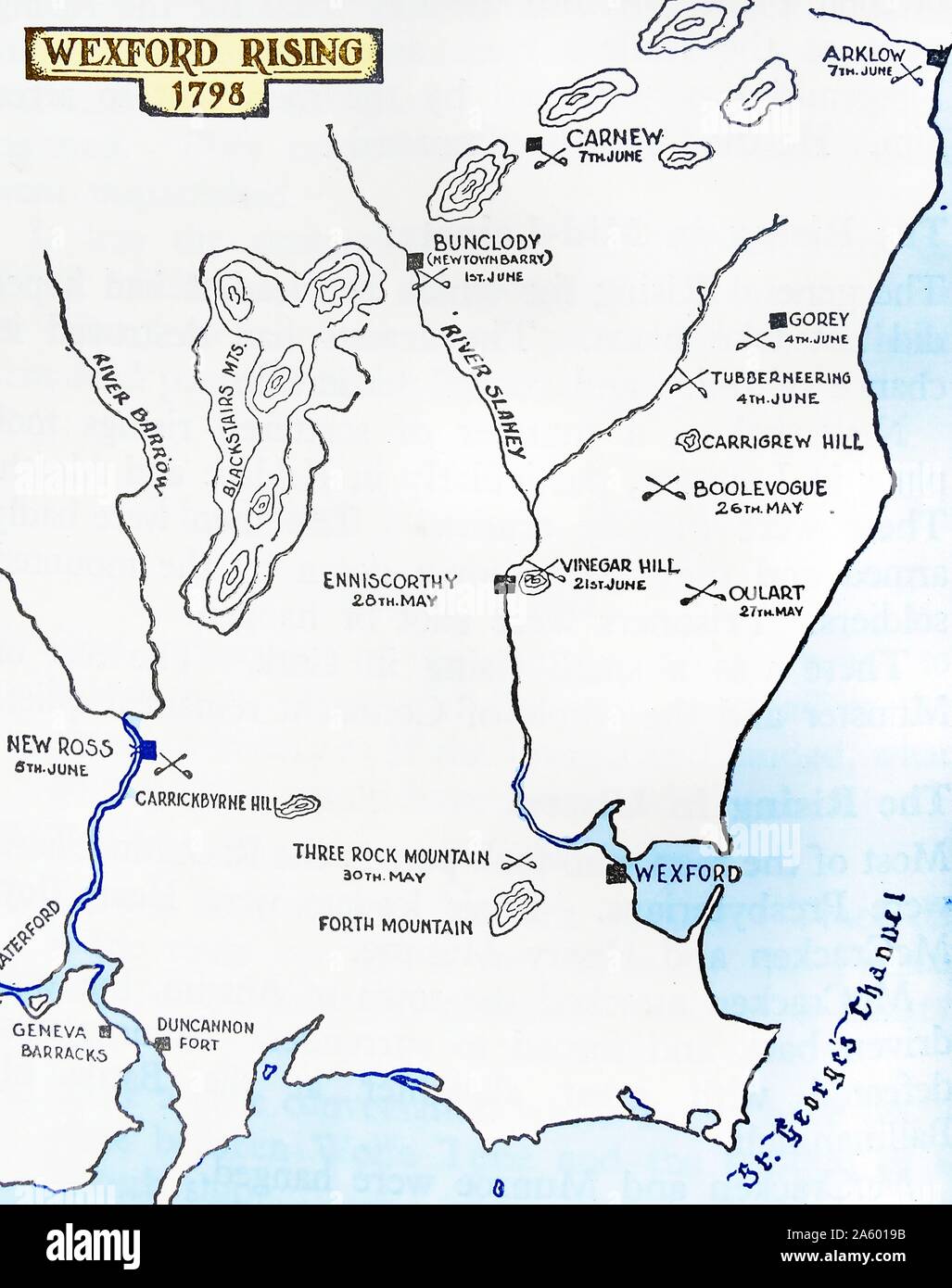 The Wexford Rebellion refers to the outbreak in County Wexford; Ireland in May 1798 of the Society of United Irishmen's Rising against the English domination of Ireland Stock Photohttps://www.alamy.com/image-license-details/?v=1https://www.alamy.com/the-wexford-rebellion-refers-to-the-outbreak-in-county-wexford-ireland-in-may-1798-of-the-society-of-united-irishmens-rising-against-the-english-domination-of-ireland-image330685975.html
The Wexford Rebellion refers to the outbreak in County Wexford; Ireland in May 1798 of the Society of United Irishmen's Rising against the English domination of Ireland Stock Photohttps://www.alamy.com/image-license-details/?v=1https://www.alamy.com/the-wexford-rebellion-refers-to-the-outbreak-in-county-wexford-ireland-in-may-1798-of-the-society-of-united-irishmens-rising-against-the-english-domination-of-ireland-image330685975.htmlRM2A6019B–The Wexford Rebellion refers to the outbreak in County Wexford; Ireland in May 1798 of the Society of United Irishmen's Rising against the English domination of Ireland
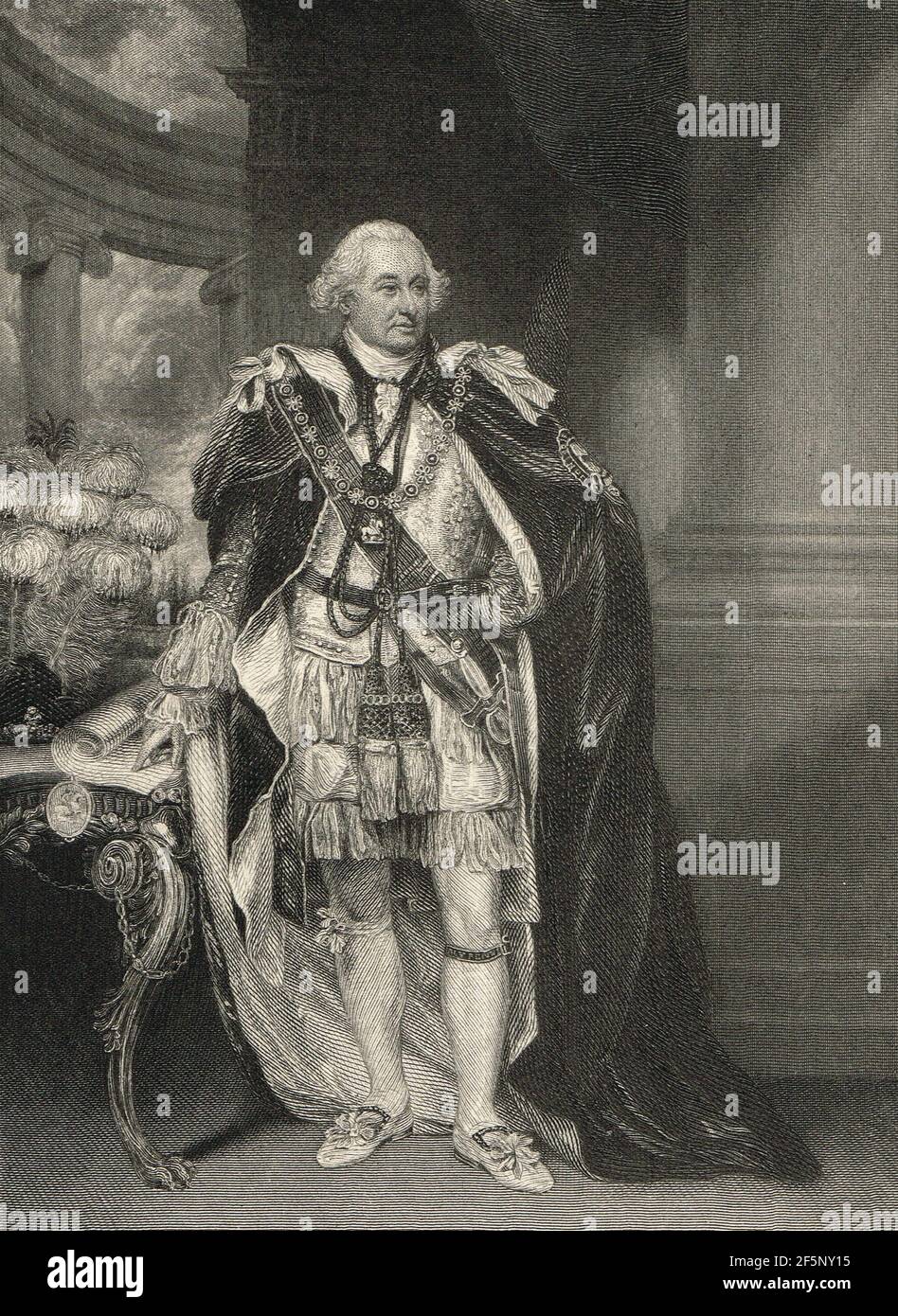 Charles Cornwallis, 1st Marquess Cornwallis, Lord Lieutenant and Commander-in-chief of Ireland, during the Irish Rebellion of 1798 Stock Photohttps://www.alamy.com/image-license-details/?v=1https://www.alamy.com/charles-cornwallis-1st-marquess-cornwallis-lord-lieutenant-and-commander-in-chief-of-ireland-during-the-irish-rebellion-of-1798-image416604305.html
Charles Cornwallis, 1st Marquess Cornwallis, Lord Lieutenant and Commander-in-chief of Ireland, during the Irish Rebellion of 1798 Stock Photohttps://www.alamy.com/image-license-details/?v=1https://www.alamy.com/charles-cornwallis-1st-marquess-cornwallis-lord-lieutenant-and-commander-in-chief-of-ireland-during-the-irish-rebellion-of-1798-image416604305.htmlRM2F5NY15–Charles Cornwallis, 1st Marquess Cornwallis, Lord Lieutenant and Commander-in-chief of Ireland, during the Irish Rebellion of 1798
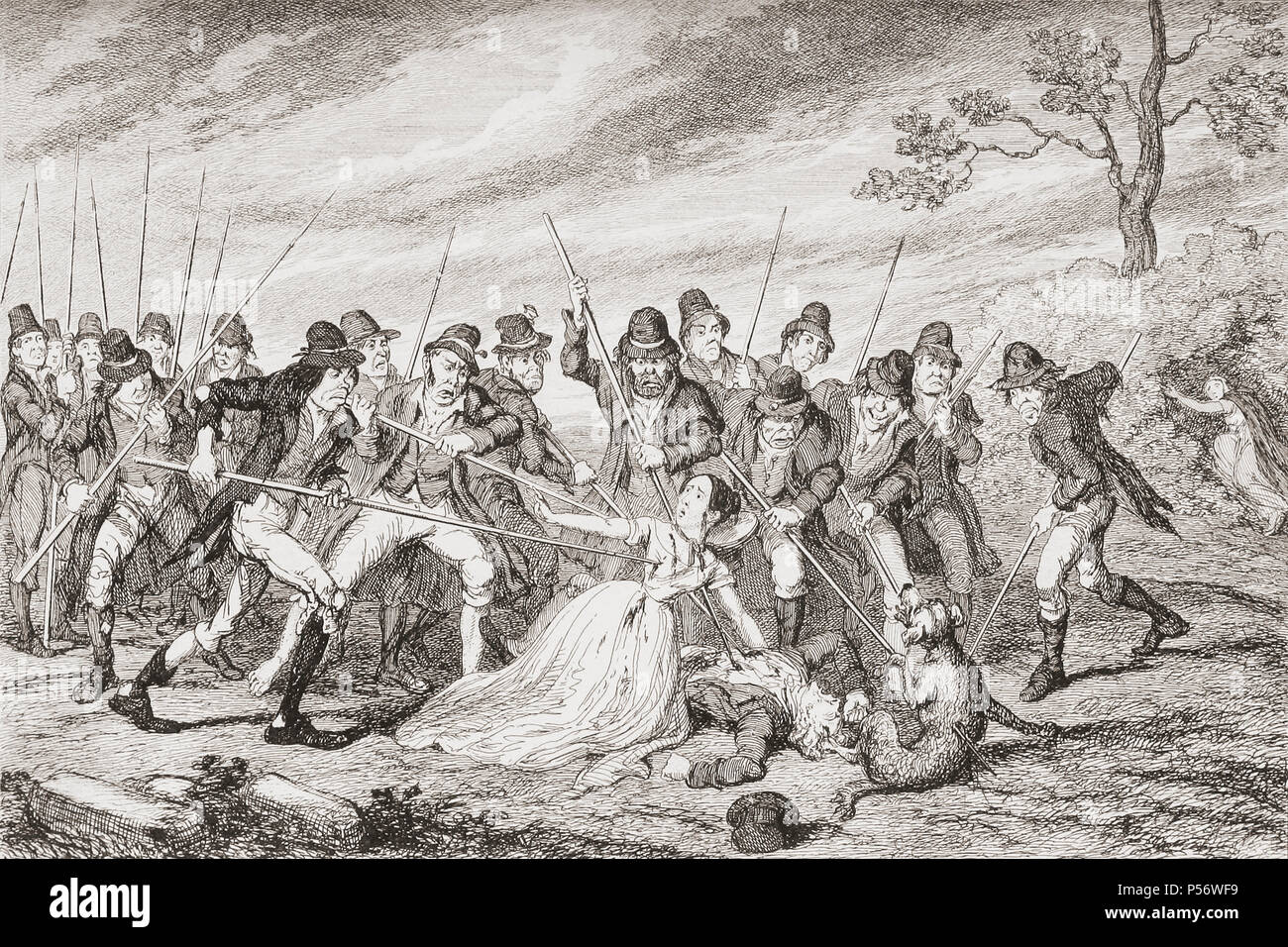 “The murder of George Crawford and his granddaughter”. An incident during the Irish Rebellion of 1798. Illustration by George Cruikshank. From History of the Irish Rebellion in 1798; with Memoirs of the Union, and Emmett’s Insurrection in 1803 by W.H. Maxwell. Published in London 1854. Stock Photohttps://www.alamy.com/image-license-details/?v=1https://www.alamy.com/the-murder-of-george-crawford-and-his-granddaughter-an-incident-during-the-irish-rebellion-of-1798-illustration-by-george-cruikshank-from-history-of-the-irish-rebellion-in-1798-with-memoirs-of-the-union-and-emmetts-insurrection-in-1803-by-wh-maxwell-published-in-london-1854-image209749437.html
“The murder of George Crawford and his granddaughter”. An incident during the Irish Rebellion of 1798. Illustration by George Cruikshank. From History of the Irish Rebellion in 1798; with Memoirs of the Union, and Emmett’s Insurrection in 1803 by W.H. Maxwell. Published in London 1854. Stock Photohttps://www.alamy.com/image-license-details/?v=1https://www.alamy.com/the-murder-of-george-crawford-and-his-granddaughter-an-incident-during-the-irish-rebellion-of-1798-illustration-by-george-cruikshank-from-history-of-the-irish-rebellion-in-1798-with-memoirs-of-the-union-and-emmetts-insurrection-in-1803-by-wh-maxwell-published-in-london-1854-image209749437.htmlRMP56WF9–“The murder of George Crawford and his granddaughter”. An incident during the Irish Rebellion of 1798. Illustration by George Cruikshank. From History of the Irish Rebellion in 1798; with Memoirs of the Union, and Emmett’s Insurrection in 1803 by W.H. Maxwell. Published in London 1854.
 View of Enniscorthy, Wexford, Ireland, at the time of Irish Rebellion of 1798 Stock Photohttps://www.alamy.com/image-license-details/?v=1https://www.alamy.com/stock-image-view-of-enniscorthy-wexford-ireland-at-the-time-of-irish-rebellion-164409010.html
View of Enniscorthy, Wexford, Ireland, at the time of Irish Rebellion of 1798 Stock Photohttps://www.alamy.com/image-license-details/?v=1https://www.alamy.com/stock-image-view-of-enniscorthy-wexford-ireland-at-the-time-of-irish-rebellion-164409010.htmlRMKFDDAA–View of Enniscorthy, Wexford, Ireland, at the time of Irish Rebellion of 1798
 A sign for the Village of Ballinamuck, Longford, Ireland. In 1798 a French force, led by General Humbert, invaded Ireland and were defeated here. Stock Photohttps://www.alamy.com/image-license-details/?v=1https://www.alamy.com/a-sign-for-the-village-of-ballinamuck-longford-ireland-in-1798-a-french-force-led-by-general-humbert-invaded-ireland-and-were-defeated-here-image442975241.html
A sign for the Village of Ballinamuck, Longford, Ireland. In 1798 a French force, led by General Humbert, invaded Ireland and were defeated here. Stock Photohttps://www.alamy.com/image-license-details/?v=1https://www.alamy.com/a-sign-for-the-village-of-ballinamuck-longford-ireland-in-1798-a-french-force-led-by-general-humbert-invaded-ireland-and-were-defeated-here-image442975241.htmlRF2GMK7C9–A sign for the Village of Ballinamuck, Longford, Ireland. In 1798 a French force, led by General Humbert, invaded Ireland and were defeated here.
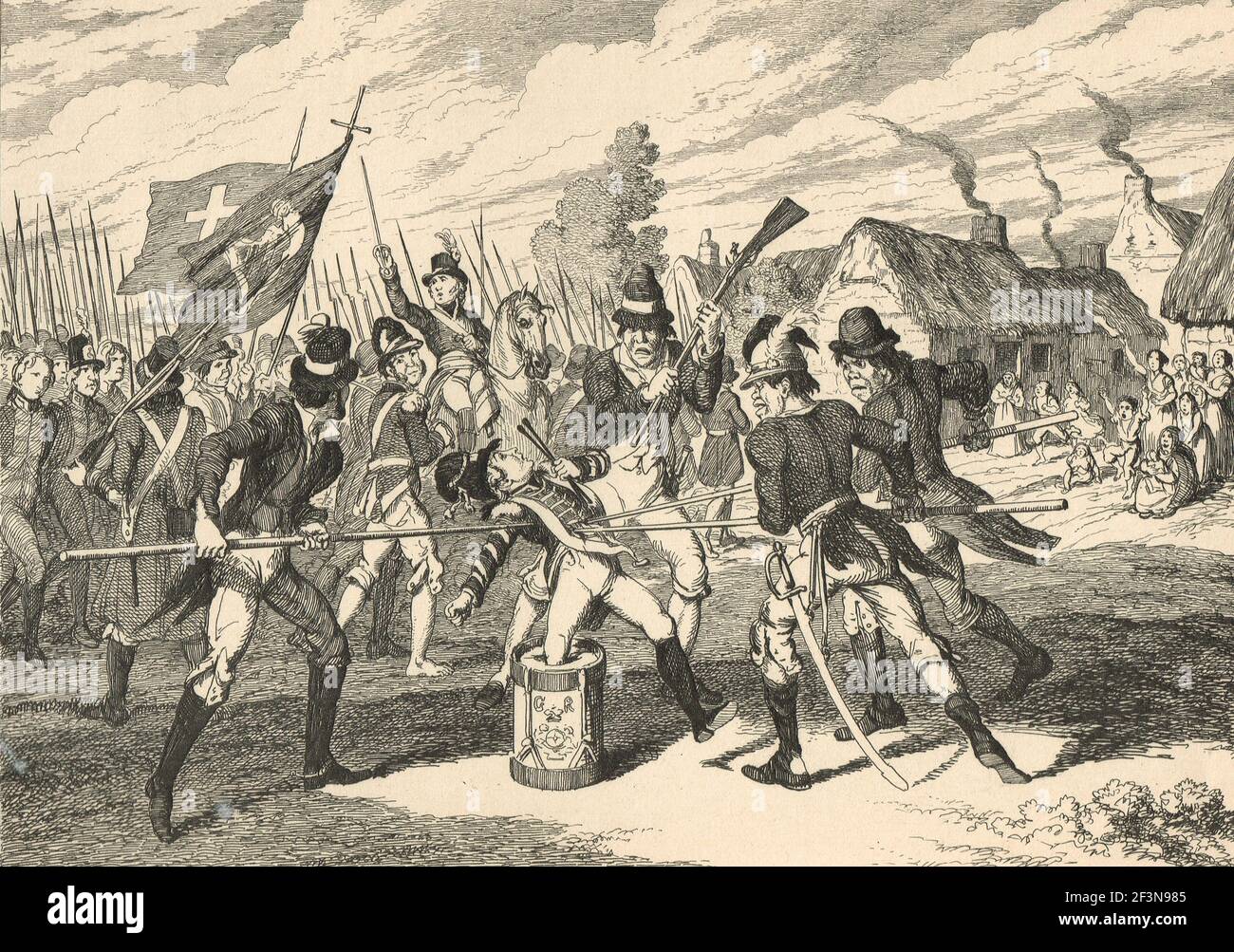 Murder of the loyal little drummer boy, during the Irish Rebellion of 1798 Stock Photohttps://www.alamy.com/image-license-details/?v=1https://www.alamy.com/murder-of-the-loyal-little-drummer-boy-during-the-irish-rebellion-of-1798-image415361077.html
Murder of the loyal little drummer boy, during the Irish Rebellion of 1798 Stock Photohttps://www.alamy.com/image-license-details/?v=1https://www.alamy.com/murder-of-the-loyal-little-drummer-boy-during-the-irish-rebellion-of-1798-image415361077.htmlRM2F3N985–Murder of the loyal little drummer boy, during the Irish Rebellion of 1798
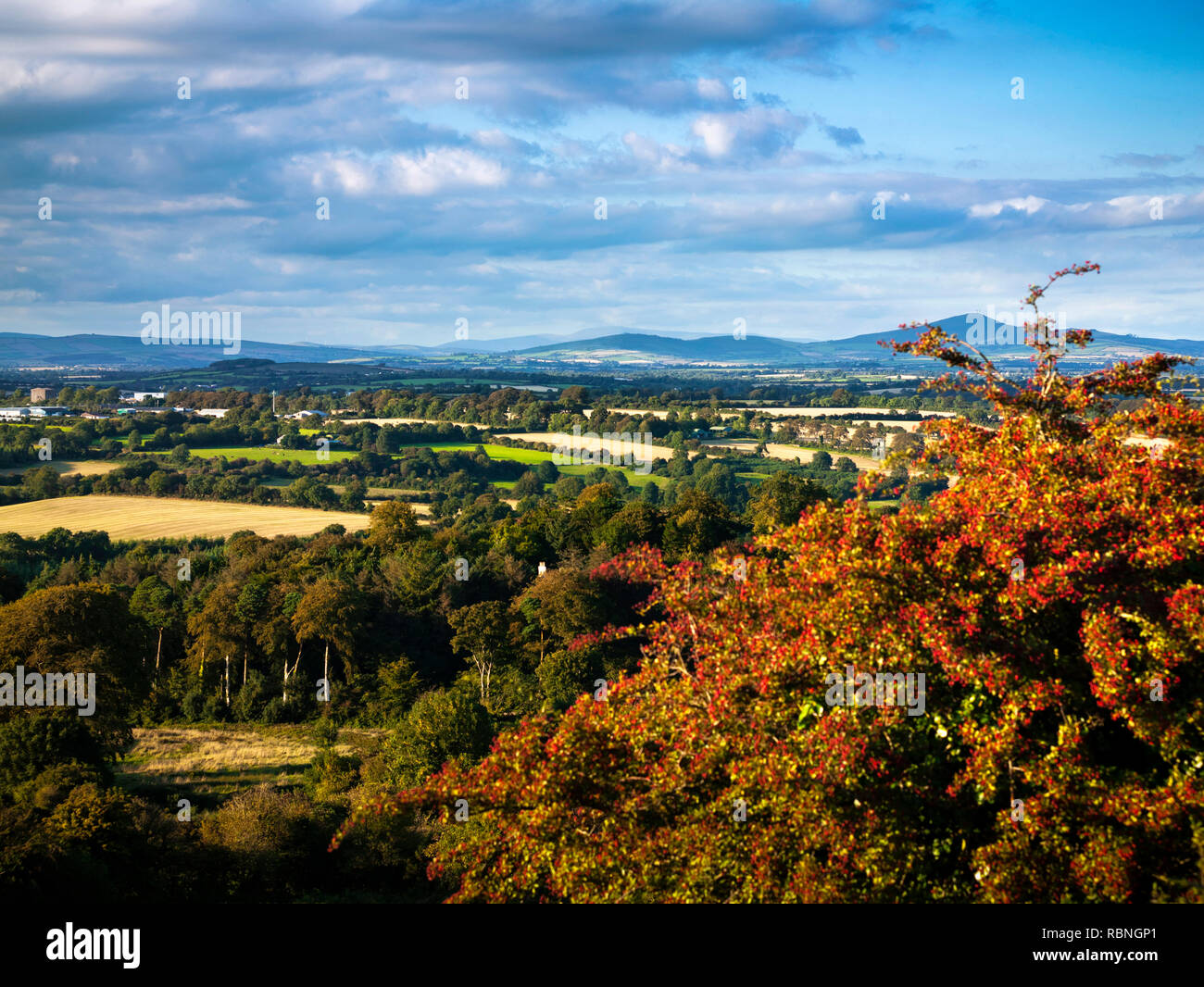 Vinegar Hill outside Enniscorthy, County Wexford, Ireland Stock Photohttps://www.alamy.com/image-license-details/?v=1https://www.alamy.com/vinegar-hill-outside-enniscorthy-county-wexford-ireland-image230970153.html
Vinegar Hill outside Enniscorthy, County Wexford, Ireland Stock Photohttps://www.alamy.com/image-license-details/?v=1https://www.alamy.com/vinegar-hill-outside-enniscorthy-county-wexford-ireland-image230970153.htmlRFRBNGP1–Vinegar Hill outside Enniscorthy, County Wexford, Ireland
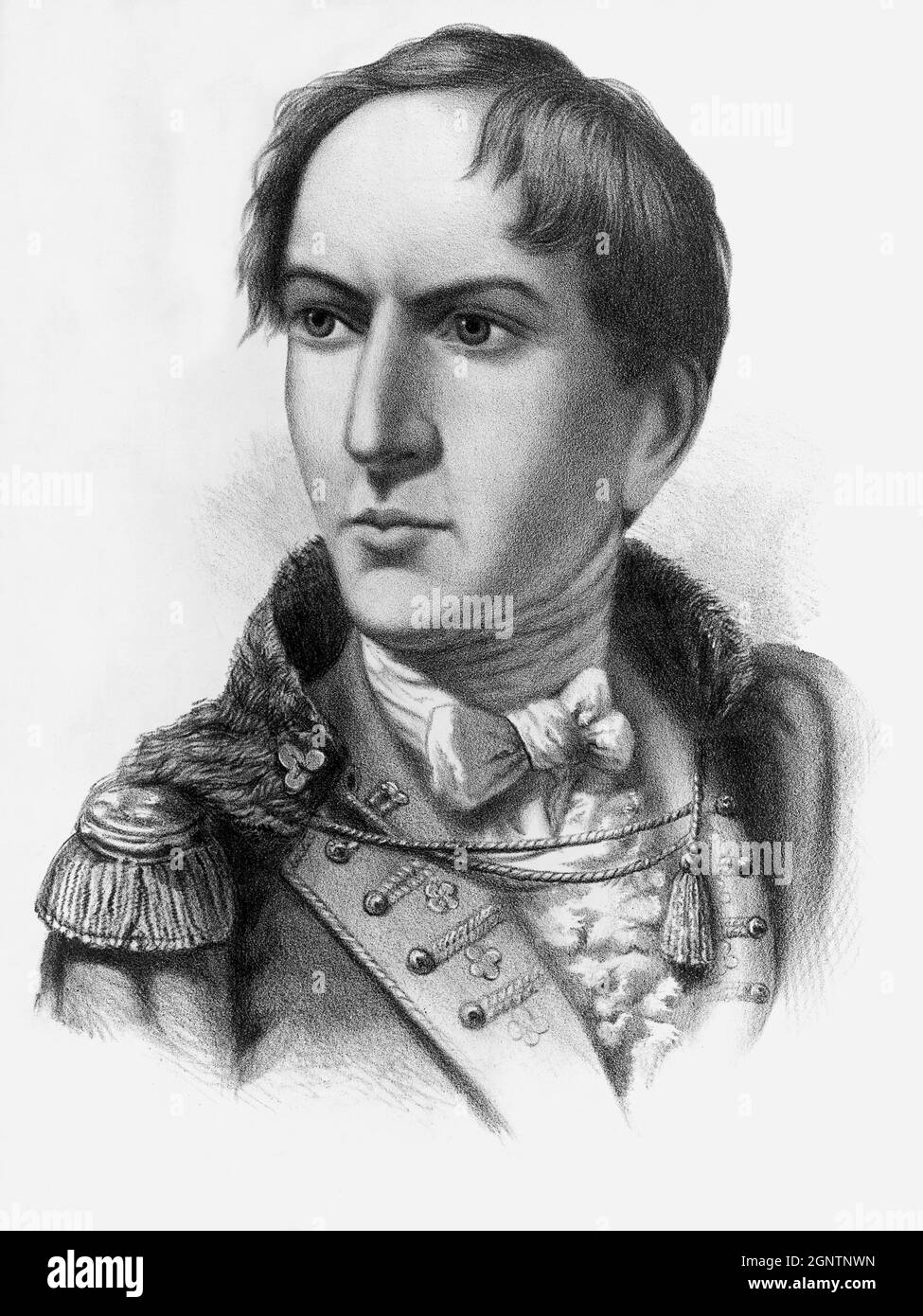 Robert Emmet (1778-1803) was an Irish Republican, orator and rebel leader. Following the suppression of the United Irish uprising in 1798, he sought to organise a renewed attempt to overthrow the British Crown and Protestant Ascendancy in Ireland, and to establish a national representative government. He had hopes of French assistance, however, many of the surviving veterans of '98 hesitated to lend their support, and his rising in Dublin in 1803 proved abortive. Emmet was captured on 25 August, 1803 and executed. Stock Photohttps://www.alamy.com/image-license-details/?v=1https://www.alamy.com/robert-emmet-1778-1803-was-an-irish-republican-orator-and-rebel-leader-following-the-suppression-of-the-united-irish-uprising-in-1798-he-sought-to-organise-a-renewed-attempt-to-overthrow-the-british-crown-and-protestant-ascendancy-in-ireland-and-to-establish-a-national-representative-government-he-had-hopes-of-french-assistance-however-many-of-the-surviving-veterans-of-98-hesitated-to-lend-their-support-and-his-rising-in-dublin-in-1803-proved-abortive-emmet-was-captured-on-25-august-1803-and-executed-image443711009.html
Robert Emmet (1778-1803) was an Irish Republican, orator and rebel leader. Following the suppression of the United Irish uprising in 1798, he sought to organise a renewed attempt to overthrow the British Crown and Protestant Ascendancy in Ireland, and to establish a national representative government. He had hopes of French assistance, however, many of the surviving veterans of '98 hesitated to lend their support, and his rising in Dublin in 1803 proved abortive. Emmet was captured on 25 August, 1803 and executed. Stock Photohttps://www.alamy.com/image-license-details/?v=1https://www.alamy.com/robert-emmet-1778-1803-was-an-irish-republican-orator-and-rebel-leader-following-the-suppression-of-the-united-irish-uprising-in-1798-he-sought-to-organise-a-renewed-attempt-to-overthrow-the-british-crown-and-protestant-ascendancy-in-ireland-and-to-establish-a-national-representative-government-he-had-hopes-of-french-assistance-however-many-of-the-surviving-veterans-of-98-hesitated-to-lend-their-support-and-his-rising-in-dublin-in-1803-proved-abortive-emmet-was-captured-on-25-august-1803-and-executed-image443711009.htmlRM2GNTNWN–Robert Emmet (1778-1803) was an Irish Republican, orator and rebel leader. Following the suppression of the United Irish uprising in 1798, he sought to organise a renewed attempt to overthrow the British Crown and Protestant Ascendancy in Ireland, and to establish a national representative government. He had hopes of French assistance, however, many of the surviving veterans of '98 hesitated to lend their support, and his rising in Dublin in 1803 proved abortive. Emmet was captured on 25 August, 1803 and executed.
 Enniscorthy,Co Wexford,Ireland;1798 Memorial Statue At Sunset Stock Photohttps://www.alamy.com/image-license-details/?v=1https://www.alamy.com/stock-photo-enniscorthyco-wexfordireland1798-memorial-statue-at-sunset-33296093.html
Enniscorthy,Co Wexford,Ireland;1798 Memorial Statue At Sunset Stock Photohttps://www.alamy.com/image-license-details/?v=1https://www.alamy.com/stock-photo-enniscorthyco-wexfordireland1798-memorial-statue-at-sunset-33296093.htmlRFBX4NE5–Enniscorthy,Co Wexford,Ireland;1798 Memorial Statue At Sunset
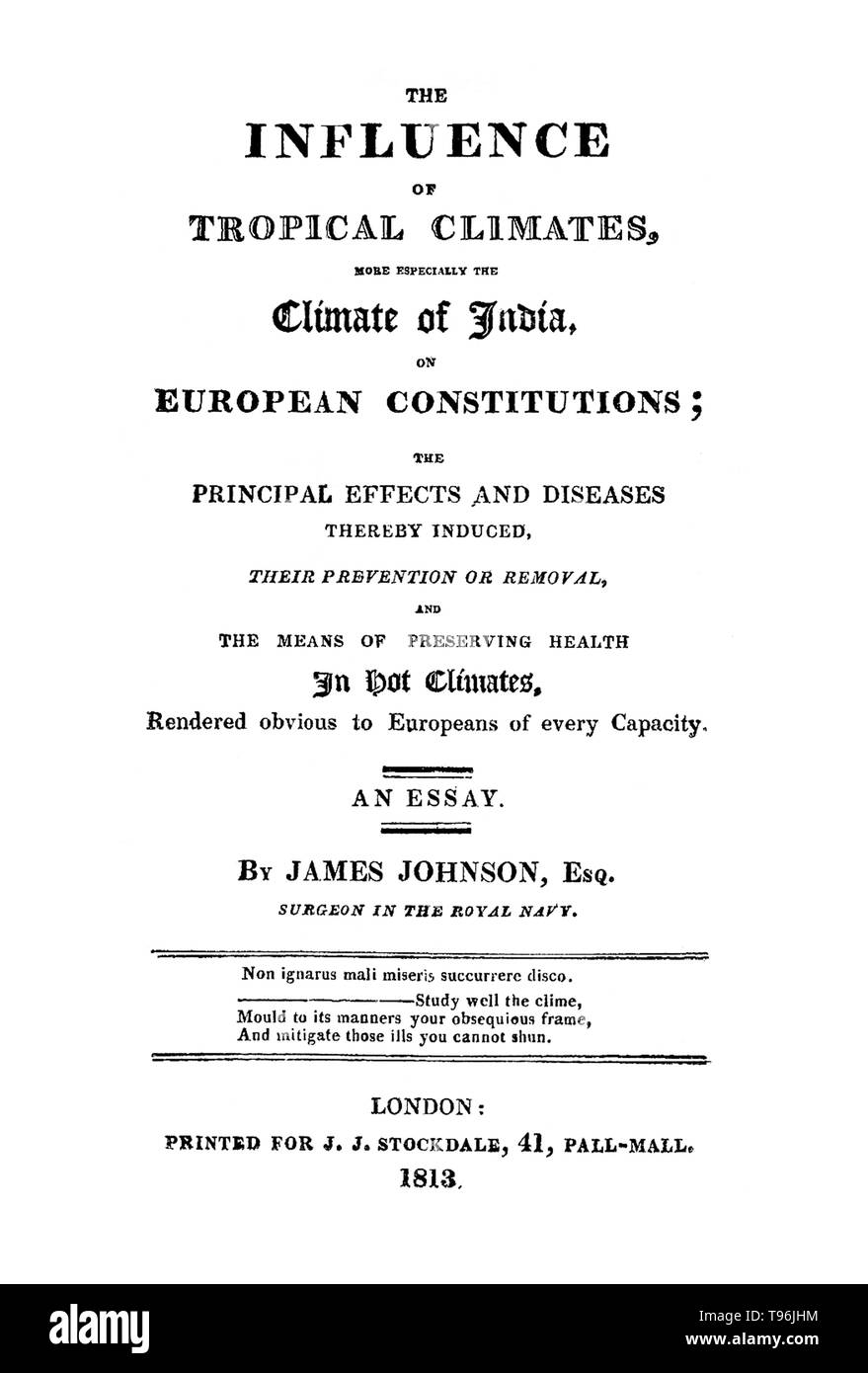 James Johnson (February 1777 - October 10, 1845) was an Irish physician and writer on diseases of tropical climates. Born in Ireland, at the early age of 15 he became an apprentice to a surgeon-apothecary. In 1798 he moved to London and passed the surgeon's examination. He was appointed surgeons's mate on a naval vessel. In 1800 he took part in an expedition to Egypt and, in 1803, sailed for India. Stock Photohttps://www.alamy.com/image-license-details/?v=1https://www.alamy.com/james-johnson-february-1777-october-10-1845-was-an-irish-physician-and-writer-on-diseases-of-tropical-climates-born-in-ireland-at-the-early-age-of-15-he-became-an-apprentice-to-a-surgeon-apothecary-in-1798-he-moved-to-london-and-passed-the-surgeons-examination-he-was-appointed-surgeonss-mate-on-a-naval-vessel-in-1800-he-took-part-in-an-expedition-to-egypt-and-in-1803-sailed-for-india-image246623376.html
James Johnson (February 1777 - October 10, 1845) was an Irish physician and writer on diseases of tropical climates. Born in Ireland, at the early age of 15 he became an apprentice to a surgeon-apothecary. In 1798 he moved to London and passed the surgeon's examination. He was appointed surgeons's mate on a naval vessel. In 1800 he took part in an expedition to Egypt and, in 1803, sailed for India. Stock Photohttps://www.alamy.com/image-license-details/?v=1https://www.alamy.com/james-johnson-february-1777-october-10-1845-was-an-irish-physician-and-writer-on-diseases-of-tropical-climates-born-in-ireland-at-the-early-age-of-15-he-became-an-apprentice-to-a-surgeon-apothecary-in-1798-he-moved-to-london-and-passed-the-surgeons-examination-he-was-appointed-surgeonss-mate-on-a-naval-vessel-in-1800-he-took-part-in-an-expedition-to-egypt-and-in-1803-sailed-for-india-image246623376.htmlRMT96JHM–James Johnson (February 1777 - October 10, 1845) was an Irish physician and writer on diseases of tropical climates. Born in Ireland, at the early age of 15 he became an apprentice to a surgeon-apothecary. In 1798 he moved to London and passed the surgeon's examination. He was appointed surgeons's mate on a naval vessel. In 1800 he took part in an expedition to Egypt and, in 1803, sailed for India.
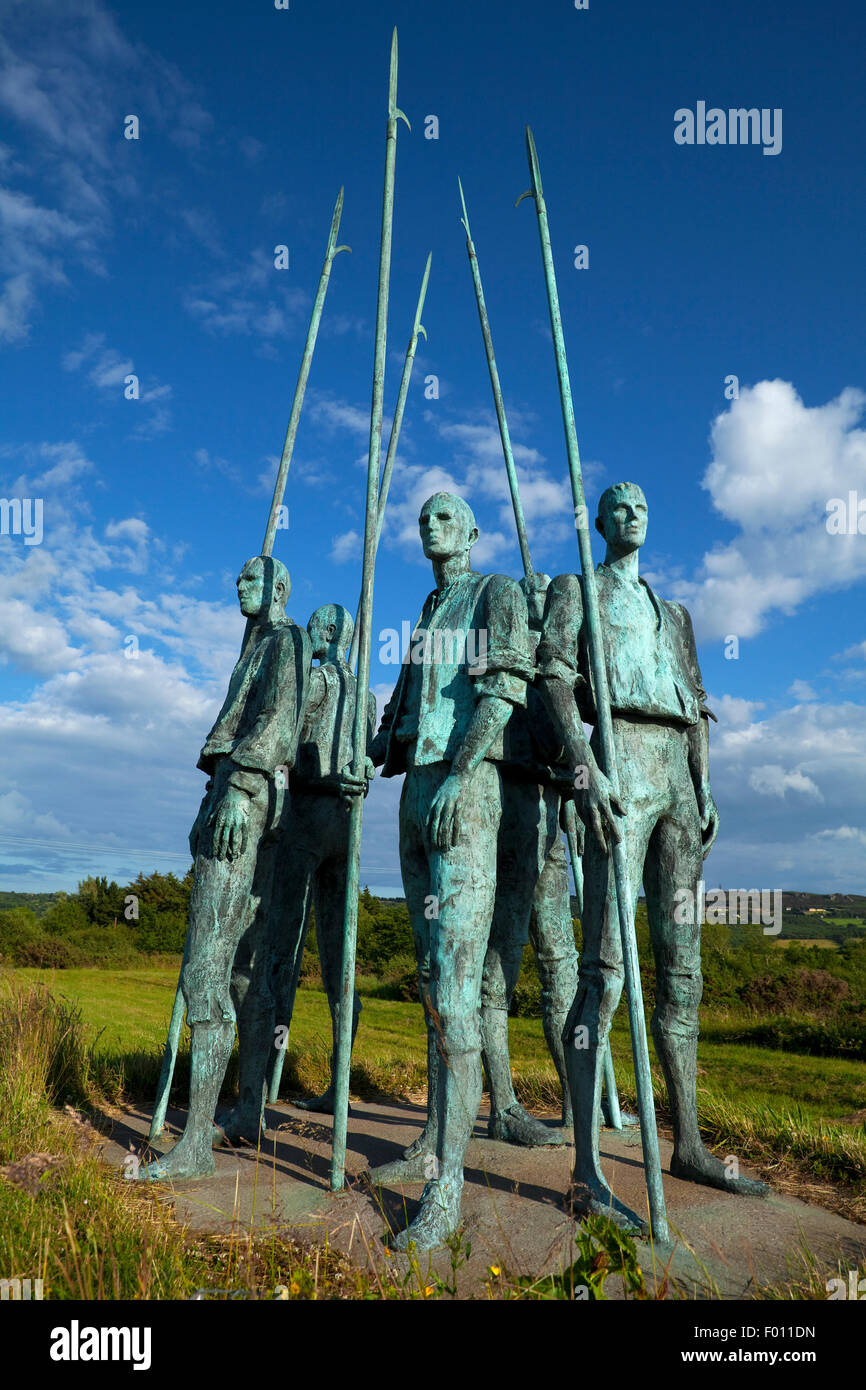 Pikemen Sculpture commemorating the 1798 uprising on the N25 road near Wexford Town, Ireland Stock Photohttps://www.alamy.com/image-license-details/?v=1https://www.alamy.com/stock-photo-pikemen-sculpture-commemorating-the-1798-uprising-on-the-n25-road-86074961.html
Pikemen Sculpture commemorating the 1798 uprising on the N25 road near Wexford Town, Ireland Stock Photohttps://www.alamy.com/image-license-details/?v=1https://www.alamy.com/stock-photo-pikemen-sculpture-commemorating-the-1798-uprising-on-the-n25-road-86074961.htmlRMF011DN–Pikemen Sculpture commemorating the 1798 uprising on the N25 road near Wexford Town, Ireland
 Ireland, Co Wicklow, Glenmalure, memoral stone to local heroes of 1798 rebellion against British rule Stock Photohttps://www.alamy.com/image-license-details/?v=1https://www.alamy.com/stock-photo-ireland-co-wicklow-glenmalure-memoral-stone-to-local-heroes-of-1798-39299577.html
Ireland, Co Wicklow, Glenmalure, memoral stone to local heroes of 1798 rebellion against British rule Stock Photohttps://www.alamy.com/image-license-details/?v=1https://www.alamy.com/stock-photo-ireland-co-wicklow-glenmalure-memoral-stone-to-local-heroes-of-1798-39299577.htmlRMC7X709–Ireland, Co Wicklow, Glenmalure, memoral stone to local heroes of 1798 rebellion against British rule
 Remains of Windmill used in the 1798 Rebellion, Vinegar Hill, Enniscorthy, Co Wexford, Ireland Stock Photohttps://www.alamy.com/image-license-details/?v=1https://www.alamy.com/stock-photo-remains-of-windmill-used-in-the-1798-rebellion-vinegar-hill-enniscorthy-26881868.html
Remains of Windmill used in the 1798 Rebellion, Vinegar Hill, Enniscorthy, Co Wexford, Ireland Stock Photohttps://www.alamy.com/image-license-details/?v=1https://www.alamy.com/stock-photo-remains-of-windmill-used-in-the-1798-rebellion-vinegar-hill-enniscorthy-26881868.htmlRMBFMG2M–Remains of Windmill used in the 1798 Rebellion, Vinegar Hill, Enniscorthy, Co Wexford, Ireland
 Statue of Irish pikeman at Ballinamuck, one of the 'Croppy Boys' allied with French incursion defeated by English in 1798 Rising Stock Photohttps://www.alamy.com/image-license-details/?v=1https://www.alamy.com/stock-image-statue-of-irish-pikeman-at-ballinamuck-one-of-the-croppy-boys-allied-167416876.html
Statue of Irish pikeman at Ballinamuck, one of the 'Croppy Boys' allied with French incursion defeated by English in 1798 Rising Stock Photohttps://www.alamy.com/image-license-details/?v=1https://www.alamy.com/stock-image-statue-of-irish-pikeman-at-ballinamuck-one-of-the-croppy-boys-allied-167416876.htmlRMKMADX4–Statue of Irish pikeman at Ballinamuck, one of the 'Croppy Boys' allied with French incursion defeated by English in 1798 Rising
 Ireland, County Cork, Bantry, Statue of the 1798 Irish revolutionary Wolfe Tone. Stock Photohttps://www.alamy.com/image-license-details/?v=1https://www.alamy.com/ireland-county-cork-bantry-statue-of-the-1798-irish-revolutionary-wolfe-tone-image363797931.html
Ireland, County Cork, Bantry, Statue of the 1798 Irish revolutionary Wolfe Tone. Stock Photohttps://www.alamy.com/image-license-details/?v=1https://www.alamy.com/ireland-county-cork-bantry-statue-of-the-1798-irish-revolutionary-wolfe-tone-image363797931.htmlRM2C3TBY7–Ireland, County Cork, Bantry, Statue of the 1798 Irish revolutionary Wolfe Tone.
 Bronze statue of pikemen of 1798 United Irishmen uprising by sculptor Eamonn O'Doherty. County Wexford, Ireland. Stock Photohttps://www.alamy.com/image-license-details/?v=1https://www.alamy.com/bronze-statue-of-pikemen-of-1798-united-irishmen-uprising-by-sculptor-image60361541.html
Bronze statue of pikemen of 1798 United Irishmen uprising by sculptor Eamonn O'Doherty. County Wexford, Ireland. Stock Photohttps://www.alamy.com/image-license-details/?v=1https://www.alamy.com/bronze-statue-of-pikemen-of-1798-united-irishmen-uprising-by-sculptor-image60361541.htmlRMDE5KN9–Bronze statue of pikemen of 1798 United Irishmen uprising by sculptor Eamonn O'Doherty. County Wexford, Ireland.
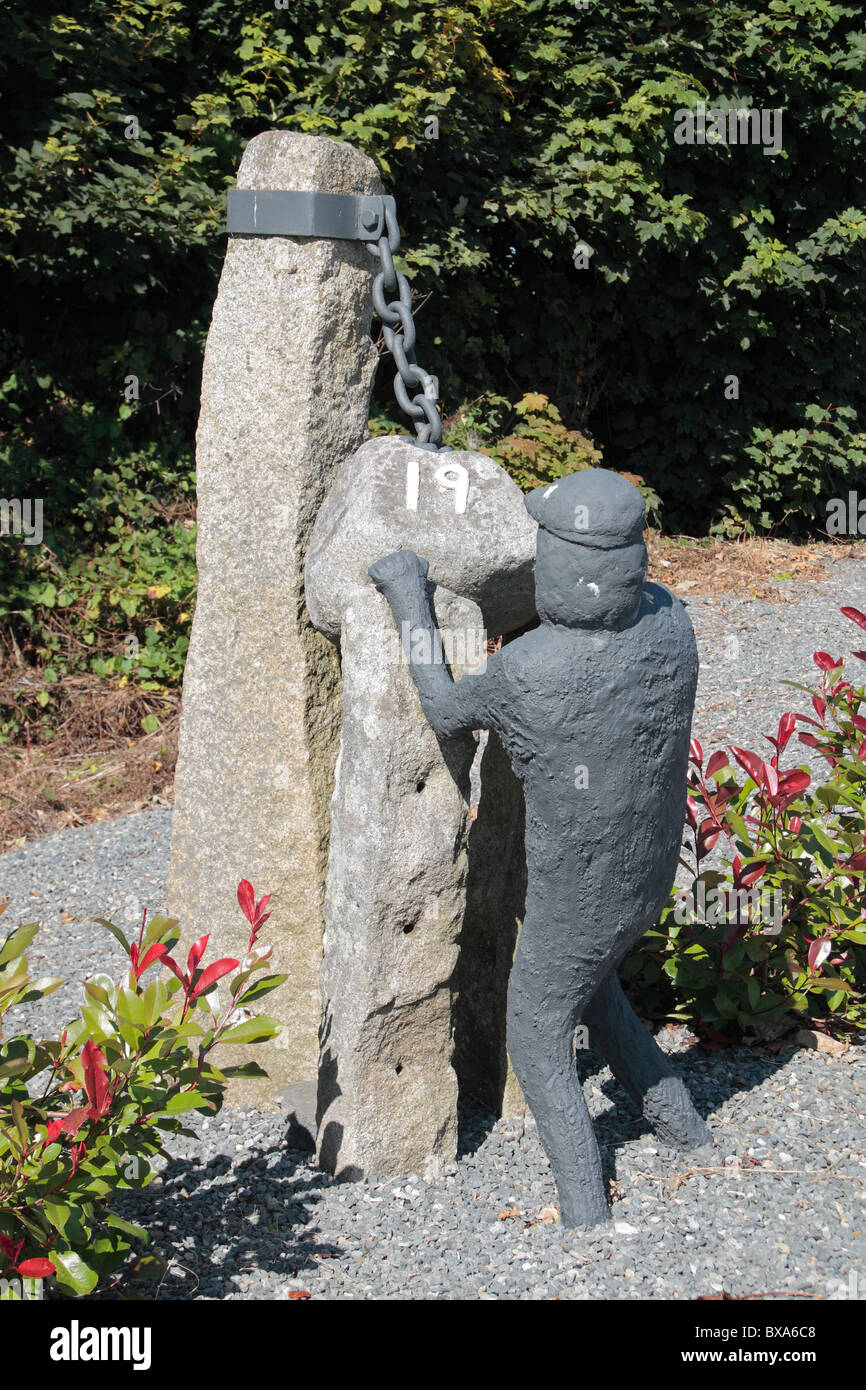 Unusual memorial to the 1798 Irish Rebellion (erected in 1998), Carrickbyrne, County Wexford, Ireland (Eire). Stock Photohttps://www.alamy.com/image-license-details/?v=1https://www.alamy.com/stock-photo-unusual-memorial-to-the-1798-irish-rebellion-erected-in-1998-carrickbyrne-33415992.html
Unusual memorial to the 1798 Irish Rebellion (erected in 1998), Carrickbyrne, County Wexford, Ireland (Eire). Stock Photohttps://www.alamy.com/image-license-details/?v=1https://www.alamy.com/stock-photo-unusual-memorial-to-the-1798-irish-rebellion-erected-in-1998-carrickbyrne-33415992.htmlRMBXA6C8–Unusual memorial to the 1798 Irish Rebellion (erected in 1998), Carrickbyrne, County Wexford, Ireland (Eire).
 EVENTS/IRELAND 1798 Stock Photohttps://www.alamy.com/image-license-details/?v=1https://www.alamy.com/eventsireland-1798-image222904961.html
EVENTS/IRELAND 1798 Stock Photohttps://www.alamy.com/image-license-details/?v=1https://www.alamy.com/eventsireland-1798-image222904961.htmlRMPXJ5FD–EVENTS/IRELAND 1798
 Kilcummin, Co Mayo, Ireland; Site Of The French Landing In 1798 Stock Photohttps://www.alamy.com/image-license-details/?v=1https://www.alamy.com/stock-photo-kilcummin-co-mayo-ireland-site-of-the-french-landing-in-1798-85703361.html
Kilcummin, Co Mayo, Ireland; Site Of The French Landing In 1798 Stock Photohttps://www.alamy.com/image-license-details/?v=1https://www.alamy.com/stock-photo-kilcummin-co-mayo-ireland-site-of-the-french-landing-in-1798-85703361.htmlRMEYC3E9–Kilcummin, Co Mayo, Ireland; Site Of The French Landing In 1798
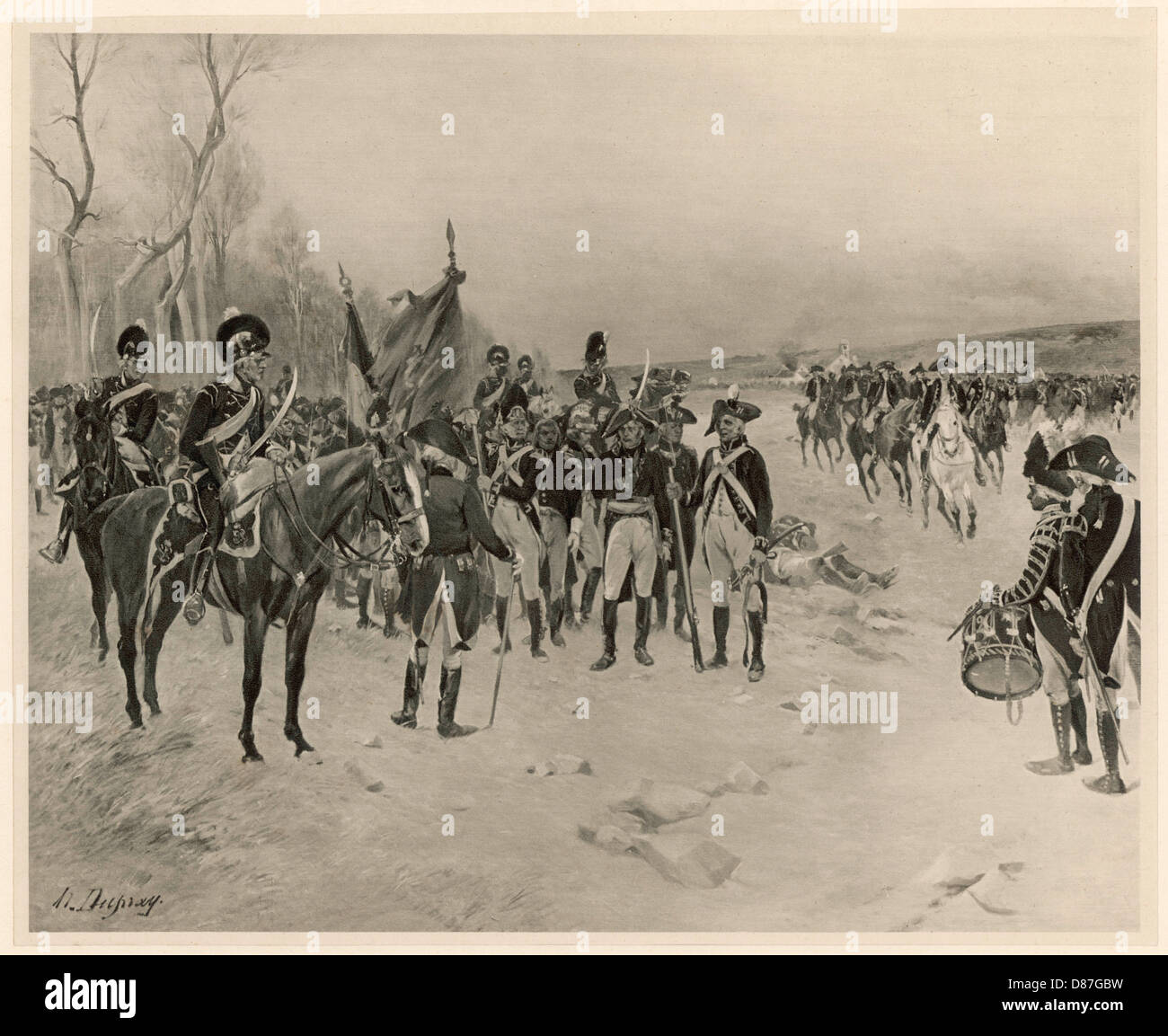 EVENTS/IRELAND 1798 Stock Photohttps://www.alamy.com/image-license-details/?v=1https://www.alamy.com/stock-photo-eventsireland-1798-56714893.html
EVENTS/IRELAND 1798 Stock Photohttps://www.alamy.com/image-license-details/?v=1https://www.alamy.com/stock-photo-eventsireland-1798-56714893.htmlRMD87GBW–EVENTS/IRELAND 1798
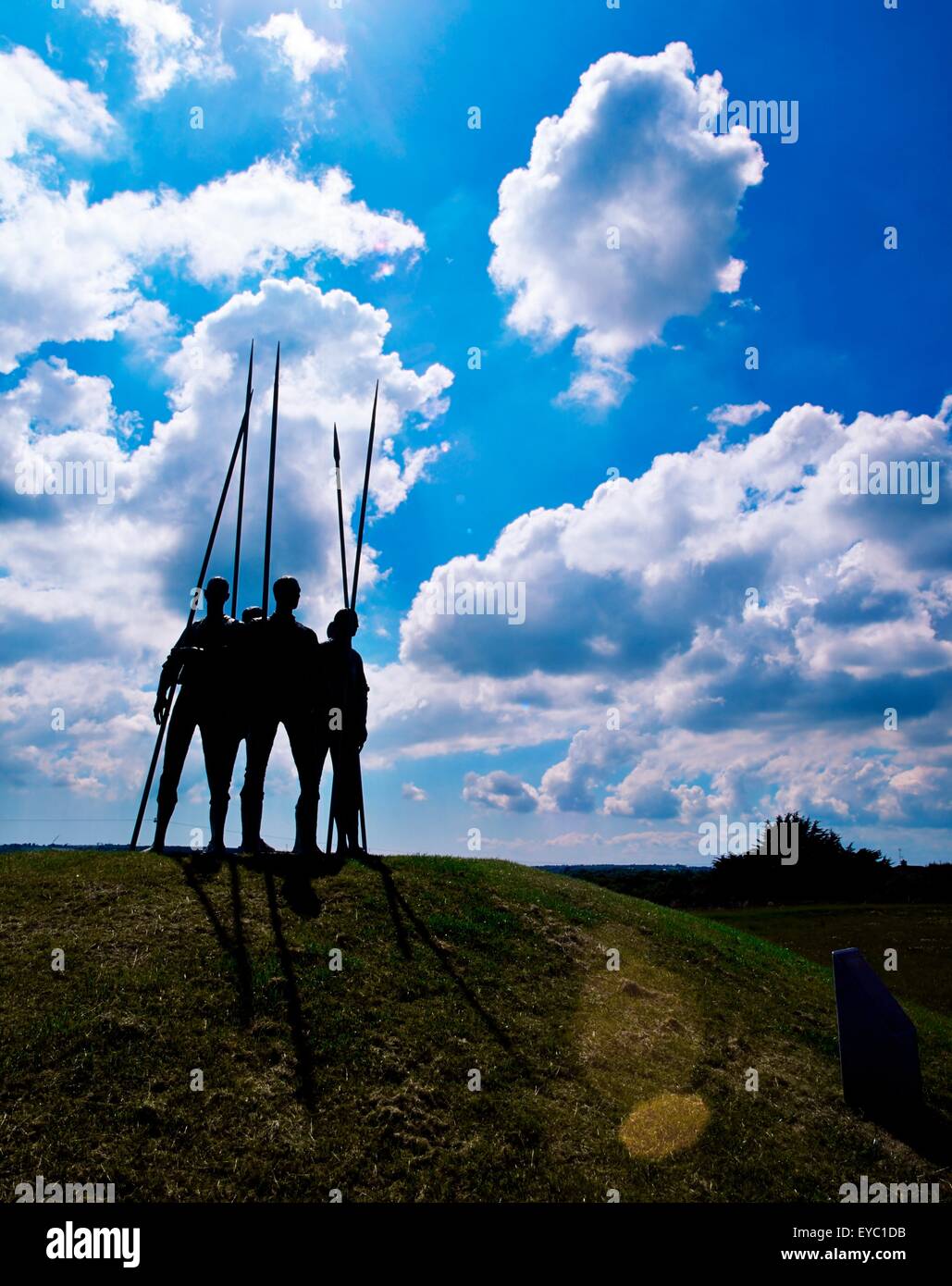 Enniscorthy, Co Wexford, Ireland; Statues Commemorating The Irish Rebellion Of 1798 Stock Photohttps://www.alamy.com/image-license-details/?v=1https://www.alamy.com/stock-photo-enniscorthy-co-wexford-ireland-statues-commemorating-the-irish-rebellion-85701767.html
Enniscorthy, Co Wexford, Ireland; Statues Commemorating The Irish Rebellion Of 1798 Stock Photohttps://www.alamy.com/image-license-details/?v=1https://www.alamy.com/stock-photo-enniscorthy-co-wexford-ireland-statues-commemorating-the-irish-rebellion-85701767.htmlRMEYC1DB–Enniscorthy, Co Wexford, Ireland; Statues Commemorating The Irish Rebellion Of 1798
 Attack on the Wexford Rebels, Ireland, 26 May 1798, in response to an uprising at Oulart Hill led by Father John Murphy (visible on the far right). Stock Photohttps://www.alamy.com/image-license-details/?v=1https://www.alamy.com/attack-on-the-wexford-rebels-ireland-26-may-1798-in-response-to-an-uprising-at-oulart-hill-led-by-father-john-murphy-visible-on-the-far-right-image504870722.html
Attack on the Wexford Rebels, Ireland, 26 May 1798, in response to an uprising at Oulart Hill led by Father John Murphy (visible on the far right). Stock Photohttps://www.alamy.com/image-license-details/?v=1https://www.alamy.com/attack-on-the-wexford-rebels-ireland-26-may-1798-in-response-to-an-uprising-at-oulart-hill-led-by-father-john-murphy-visible-on-the-far-right-image504870722.htmlRM2M9ARN6–Attack on the Wexford Rebels, Ireland, 26 May 1798, in response to an uprising at Oulart Hill led by Father John Murphy (visible on the far right).
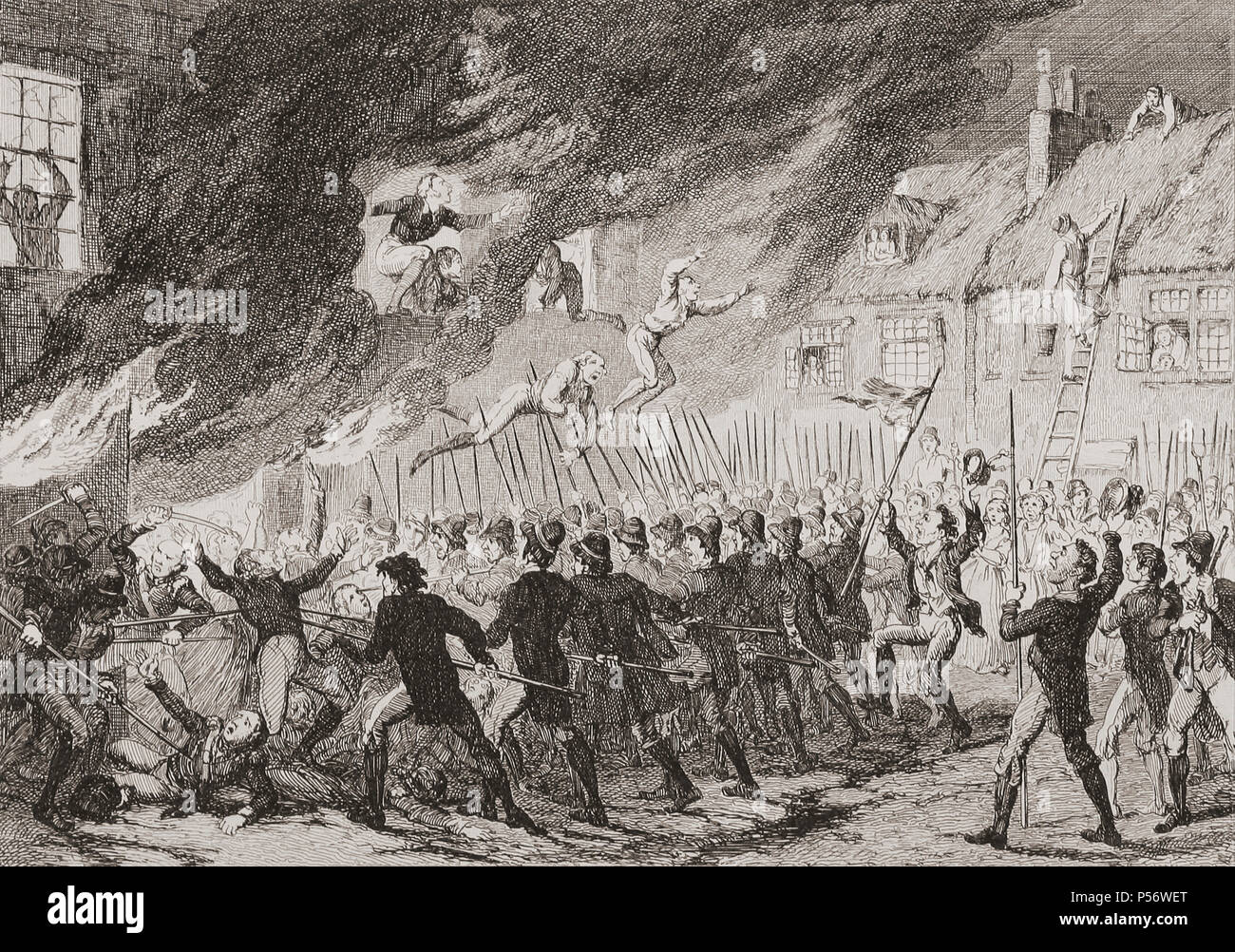 “Surprise of the barrack of Prosperous”. Illustration by George Cruikshank. The British barracks at Prosperous, County Kildare, was attacked by United Irishmen during the 1798 rebellion. From History of the Irish Rebellion in 1798; with Memoirs of the Union, and Emmett’s Insurrection in 1803 by W.H. Maxwell. Published in London 1854. Stock Photohttps://www.alamy.com/image-license-details/?v=1https://www.alamy.com/surprise-of-the-barrack-of-prosperous-illustration-by-george-cruikshank-the-british-barracks-at-prosperous-county-kildare-was-attacked-by-united-irishmen-during-the-1798-rebellion-from-history-of-the-irish-rebellion-in-1798-with-memoirs-of-the-union-and-emmetts-insurrection-in-1803-by-wh-maxwell-published-in-london-1854-image209749424.html
“Surprise of the barrack of Prosperous”. Illustration by George Cruikshank. The British barracks at Prosperous, County Kildare, was attacked by United Irishmen during the 1798 rebellion. From History of the Irish Rebellion in 1798; with Memoirs of the Union, and Emmett’s Insurrection in 1803 by W.H. Maxwell. Published in London 1854. Stock Photohttps://www.alamy.com/image-license-details/?v=1https://www.alamy.com/surprise-of-the-barrack-of-prosperous-illustration-by-george-cruikshank-the-british-barracks-at-prosperous-county-kildare-was-attacked-by-united-irishmen-during-the-1798-rebellion-from-history-of-the-irish-rebellion-in-1798-with-memoirs-of-the-union-and-emmetts-insurrection-in-1803-by-wh-maxwell-published-in-london-1854-image209749424.htmlRMP56WET–“Surprise of the barrack of Prosperous”. Illustration by George Cruikshank. The British barracks at Prosperous, County Kildare, was attacked by United Irishmen during the 1798 rebellion. From History of the Irish Rebellion in 1798; with Memoirs of the Union, and Emmett’s Insurrection in 1803 by W.H. Maxwell. Published in London 1854.
 The Pikeman, monument of 1798 rising in the Bullring, town center of Wexford, Ireland Stock Photohttps://www.alamy.com/image-license-details/?v=1https://www.alamy.com/the-pikeman-monument-of-1798-rising-in-the-bullring-town-center-of-wexford-ireland-image574258055.html
The Pikeman, monument of 1798 rising in the Bullring, town center of Wexford, Ireland Stock Photohttps://www.alamy.com/image-license-details/?v=1https://www.alamy.com/the-pikeman-monument-of-1798-rising-in-the-bullring-town-center-of-wexford-ireland-image574258055.htmlRF2TA7M07–The Pikeman, monument of 1798 rising in the Bullring, town center of Wexford, Ireland
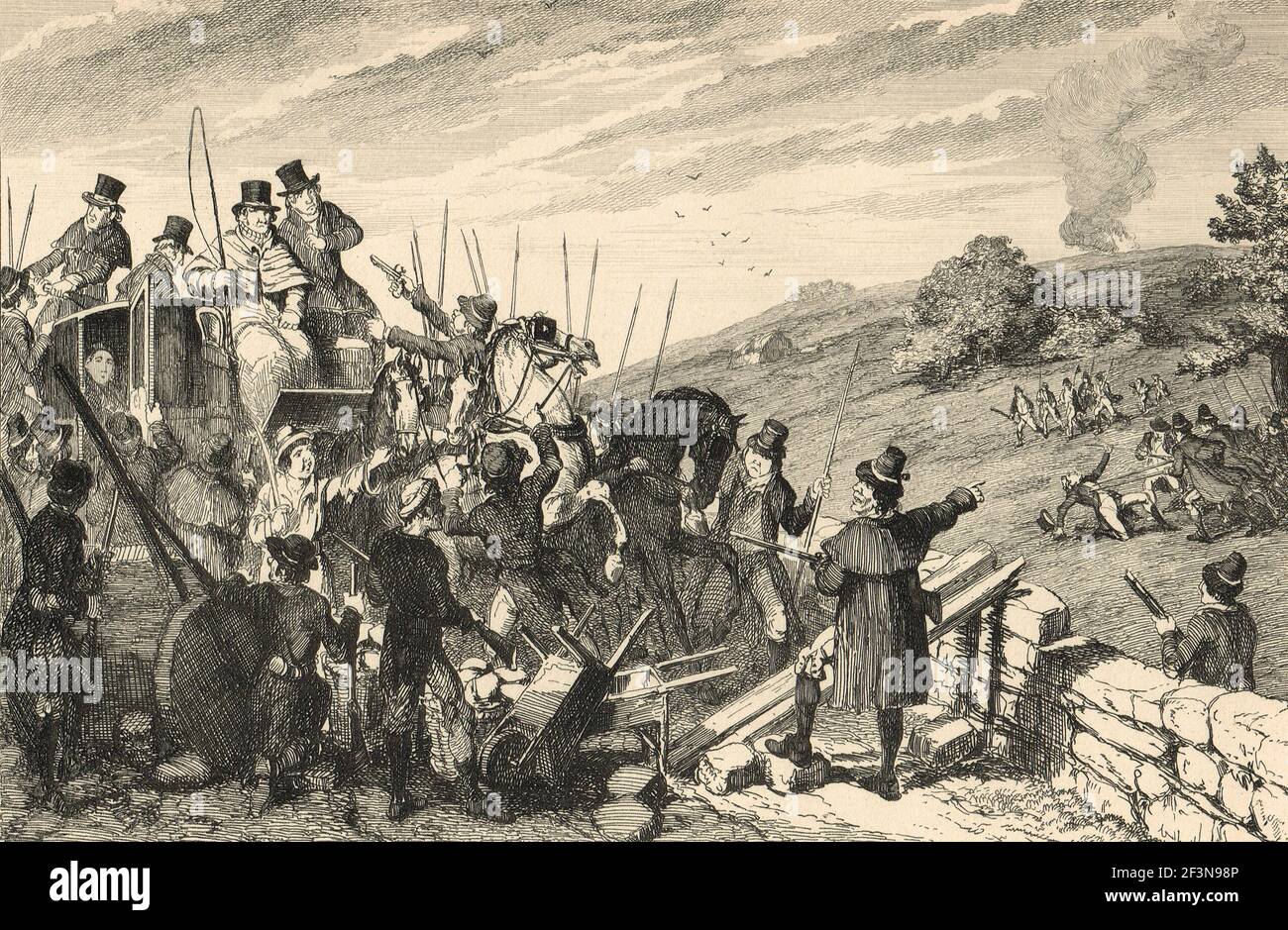 The stoppage of the Munster mail and the murder of Lt William Gifford, 24 May 1798, during the Irish Rebellion of 1798 Stock Photohttps://www.alamy.com/image-license-details/?v=1https://www.alamy.com/the-stoppage-of-the-munster-mail-and-the-murder-of-lt-william-gifford-24-may-1798-during-the-irish-rebellion-of-1798-image415361094.html
The stoppage of the Munster mail and the murder of Lt William Gifford, 24 May 1798, during the Irish Rebellion of 1798 Stock Photohttps://www.alamy.com/image-license-details/?v=1https://www.alamy.com/the-stoppage-of-the-munster-mail-and-the-murder-of-lt-william-gifford-24-may-1798-during-the-irish-rebellion-of-1798-image415361094.htmlRM2F3N98P–The stoppage of the Munster mail and the murder of Lt William Gifford, 24 May 1798, during the Irish Rebellion of 1798
 A Scene during the 1798 Uprising 1800 Stock Photohttps://www.alamy.com/image-license-details/?v=1https://www.alamy.com/a-scene-during-the-1798-uprising-1800-image184257619.html
A Scene during the 1798 Uprising 1800 Stock Photohttps://www.alamy.com/image-license-details/?v=1https://www.alamy.com/a-scene-during-the-1798-uprising-1800-image184257619.htmlRMMKNJD7–A Scene during the 1798 Uprising 1800
 Ballinamuck, Co. Longford, Ireland. Site of the Croppies Graves from 1798 Battle of Ballinamuck. United Irishmen 1798 rebellion Stock Photohttps://www.alamy.com/image-license-details/?v=1https://www.alamy.com/stock-image-ballinamuck-co-longford-ireland-site-of-the-croppies-graves-from-1798-167416945.html
Ballinamuck, Co. Longford, Ireland. Site of the Croppies Graves from 1798 Battle of Ballinamuck. United Irishmen 1798 rebellion Stock Photohttps://www.alamy.com/image-license-details/?v=1https://www.alamy.com/stock-image-ballinamuck-co-longford-ireland-site-of-the-croppies-graves-from-1798-167416945.htmlRMKMAE0H–Ballinamuck, Co. Longford, Ireland. Site of the Croppies Graves from 1798 Battle of Ballinamuck. United Irishmen 1798 rebellion
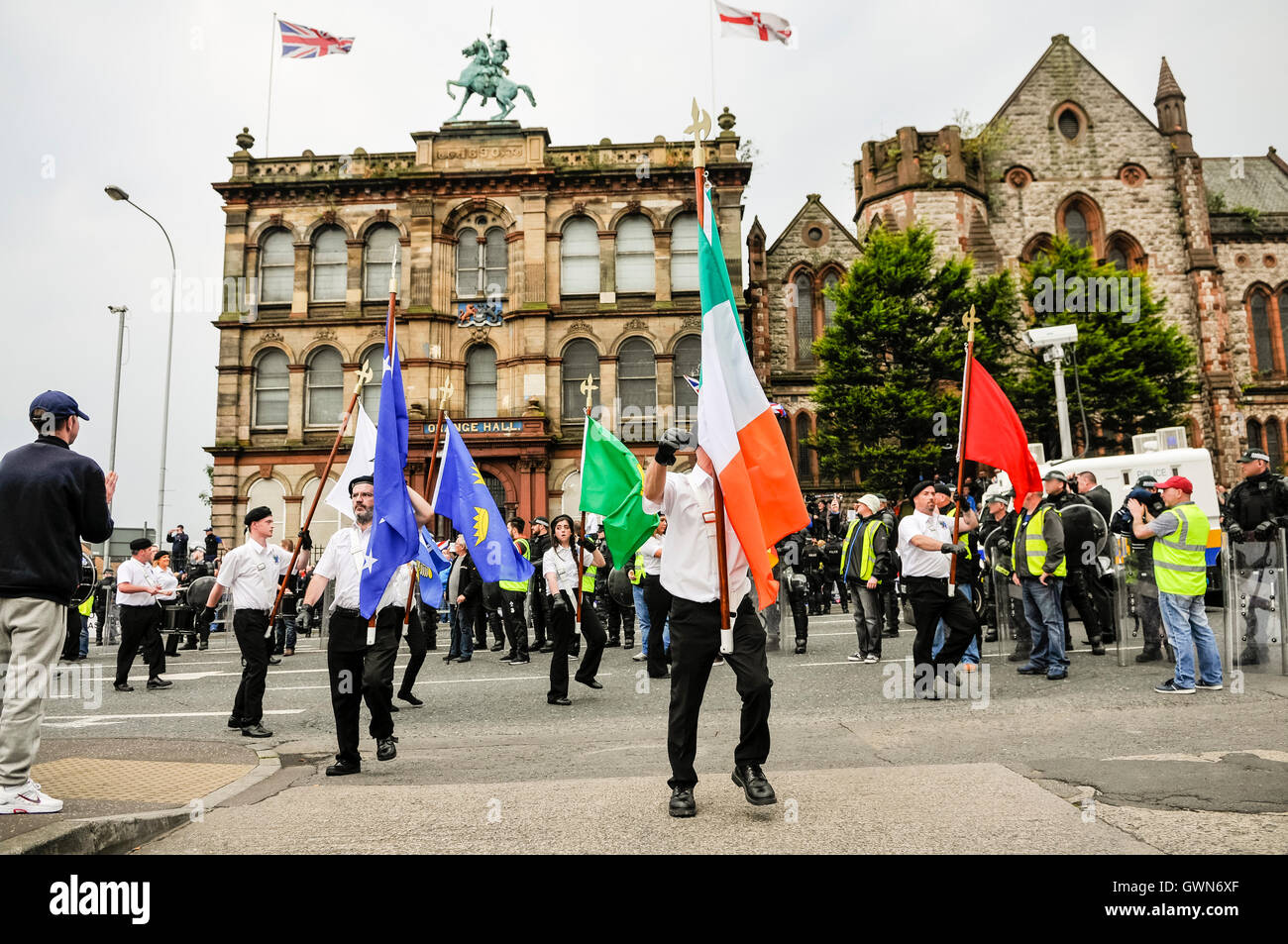 Belfast, Northern Ireland. 23 Aug 2015 - Republican Network for Unity parade past Belfast's main Orange hall during a commemoration for United Irishman Henry Joy McCracken Stock Photohttps://www.alamy.com/image-license-details/?v=1https://www.alamy.com/stock-photo-belfast-northern-ireland-23-aug-2015-republican-network-for-unity-119095047.html
Belfast, Northern Ireland. 23 Aug 2015 - Republican Network for Unity parade past Belfast's main Orange hall during a commemoration for United Irishman Henry Joy McCracken Stock Photohttps://www.alamy.com/image-license-details/?v=1https://www.alamy.com/stock-photo-belfast-northern-ireland-23-aug-2015-republican-network-for-unity-119095047.htmlRMGWN6XF–Belfast, Northern Ireland. 23 Aug 2015 - Republican Network for Unity parade past Belfast's main Orange hall during a commemoration for United Irishman Henry Joy McCracken
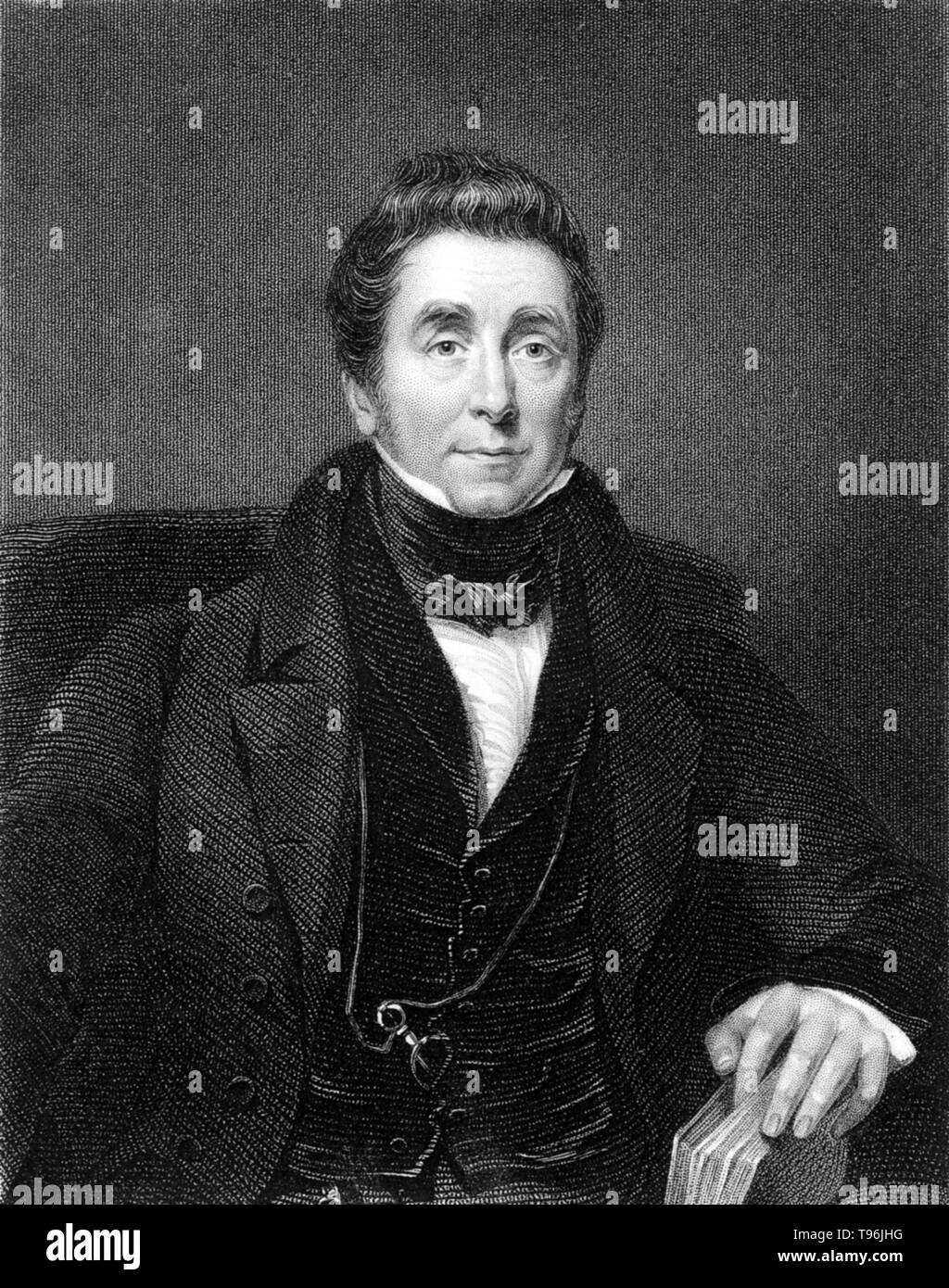 James Johnson (February 1777 - October 10, 1845) was an Irish physician and writer on diseases of tropical climates. Born in Ireland, at the early age of 15 he became an apprentice to a surgeon-apothecary. In 1798 he moved to London and passed the surgeon's examination. He was appointed surgeons's mate on a naval vessel. In 1800 he took part in an expedition to Egypt and, in 1803, sailed for India. Stock Photohttps://www.alamy.com/image-license-details/?v=1https://www.alamy.com/james-johnson-february-1777-october-10-1845-was-an-irish-physician-and-writer-on-diseases-of-tropical-climates-born-in-ireland-at-the-early-age-of-15-he-became-an-apprentice-to-a-surgeon-apothecary-in-1798-he-moved-to-london-and-passed-the-surgeons-examination-he-was-appointed-surgeonss-mate-on-a-naval-vessel-in-1800-he-took-part-in-an-expedition-to-egypt-and-in-1803-sailed-for-india-image246623372.html
James Johnson (February 1777 - October 10, 1845) was an Irish physician and writer on diseases of tropical climates. Born in Ireland, at the early age of 15 he became an apprentice to a surgeon-apothecary. In 1798 he moved to London and passed the surgeon's examination. He was appointed surgeons's mate on a naval vessel. In 1800 he took part in an expedition to Egypt and, in 1803, sailed for India. Stock Photohttps://www.alamy.com/image-license-details/?v=1https://www.alamy.com/james-johnson-february-1777-october-10-1845-was-an-irish-physician-and-writer-on-diseases-of-tropical-climates-born-in-ireland-at-the-early-age-of-15-he-became-an-apprentice-to-a-surgeon-apothecary-in-1798-he-moved-to-london-and-passed-the-surgeons-examination-he-was-appointed-surgeonss-mate-on-a-naval-vessel-in-1800-he-took-part-in-an-expedition-to-egypt-and-in-1803-sailed-for-india-image246623372.htmlRMT96JHG–James Johnson (February 1777 - October 10, 1845) was an Irish physician and writer on diseases of tropical climates. Born in Ireland, at the early age of 15 he became an apprentice to a surgeon-apothecary. In 1798 he moved to London and passed the surgeon's examination. He was appointed surgeons's mate on a naval vessel. In 1800 he took part in an expedition to Egypt and, in 1803, sailed for India.
 PITCHCAPPING A form of torture used by the British military on Irish rebels during the 1798 rebellion. From Walter Cox's Irish Magazine in February 1810 showing a Captain Swyane preparing to light the pitch cap Stock Photohttps://www.alamy.com/image-license-details/?v=1https://www.alamy.com/stock-photo-pitchcapping-a-form-of-torture-used-by-the-british-military-on-irish-80481802.html
PITCHCAPPING A form of torture used by the British military on Irish rebels during the 1798 rebellion. From Walter Cox's Irish Magazine in February 1810 showing a Captain Swyane preparing to light the pitch cap Stock Photohttps://www.alamy.com/image-license-details/?v=1https://www.alamy.com/stock-photo-pitchcapping-a-form-of-torture-used-by-the-british-military-on-irish-80481802.htmlRMEJX7A2–PITCHCAPPING A form of torture used by the British military on Irish rebels during the 1798 rebellion. From Walter Cox's Irish Magazine in February 1810 showing a Captain Swyane preparing to light the pitch cap
 Monument to the 1798 rebellion in Wexford town Stock Photohttps://www.alamy.com/image-license-details/?v=1https://www.alamy.com/stock-photo-monument-to-the-1798-rebellion-in-wexford-town-123411004.html
Monument to the 1798 rebellion in Wexford town Stock Photohttps://www.alamy.com/image-license-details/?v=1https://www.alamy.com/stock-photo-monument-to-the-1798-rebellion-in-wexford-town-123411004.htmlRMH4NRYT–Monument to the 1798 rebellion in Wexford town
 Remains of Windmill used in the 1798 Rebellion, Vinegar Hill, Enniscorthy, Co Wexford, Ireland Stock Photohttps://www.alamy.com/image-license-details/?v=1https://www.alamy.com/stock-photo-remains-of-windmill-used-in-the-1798-rebellion-vinegar-hill-enniscorthy-26881976.html
Remains of Windmill used in the 1798 Rebellion, Vinegar Hill, Enniscorthy, Co Wexford, Ireland Stock Photohttps://www.alamy.com/image-license-details/?v=1https://www.alamy.com/stock-photo-remains-of-windmill-used-in-the-1798-rebellion-vinegar-hill-enniscorthy-26881976.htmlRMBFMG6G–Remains of Windmill used in the 1798 Rebellion, Vinegar Hill, Enniscorthy, Co Wexford, Ireland
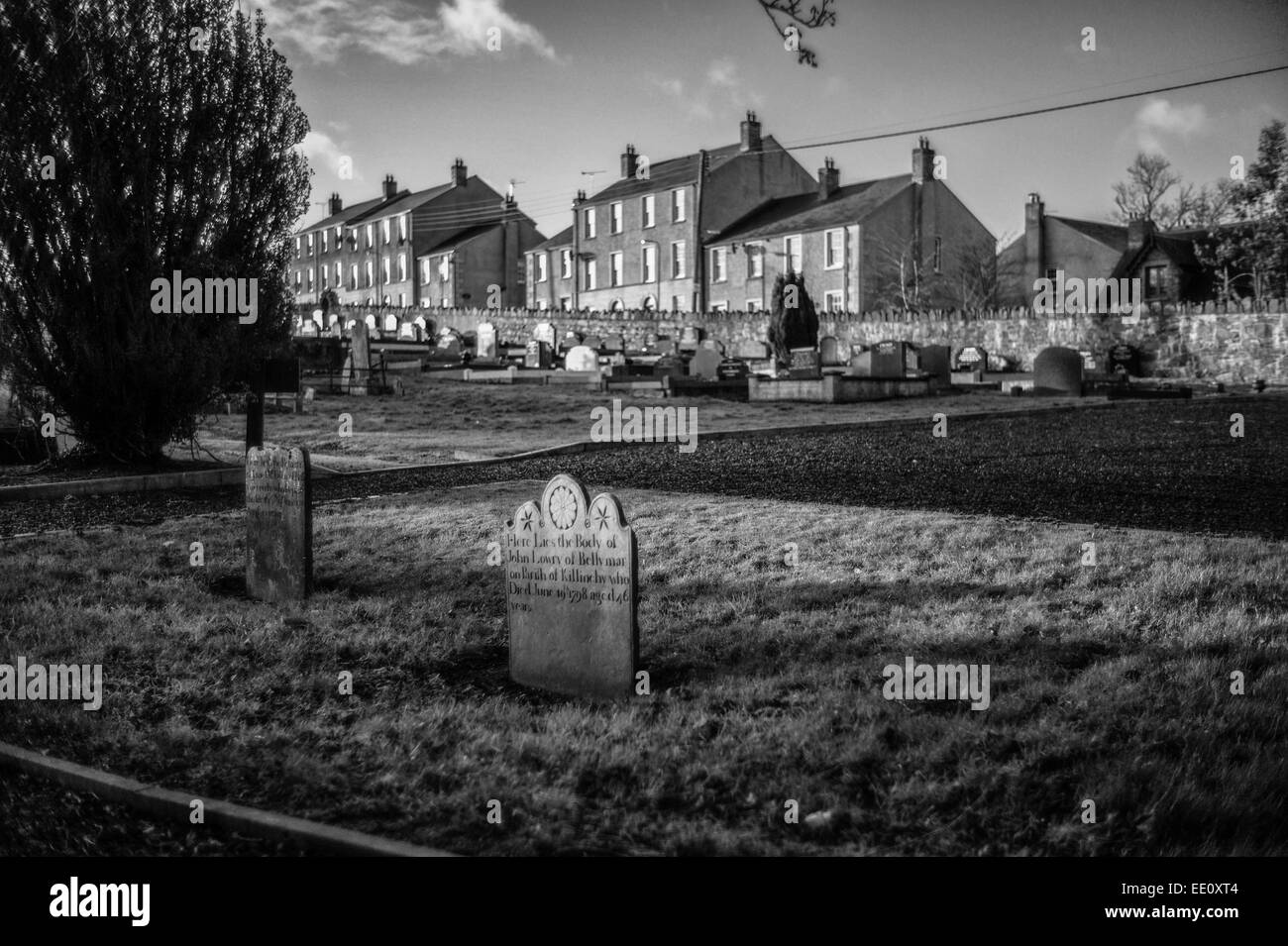 Graveyard at rear of First Saintfield Presbyterian Church in Co Down, Northern Ireland. The two headstones date from 1798. Stock Photohttps://www.alamy.com/image-license-details/?v=1https://www.alamy.com/stock-photo-graveyard-at-rear-of-first-saintfield-presbyterian-church-in-co-down-77467716.html
Graveyard at rear of First Saintfield Presbyterian Church in Co Down, Northern Ireland. The two headstones date from 1798. Stock Photohttps://www.alamy.com/image-license-details/?v=1https://www.alamy.com/stock-photo-graveyard-at-rear-of-first-saintfield-presbyterian-church-in-co-down-77467716.htmlRMEE0XT4–Graveyard at rear of First Saintfield Presbyterian Church in Co Down, Northern Ireland. The two headstones date from 1798.
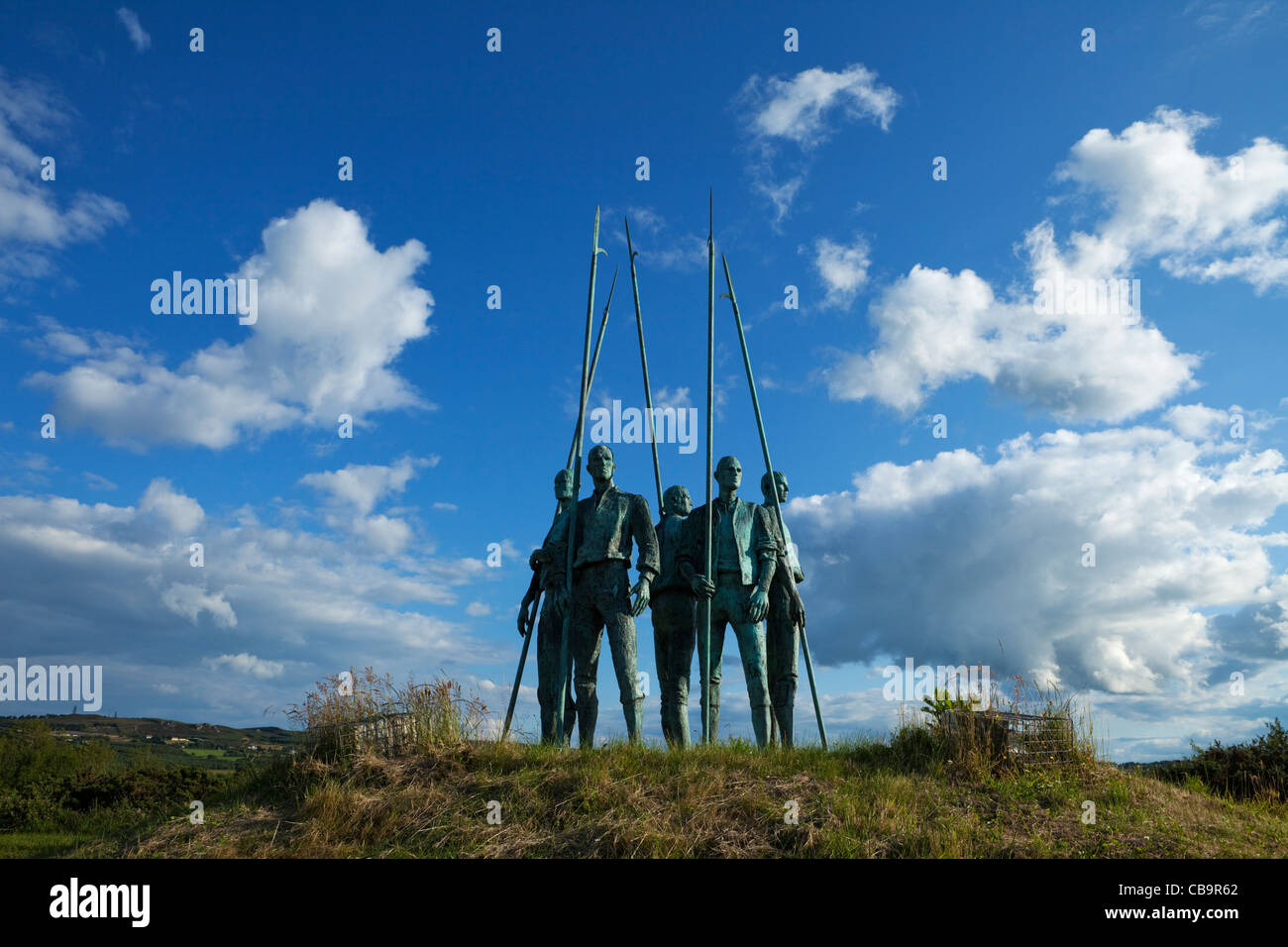 Pikemen of 1798, sculpture by Eamon O Doherty to commemorate battle victory of United Irishmen against crown forces, County Wexford, Ireland Stock Photohttps://www.alamy.com/image-license-details/?v=1https://www.alamy.com/stock-photo-pikemen-of-1798-sculpture-by-eamon-o-doherty-to-commemorate-battle-41397722.html
Pikemen of 1798, sculpture by Eamon O Doherty to commemorate battle victory of United Irishmen against crown forces, County Wexford, Ireland Stock Photohttps://www.alamy.com/image-license-details/?v=1https://www.alamy.com/stock-photo-pikemen-of-1798-sculpture-by-eamon-o-doherty-to-commemorate-battle-41397722.htmlRMCB9R62–Pikemen of 1798, sculpture by Eamon O Doherty to commemorate battle victory of United Irishmen against crown forces, County Wexford, Ireland
 Ireland, County Cork, Bantry, Statue of the 1798 Irish revolutionary Wolfe Tone. Stock Photohttps://www.alamy.com/image-license-details/?v=1https://www.alamy.com/ireland-county-cork-bantry-statue-of-the-1798-irish-revolutionary-wolfe-tone-image363797928.html
Ireland, County Cork, Bantry, Statue of the 1798 Irish revolutionary Wolfe Tone. Stock Photohttps://www.alamy.com/image-license-details/?v=1https://www.alamy.com/ireland-county-cork-bantry-statue-of-the-1798-irish-revolutionary-wolfe-tone-image363797928.htmlRM2C3TBY4–Ireland, County Cork, Bantry, Statue of the 1798 Irish revolutionary Wolfe Tone.
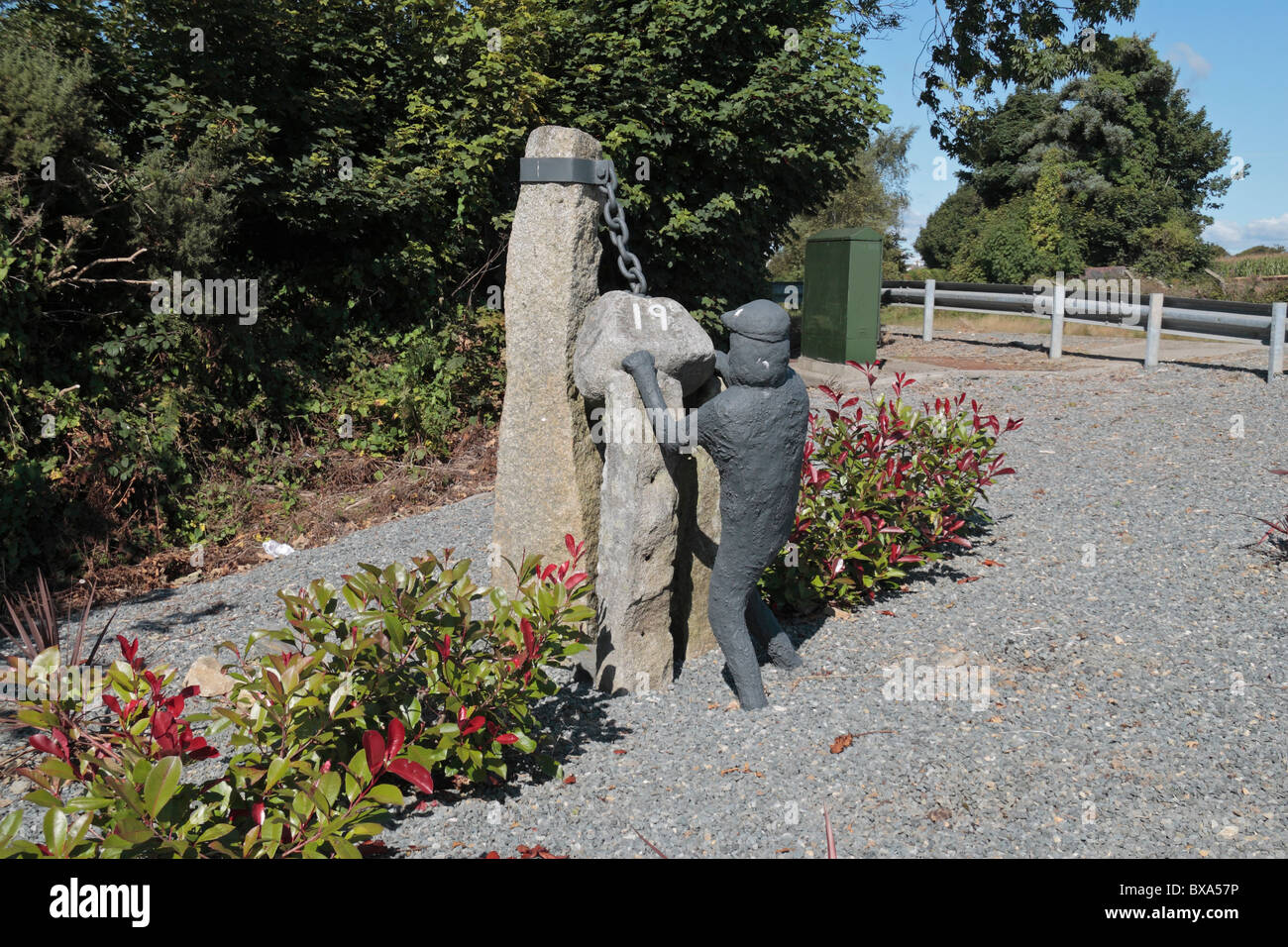 Unusual memorial to the 1798 Irish Rebellion (erected in 1998), Carrickbyrne, County Wexford, Ireland (Eire). Stock Photohttps://www.alamy.com/image-license-details/?v=1https://www.alamy.com/stock-photo-unusual-memorial-to-the-1798-irish-rebellion-erected-in-1998-carrickbyrne-33415082.html
Unusual memorial to the 1798 Irish Rebellion (erected in 1998), Carrickbyrne, County Wexford, Ireland (Eire). Stock Photohttps://www.alamy.com/image-license-details/?v=1https://www.alamy.com/stock-photo-unusual-memorial-to-the-1798-irish-rebellion-erected-in-1998-carrickbyrne-33415082.htmlRMBXA57P–Unusual memorial to the 1798 Irish Rebellion (erected in 1998), Carrickbyrne, County Wexford, Ireland (Eire).
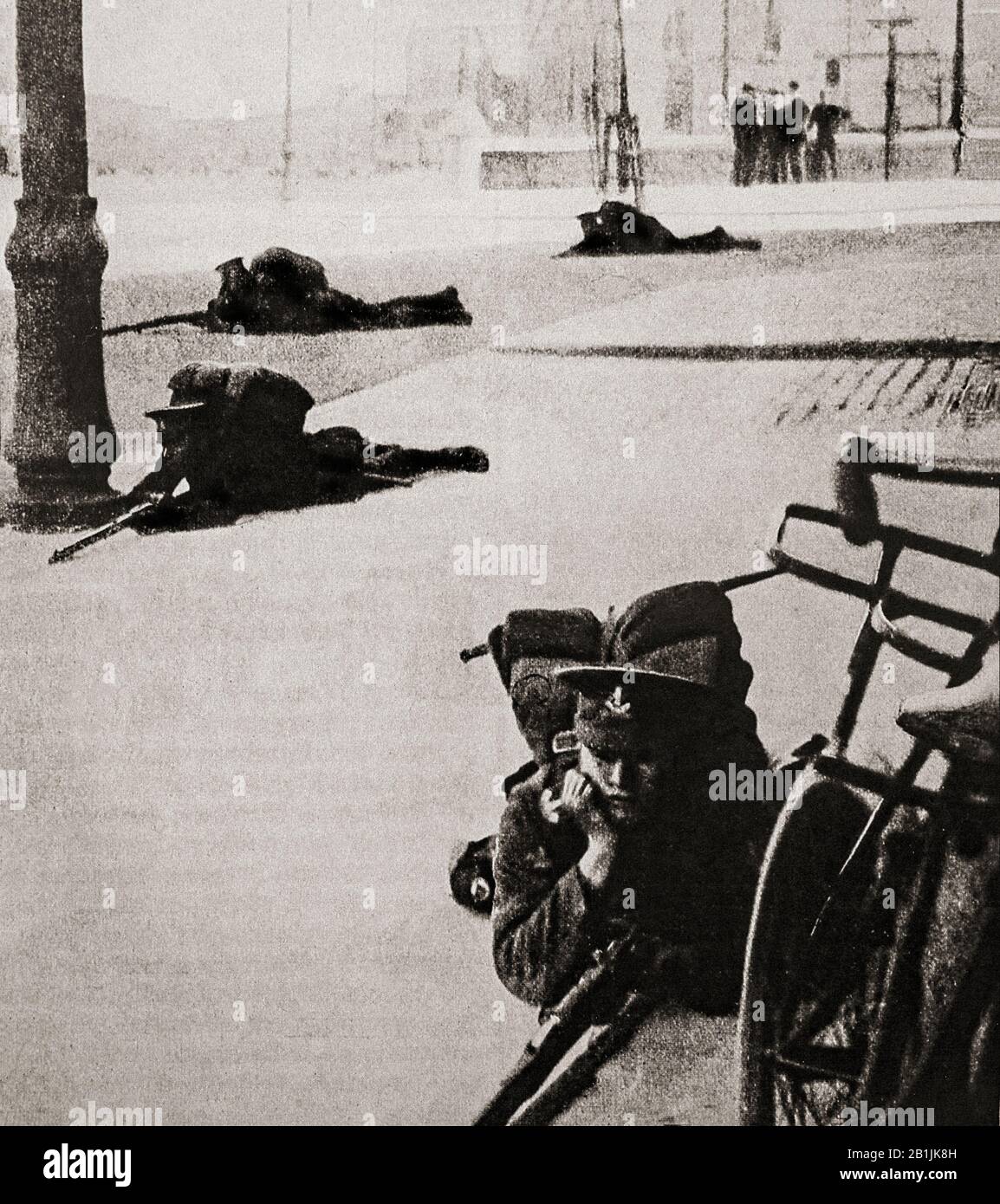 British soldiers following the Easter Rising, launched by Irish republicans to end British rule in Ireland and establish an independent Irish Republic while the United Kingdom was fighting the First World War. It was the most significant uprising in Ireland since the rebellion of 1798 and the first armed action of the Irish revolutionary period. Sixteen of the Rising's leaders were executed in May 1916, but the insurrection, the nature of the executions, and subsequent political developments ultimately contributed to an increase in popular support for Irish independence. Stock Photohttps://www.alamy.com/image-license-details/?v=1https://www.alamy.com/british-soldiers-following-the-easter-rising-launched-by-irish-republicans-to-end-british-rule-in-ireland-and-establish-an-independent-irish-republic-while-the-united-kingdom-was-fighting-the-first-world-war-it-was-the-most-significant-uprising-in-ireland-since-the-rebellion-of-1798-and-the-first-armed-action-of-the-irish-revolutionary-period-sixteen-of-the-risings-leaders-were-executed-in-may-1916-but-the-insurrection-the-nature-of-the-executions-and-subsequent-political-developments-ultimately-contributed-to-an-increase-in-popular-support-for-irish-independence-image345232289.html
British soldiers following the Easter Rising, launched by Irish republicans to end British rule in Ireland and establish an independent Irish Republic while the United Kingdom was fighting the First World War. It was the most significant uprising in Ireland since the rebellion of 1798 and the first armed action of the Irish revolutionary period. Sixteen of the Rising's leaders were executed in May 1916, but the insurrection, the nature of the executions, and subsequent political developments ultimately contributed to an increase in popular support for Irish independence. Stock Photohttps://www.alamy.com/image-license-details/?v=1https://www.alamy.com/british-soldiers-following-the-easter-rising-launched-by-irish-republicans-to-end-british-rule-in-ireland-and-establish-an-independent-irish-republic-while-the-united-kingdom-was-fighting-the-first-world-war-it-was-the-most-significant-uprising-in-ireland-since-the-rebellion-of-1798-and-the-first-armed-action-of-the-irish-revolutionary-period-sixteen-of-the-risings-leaders-were-executed-in-may-1916-but-the-insurrection-the-nature-of-the-executions-and-subsequent-political-developments-ultimately-contributed-to-an-increase-in-popular-support-for-irish-independence-image345232289.htmlRM2B1JK8H–British soldiers following the Easter Rising, launched by Irish republicans to end British rule in Ireland and establish an independent Irish Republic while the United Kingdom was fighting the First World War. It was the most significant uprising in Ireland since the rebellion of 1798 and the first armed action of the Irish revolutionary period. Sixteen of the Rising's leaders were executed in May 1916, but the insurrection, the nature of the executions, and subsequent political developments ultimately contributed to an increase in popular support for Irish independence.
 Statue of a Wexford Pikeman, commemorating the 1798 Irish Rebellion Uprising, Wexford Town. Stock Photohttps://www.alamy.com/image-license-details/?v=1https://www.alamy.com/stock-photo-statue-of-a-wexford-pikeman-commemorating-the-1798-irish-rebellion-25088511.html
Statue of a Wexford Pikeman, commemorating the 1798 Irish Rebellion Uprising, Wexford Town. Stock Photohttps://www.alamy.com/image-license-details/?v=1https://www.alamy.com/stock-photo-statue-of-a-wexford-pikeman-commemorating-the-1798-irish-rebellion-25088511.htmlRMBCPTJ7–Statue of a Wexford Pikeman, commemorating the 1798 Irish Rebellion Uprising, Wexford Town.
 An Asian man rests next to the monument to commemorate the 1798 rebellion in Wexford Stock Photohttps://www.alamy.com/image-license-details/?v=1https://www.alamy.com/stock-photo-an-asian-man-rests-next-to-the-monument-to-commemorate-the-1798-rebellion-21348116.html
An Asian man rests next to the monument to commemorate the 1798 rebellion in Wexford Stock Photohttps://www.alamy.com/image-license-details/?v=1https://www.alamy.com/stock-photo-an-asian-man-rests-next-to-the-monument-to-commemorate-the-1798-rebellion-21348116.htmlRMB6MDMM–An Asian man rests next to the monument to commemorate the 1798 rebellion in Wexford
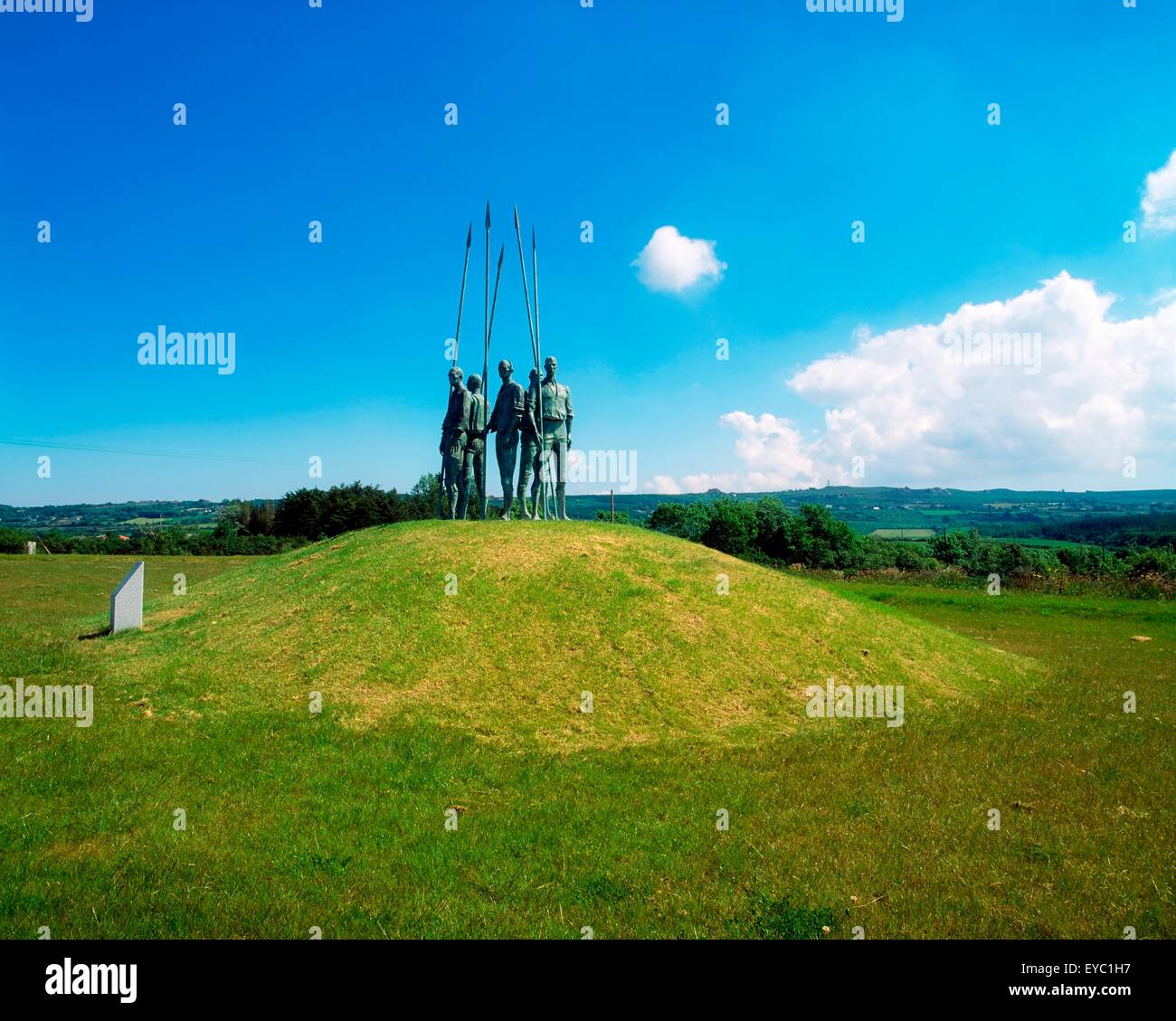 Enniscorthy, Co Wexford, Ireland; Statues Commemorating The Irish Rebellion Of 1798 Stock Photohttps://www.alamy.com/image-license-details/?v=1https://www.alamy.com/stock-photo-enniscorthy-co-wexford-ireland-statues-commemorating-the-irish-rebellion-85701875.html
Enniscorthy, Co Wexford, Ireland; Statues Commemorating The Irish Rebellion Of 1798 Stock Photohttps://www.alamy.com/image-license-details/?v=1https://www.alamy.com/stock-photo-enniscorthy-co-wexford-ireland-statues-commemorating-the-irish-rebellion-85701875.htmlRMEYC1H7–Enniscorthy, Co Wexford, Ireland; Statues Commemorating The Irish Rebellion Of 1798
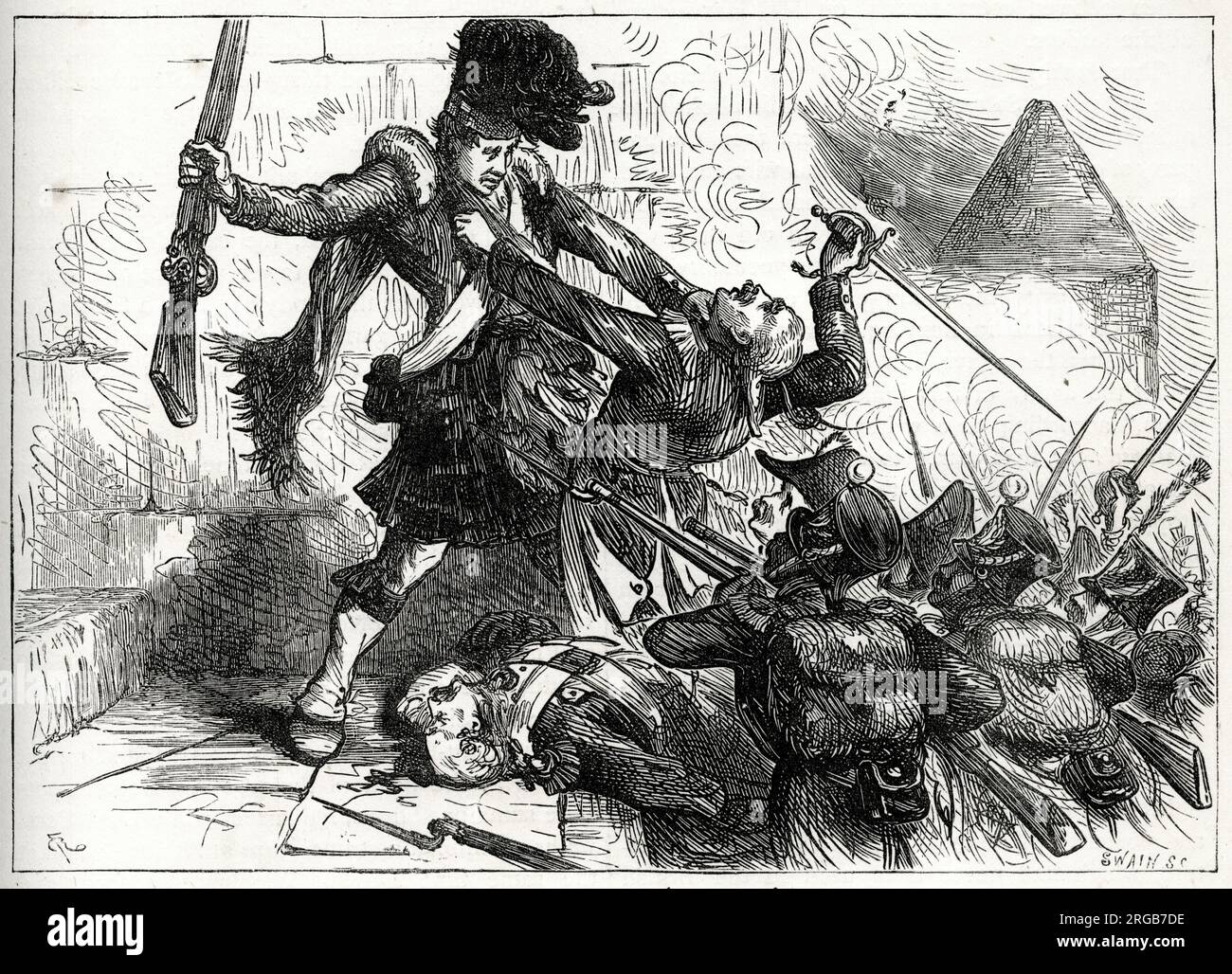 The Fraser Sentinel (of the Fraser Fencible Highlanders), Wexford Rebellion, Ireland, May to June 1798. The sentinel refused to leave his post in the face of an attack by French soldiers, despite being told to retreat, and was eventually killed. Stock Photohttps://www.alamy.com/image-license-details/?v=1https://www.alamy.com/the-fraser-sentinel-of-the-fraser-fencible-highlanders-wexford-rebellion-ireland-may-to-june-1798-the-sentinel-refused-to-leave-his-post-in-the-face-of-an-attack-by-french-soldiers-despite-being-told-to-retreat-and-was-eventually-killed-image560813610.html
The Fraser Sentinel (of the Fraser Fencible Highlanders), Wexford Rebellion, Ireland, May to June 1798. The sentinel refused to leave his post in the face of an attack by French soldiers, despite being told to retreat, and was eventually killed. Stock Photohttps://www.alamy.com/image-license-details/?v=1https://www.alamy.com/the-fraser-sentinel-of-the-fraser-fencible-highlanders-wexford-rebellion-ireland-may-to-june-1798-the-sentinel-refused-to-leave-his-post-in-the-face-of-an-attack-by-french-soldiers-despite-being-told-to-retreat-and-was-eventually-killed-image560813610.htmlRM2RGB7DE–The Fraser Sentinel (of the Fraser Fencible Highlanders), Wexford Rebellion, Ireland, May to June 1798. The sentinel refused to leave his post in the face of an attack by French soldiers, despite being told to retreat, and was eventually killed.
 “Carousal and Plunder at the Palace of the Bishop of Ferns”. Illustration by George Cruikshank. An incident during the Irish Rebellion of 1798. The Bishop’s palace and library were destroyed by rebels. From History of the Irish Rebellion in 1798; with Memoirs of the Union, and Emmett’s Insurrection in 1803 by W.H. Maxwell. Published in London 1854. Stock Photohttps://www.alamy.com/image-license-details/?v=1https://www.alamy.com/carousal-and-plunder-at-the-palace-of-the-bishop-of-ferns-illustration-by-george-cruikshank-an-incident-during-the-irish-rebellion-of-1798-the-bishops-palace-and-library-were-destroyed-by-rebels-from-history-of-the-irish-rebellion-in-1798-with-memoirs-of-the-union-and-emmetts-insurrection-in-1803-by-wh-maxwell-published-in-london-1854-image209749446.html
“Carousal and Plunder at the Palace of the Bishop of Ferns”. Illustration by George Cruikshank. An incident during the Irish Rebellion of 1798. The Bishop’s palace and library were destroyed by rebels. From History of the Irish Rebellion in 1798; with Memoirs of the Union, and Emmett’s Insurrection in 1803 by W.H. Maxwell. Published in London 1854. Stock Photohttps://www.alamy.com/image-license-details/?v=1https://www.alamy.com/carousal-and-plunder-at-the-palace-of-the-bishop-of-ferns-illustration-by-george-cruikshank-an-incident-during-the-irish-rebellion-of-1798-the-bishops-palace-and-library-were-destroyed-by-rebels-from-history-of-the-irish-rebellion-in-1798-with-memoirs-of-the-union-and-emmetts-insurrection-in-1803-by-wh-maxwell-published-in-london-1854-image209749446.htmlRMP56WFJ–“Carousal and Plunder at the Palace of the Bishop of Ferns”. Illustration by George Cruikshank. An incident during the Irish Rebellion of 1798. The Bishop’s palace and library were destroyed by rebels. From History of the Irish Rebellion in 1798; with Memoirs of the Union, and Emmett’s Insurrection in 1803 by W.H. Maxwell. Published in London 1854.
 1798 HERETIC BULLETS Stock Photohttps://www.alamy.com/image-license-details/?v=1https://www.alamy.com/1798-heretic-bullets-image222903864.html
1798 HERETIC BULLETS Stock Photohttps://www.alamy.com/image-license-details/?v=1https://www.alamy.com/1798-heretic-bullets-image222903864.htmlRMPXJ448–1798 HERETIC BULLETS
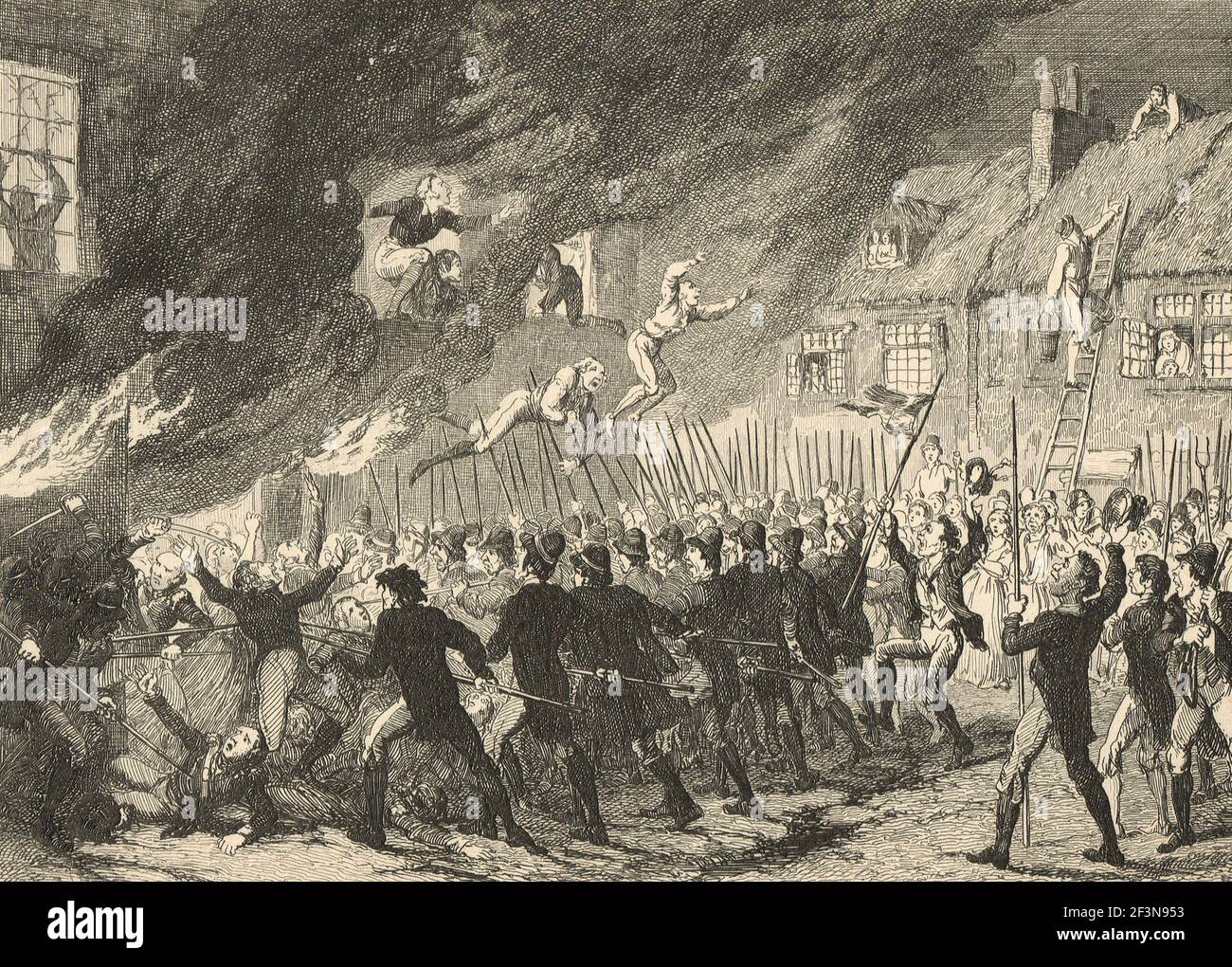 The Battle of Prosperous, County Kildare, 24 May 1798, during the Irish Rebellion of 1798 Stock Photohttps://www.alamy.com/image-license-details/?v=1https://www.alamy.com/the-battle-of-prosperous-county-kildare-24-may-1798-during-the-irish-rebellion-of-1798-image415360991.html
The Battle of Prosperous, County Kildare, 24 May 1798, during the Irish Rebellion of 1798 Stock Photohttps://www.alamy.com/image-license-details/?v=1https://www.alamy.com/the-battle-of-prosperous-county-kildare-24-may-1798-during-the-irish-rebellion-of-1798-image415360991.htmlRM2F3N953–The Battle of Prosperous, County Kildare, 24 May 1798, during the Irish Rebellion of 1798
 Wicklow, Co Wicklow, Ireland; Monument To Billy Byrne And The 1798 Uprising Stock Photohttps://www.alamy.com/image-license-details/?v=1https://www.alamy.com/stock-photo-wicklow-co-wicklow-ireland-monument-to-billy-byrne-and-the-1798-uprising-32482072.html
Wicklow, Co Wicklow, Ireland; Monument To Billy Byrne And The 1798 Uprising Stock Photohttps://www.alamy.com/image-license-details/?v=1https://www.alamy.com/stock-photo-wicklow-co-wicklow-ireland-monument-to-billy-byrne-and-the-1798-uprising-32482072.htmlRMBTRK60–Wicklow, Co Wicklow, Ireland; Monument To Billy Byrne And The 1798 Uprising
 A statue commemorating the 1798 Rebelion in Enniscorthy town centre, Co Wexford, Eire. Stock Photohttps://www.alamy.com/image-license-details/?v=1https://www.alamy.com/stock-photo-a-statue-commemorating-the-1798-rebelion-in-enniscorthy-town-centre-29403053.html
A statue commemorating the 1798 Rebelion in Enniscorthy town centre, Co Wexford, Eire. Stock Photohttps://www.alamy.com/image-license-details/?v=1https://www.alamy.com/stock-photo-a-statue-commemorating-the-1798-rebelion-in-enniscorthy-town-centre-29403053.htmlRMBKRBW1–A statue commemorating the 1798 Rebelion in Enniscorthy town centre, Co Wexford, Eire.
 Ireland Dublin St Stephen's Green bronze statue of Wolfe Tone 1763 1798 bicyclists in plaza Stock Photohttps://www.alamy.com/image-license-details/?v=1https://www.alamy.com/ireland-dublin-st-stephens-green-bronze-statue-of-wolfe-tone-1763-image8494164.html
Ireland Dublin St Stephen's Green bronze statue of Wolfe Tone 1763 1798 bicyclists in plaza Stock Photohttps://www.alamy.com/image-license-details/?v=1https://www.alamy.com/ireland-dublin-st-stephens-green-bronze-statue-of-wolfe-tone-1763-image8494164.htmlRMAK2KH5–Ireland Dublin St Stephen's Green bronze statue of Wolfe Tone 1763 1798 bicyclists in plaza
 James Johnson (February 1777 - October 10, 1845) was an Irish physician and writer on diseases of tropical climates. Born in Ireland, at the early age of 15 he became an apprentice to a surgeon-apothecary. In 1798 he moved to London and passed the surgeon's examination. He was appointed surgeons's mate on a naval vessel. In 1800 he took part in an expedition to Egypt and, in 1803, sailed for India. Stock Photohttps://www.alamy.com/image-license-details/?v=1https://www.alamy.com/james-johnson-february-1777-october-10-1845-was-an-irish-physician-and-writer-on-diseases-of-tropical-climates-born-in-ireland-at-the-early-age-of-15-he-became-an-apprentice-to-a-surgeon-apothecary-in-1798-he-moved-to-london-and-passed-the-surgeons-examination-he-was-appointed-surgeonss-mate-on-a-naval-vessel-in-1800-he-took-part-in-an-expedition-to-egypt-and-in-1803-sailed-for-india-image246623378.html
James Johnson (February 1777 - October 10, 1845) was an Irish physician and writer on diseases of tropical climates. Born in Ireland, at the early age of 15 he became an apprentice to a surgeon-apothecary. In 1798 he moved to London and passed the surgeon's examination. He was appointed surgeons's mate on a naval vessel. In 1800 he took part in an expedition to Egypt and, in 1803, sailed for India. Stock Photohttps://www.alamy.com/image-license-details/?v=1https://www.alamy.com/james-johnson-february-1777-october-10-1845-was-an-irish-physician-and-writer-on-diseases-of-tropical-climates-born-in-ireland-at-the-early-age-of-15-he-became-an-apprentice-to-a-surgeon-apothecary-in-1798-he-moved-to-london-and-passed-the-surgeons-examination-he-was-appointed-surgeonss-mate-on-a-naval-vessel-in-1800-he-took-part-in-an-expedition-to-egypt-and-in-1803-sailed-for-india-image246623378.htmlRMT96JHP–James Johnson (February 1777 - October 10, 1845) was an Irish physician and writer on diseases of tropical climates. Born in Ireland, at the early age of 15 he became an apprentice to a surgeon-apothecary. In 1798 he moved to London and passed the surgeon's examination. He was appointed surgeons's mate on a naval vessel. In 1800 he took part in an expedition to Egypt and, in 1803, sailed for India.
 A memorial stone, surrounded by oak trees, marks The Croppy Grove, John F. Kennedy Arboretum, Co Wexford, Ireland. Stock Photohttps://www.alamy.com/image-license-details/?v=1https://www.alamy.com/stock-photo-a-memorial-stone-surrounded-by-oak-trees-marks-the-croppy-grove-john-29449286.html
A memorial stone, surrounded by oak trees, marks The Croppy Grove, John F. Kennedy Arboretum, Co Wexford, Ireland. Stock Photohttps://www.alamy.com/image-license-details/?v=1https://www.alamy.com/stock-photo-a-memorial-stone-surrounded-by-oak-trees-marks-the-croppy-grove-john-29449286.htmlRMBKWET6–A memorial stone, surrounded by oak trees, marks The Croppy Grove, John F. Kennedy Arboretum, Co Wexford, Ireland.
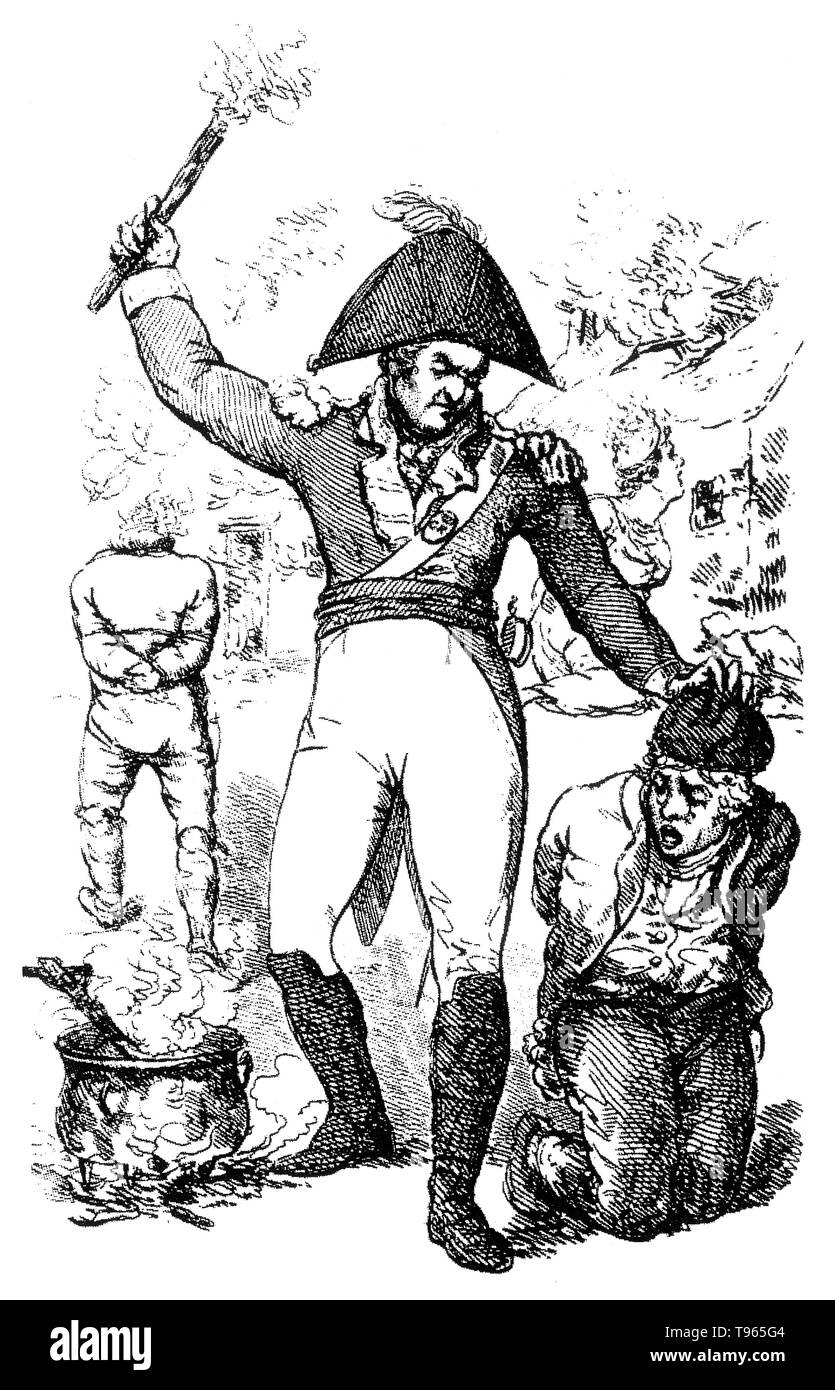 Pitchcapping was a form of torture used by the military against suspected Irish rebels during the period of the 1798 rebellion. The process involved pouring hot pitch, or tar, into a conical shaped paper cap, which was forced onto a bound suspect's head, allowed to cool, then rapidly removed, taking with it a portion of the suspect's skin and tissue. Less elaborate versions included smearing a cloth or piece of paper with pitch and pressing onto the head of the intended victim. Stock Photohttps://www.alamy.com/image-license-details/?v=1https://www.alamy.com/pitchcapping-was-a-form-of-torture-used-by-the-military-against-suspected-irish-rebels-during-the-period-of-the-1798-rebellion-the-process-involved-pouring-hot-pitch-or-tar-into-a-conical-shaped-paper-cap-which-was-forced-onto-a-bound-suspects-head-allowed-to-cool-then-rapidly-removed-taking-with-it-a-portion-of-the-suspects-skin-and-tissue-less-elaborate-versions-included-smearing-a-cloth-or-piece-of-paper-with-pitch-and-pressing-onto-the-head-of-the-intended-victim-image246613140.html
Pitchcapping was a form of torture used by the military against suspected Irish rebels during the period of the 1798 rebellion. The process involved pouring hot pitch, or tar, into a conical shaped paper cap, which was forced onto a bound suspect's head, allowed to cool, then rapidly removed, taking with it a portion of the suspect's skin and tissue. Less elaborate versions included smearing a cloth or piece of paper with pitch and pressing onto the head of the intended victim. Stock Photohttps://www.alamy.com/image-license-details/?v=1https://www.alamy.com/pitchcapping-was-a-form-of-torture-used-by-the-military-against-suspected-irish-rebels-during-the-period-of-the-1798-rebellion-the-process-involved-pouring-hot-pitch-or-tar-into-a-conical-shaped-paper-cap-which-was-forced-onto-a-bound-suspects-head-allowed-to-cool-then-rapidly-removed-taking-with-it-a-portion-of-the-suspects-skin-and-tissue-less-elaborate-versions-included-smearing-a-cloth-or-piece-of-paper-with-pitch-and-pressing-onto-the-head-of-the-intended-victim-image246613140.htmlRMT965G4–Pitchcapping was a form of torture used by the military against suspected Irish rebels during the period of the 1798 rebellion. The process involved pouring hot pitch, or tar, into a conical shaped paper cap, which was forced onto a bound suspect's head, allowed to cool, then rapidly removed, taking with it a portion of the suspect's skin and tissue. Less elaborate versions included smearing a cloth or piece of paper with pitch and pressing onto the head of the intended victim.
 Town in Ireland - Aughrim, County Wicklow, Republic of Ireland, Europe Stock Photohttps://www.alamy.com/image-license-details/?v=1https://www.alamy.com/town-in-ireland-aughrim-county-wicklow-republic-of-ireland-europe-image66243301.html
Town in Ireland - Aughrim, County Wicklow, Republic of Ireland, Europe Stock Photohttps://www.alamy.com/image-license-details/?v=1https://www.alamy.com/town-in-ireland-aughrim-county-wicklow-republic-of-ireland-europe-image66243301.htmlRMDRNJ05–Town in Ireland - Aughrim, County Wicklow, Republic of Ireland, Europe
 Ireland, Dublin, Trinity college, inner courtyard, regent House, Chapel, in 1798, students, Stock Photohttps://www.alamy.com/image-license-details/?v=1https://www.alamy.com/stock-photo-ireland-dublin-trinity-college-inner-courtyard-regent-house-chapel-123166110.html
Ireland, Dublin, Trinity college, inner courtyard, regent House, Chapel, in 1798, students, Stock Photohttps://www.alamy.com/image-license-details/?v=1https://www.alamy.com/stock-photo-ireland-dublin-trinity-college-inner-courtyard-regent-house-chapel-123166110.htmlRMH4AKHJ–Ireland, Dublin, Trinity college, inner courtyard, regent House, Chapel, in 1798, students,
 'Ireland Divided into Provinces and Counties.' Map shows geographic divisions circa 1798. This is a beautifully detailed historic map reproduction. Original from a British atlas published by famed cartographer William Faden. Stock Photohttps://www.alamy.com/image-license-details/?v=1https://www.alamy.com/ireland-divided-into-provinces-and-counties-map-shows-geographic-divisions-circa-1798-this-is-a-beautifully-detailed-historic-map-reproduction-original-from-a-british-atlas-published-by-famed-cartographer-william-faden-image356576711.html
'Ireland Divided into Provinces and Counties.' Map shows geographic divisions circa 1798. This is a beautifully detailed historic map reproduction. Original from a British atlas published by famed cartographer William Faden. Stock Photohttps://www.alamy.com/image-license-details/?v=1https://www.alamy.com/ireland-divided-into-provinces-and-counties-map-shows-geographic-divisions-circa-1798-this-is-a-beautifully-detailed-historic-map-reproduction-original-from-a-british-atlas-published-by-famed-cartographer-william-faden-image356576711.htmlRM2BM3D6F–'Ireland Divided into Provinces and Counties.' Map shows geographic divisions circa 1798. This is a beautifully detailed historic map reproduction. Original from a British atlas published by famed cartographer William Faden.
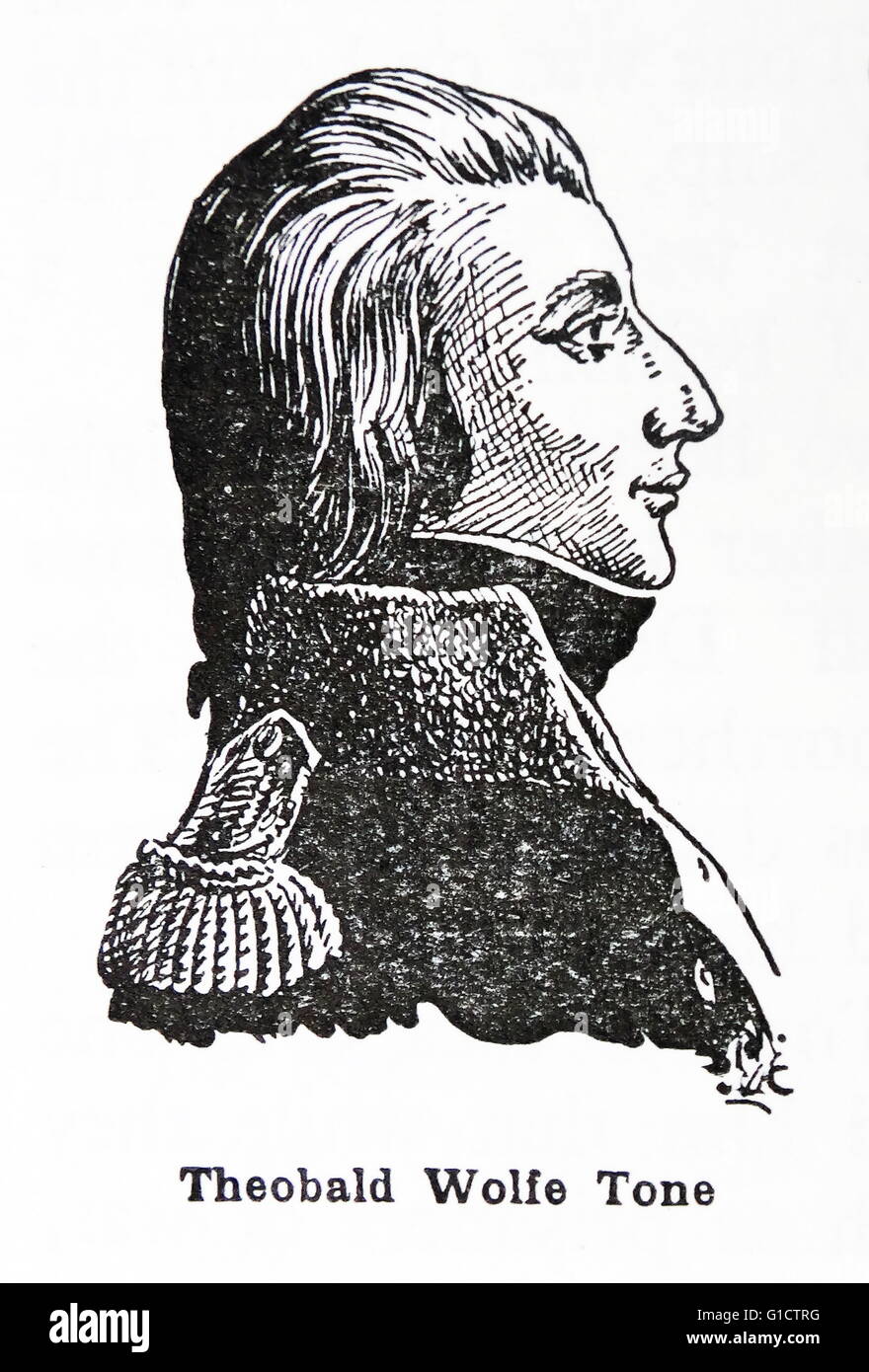 Wolfe Tone (20 June 1763 – 19 November 1798); was a leading Irish revolutionary figure and one of the founding members of the United Irishmen and is regarded as the father of Irish republicanism. Stock Photohttps://www.alamy.com/image-license-details/?v=1https://www.alamy.com/stock-photo-wolfe-tone-20-june-1763-19-november-1798-was-a-leading-irish-revolutionary-104159764.html
Wolfe Tone (20 June 1763 – 19 November 1798); was a leading Irish revolutionary figure and one of the founding members of the United Irishmen and is regarded as the father of Irish republicanism. Stock Photohttps://www.alamy.com/image-license-details/?v=1https://www.alamy.com/stock-photo-wolfe-tone-20-june-1763-19-november-1798-was-a-leading-irish-revolutionary-104159764.htmlRMG1CTRG–Wolfe Tone (20 June 1763 – 19 November 1798); was a leading Irish revolutionary figure and one of the founding members of the United Irishmen and is regarded as the father of Irish republicanism.